

AIRCRAFT IT Operations

AIRCRAFTIT Operations
Publisher/Editor
Ed Haskey
E-mail: ed.haskey@aircraftit.com
Telephone: +44 1273 454 235
Website: www.aircraftIT.com
Chief Operating Officer
Scott Leslie
E-mail: scott.leslie@aircraftit.com
Copy Editor/Contributor
John Hancock
E-mail: john@aircraftit.com
Magazine Production
Dean Cook
E-mail: deancook@magazineproduction.com
AircraftIT Operations is published bi-monthly and is an affiliate of Aircraft Commerce and part of the AviationNextGen Ltd group. The entire contents within this publication © Copyright 2024 AviationNextGen Ltd an independent publication and not affiliated with any of the IT vendors or suppliers. Content may not be reproduced without the strict written agreement of the publisher. The views and opinions expressed in this publication are the views of the authors and do not necessarily reflect the views or policies of their companies or of the publisher. The publisher does not guarantee the source, originality, accuracy, completeness or reliability of any statement, information, data, finding, interpretation, advice, opinion, or view presented.
COMMENT
Aircraft IT Operations: IT solutions that keep you ahead of an ever-changing world of Operations IT issues and topics
WORDS: ED HASKEY
Some topics just never seem to go away. In airline operations, that topic is fuel efficiency and emissions reduction. With fuel being the largest single operating cost for airlines, it makes good sense to manage it as well as possible and use it as efficiently as possible. But, today, there is an additional imperative in the global drive to net zero CO2 emissions. Although aviation accounts for only 2.5 percent of global CO2 emissions it is, nonetheless a high-profile target for campaigners plus, there are a number of schemes in operation, including EU ETS and CORSIA, to charge airlines for increases in CO2 emissions or failure to reduce emissions to prescribed levels. That continuing importance of fuel efficiency and emissions reduction is reflected in this issue with articles on the subject.
From Swiss International there is a case study on the airline’s new weather solution, keeping pilots informed of weather in good time. The case study from Transavia France tells of the importance of involving pilots from the outset in any new IT-based fuel and emissions solution. Another important element in fuel and CO2 management is the flight path and our case study from Scandinavian Airlines (SAS) is about the flight path optimization tool that has addressed that issue for the airline.
As a start-up operation, PLAY Airlines wanted an Operations IT solution that would do everything for them: their case study tells how they found that solution and the value gained for the airline. Documentation is another key requirement of running any airline but paper is a bulky, hard to manage and environmentally unfriendly medium so a digital paperless solution is the way forward. In another case study, Lufthansa City Airlines shares the experience of updating documentation and harmonizing flight operations systems.
The ’How IT Works’ article in this issue, from EFB Admin Services, is about the impact of new technologies, especially AI and ML on EFBs, both the benefits and the challenges that will need to be addressed.
As well as Vendor Flight Logs from SkyNet Aviation, Avionics Support Group (ASG) , Evoke Systems, The Weather Company, Web Manuals, NAV Flight Services and Nabla Mobility, we have the regular round-up of news and technology developments: plus, the comprehensive `Operations Software Directory’. Aircraft IT Operations: developments in the latest IT solutions addressing perennial challenges.
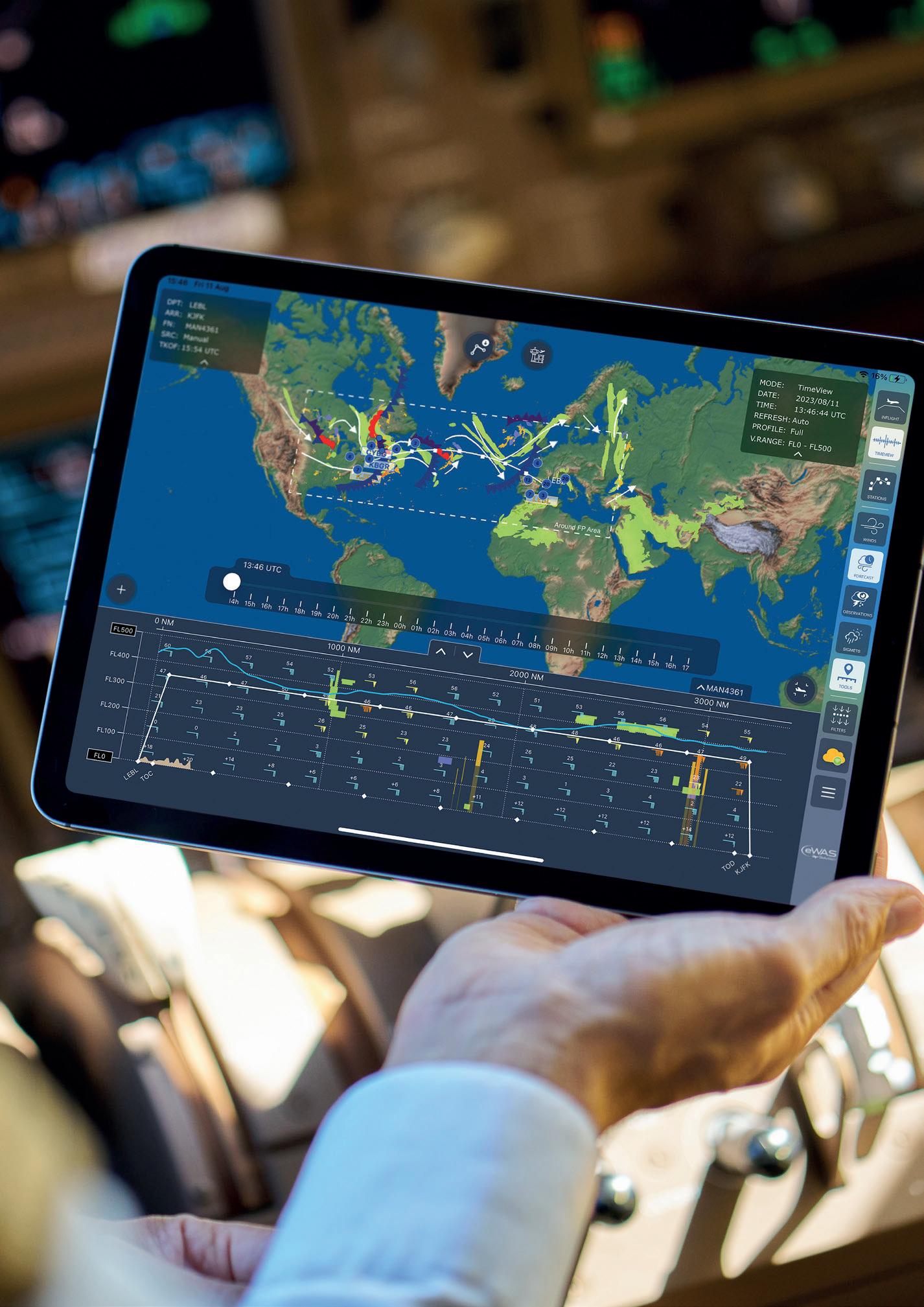
EMPOWER YOUR PILOTS TO AVOID THE AVOIDABLE
SITA eWAS
Our weather application provides more than 40,000 pilots with enhanced weather situational awareness today to anticipate adverse weather phenomena and efficiently plan their flights, creating a safer and more comfortable travel experience for crew and passengers alike.
Latest News and Technology updates
Keep up to date with the changing world of IT.
34 CASE STUDY: Swiss gets good weather information when it’s needed
Martin Gerber — Pilot / Project Manager — Swiss International Air Lines
Weather is key to flying: Swiss International Air Lines wanted the best service for delivering weather information to pilots and others.
46 VENDOR FLIGHT LOG: Nabla Mobility
Shinji Tanaka, CEO, NABLA Mobility, completes his `Flight Log’ for Aircraft IT.
48 CASE STUDY: Lufthansa City Airlines
Dominik Weber, Head of Flight Operations Support, Lufthansa City Airlines and Maike Upmann, Product Manager, Lufthansa Industry Solutions
How the Lufthansa Group has harmonized flight operations systems with a new documentation solution, and the benefits gained.
56 VENDOR FLIGHT LOG: Web Manuals
Richard Sandström, founder and CTO, Web Manuals, completes his `Flight Log’ for Aircraft IT
58 HOW IT WORKS: EFB and the rise of new technologies
Klaus Olsen, CEO, EFB Admin Services
Development such as AI and ML plus the Cloud will add capability to EFB but will also bring cybersecurity challenges.
CONTENTS
65 VENDOR FLIGHT LOG: Avionics Support Group, Inc. (ASG)
Carlos Monsalve, VP Sales and Business Development, Avionics Support Group, Inc. (ASG), completes his ‘Flight Log’ for Aircraft IT.
66 CASE STUDY: Greater fuel efficiency at SAS
Svein Erik Jackwitz Fuel Efficiency Specialist, Scandinavian Airlines and David Rytter, CEO, AVTECH
How Scandinavian Airlines (SAS) got a better flight path optimization tool, and information about the tool itself.
76 VENDOR FLIGHT LOG: The Weather Company
Ravi Vanmali, Head of Aviation, The Weather Company, completes his `Flight Log’ for Aircraft IT
78 CASE STUDY: Play Airlines gets efficiency and future-proofed
Halldor Gudfinnsson, Director Flight Operations and Tómas Ingi Gunnarsson, Supervisor Dispatch, both at PLAY Airlines
PLAY Airlines wanted an Operations IT solution to do everything. This case study tells how they found it and how it works for them now.
84 VENDOR FLIGHT LOG: SkyNet Aviation
Paul Chevalier, General Manager, SkyNet Aviation, completes his ‘Flight Log’ for Aircraft IT.
86 The World according to IT & Me Paul Saunders
Paul traces the ways in which forms have evolved from a tedious task to something useful.
88 VENDOR FLIGHT LOG: Evoke Systems
Craig Howard, CEO of Evoke Systems Limited, completes his `Flight Log’ for Aircraft IT
90 CASE STUDY: The path to fuel efficiency success at Transavia France
Emmanuel de Norman Captain B737 — Deputy Chief Pilot at TRANSAVIA France
When Transavia France decided to adopt the latest fuel efficiency solution and app, they made sure to involve pilots first and foremost.
96 VENDOR FLIGHT LOG: Nav Flight Services
Petr Frolík, Commercial Director, NAV Flight Services®, completes his `Flight Log’ for Aircraft IT
98 Operations Software directory
A detailed look at the world’s leading Operations IT systems.
New Vendors
Our vendors keep Aircraft IT at the forefront of informing aviation operations professionals about the latest developments and how they have worked in real-world practice. In this issue, we welcome two new vendors with offers in key areas of operations. Developed by Skyconseil, GUIDOR is a mission management app designed to revolutionize the way pilots manage their flights. GUIDOR leverages advanced IoT and AI technologies to provide pilots with real-time data and actionable insights. By not only displaying weather data but also using it to offer powerful situational awareness tools, GUIDOR ensures that pilots receive the right information at the right time, enhancing decision-making and flight safety, and reducing the risk of weather-related accidents. Its advanced features streamline flight operations, boosting efficiency and leading to higher customer satisfaction and brand loyalty.
Additionally, GUIDOR’s intelligent routing and fuel optimization contribute to a reduced environmental footprint, aligning with the industry’s sustainability goals. With GUIDOR, pilots and airlines can achieve unprecedented levels of operational excellence, safety, and environmental stewardship, making GUIDOR an indispensable tool for modern aviation.
Having provided professional flight planning services for over 30 years, NAV Flight Services offers a wide range of products and services. Key products, including: NAVsystem, the IFR Flight planning system, are the perfect tools for economical and safe flight planning. The optimum route function allows you to perfect fuel consumption. NAV Flight Services never stops updating the software, recently launching their latest product NAVlink, enabling FPL and wind uplinks to FMS via ACARS. NAV Flight Services runs
the Education and Training Center NAVacademy — where they combine theory with practice. The NAVacademy provides you and your flight dispatchers with all-in-one training.
NAV Flight Services is also ready to accommodate any individual training requests as well as also helping clients to develop solutions in these areas and tailor them for their specific flight operations. The selection of services wouldn’t be complete without their very own NAVjet supervising.
Welcoming the new vendors to the Aircraft IT community, COO Scott Leslie said, “As Aircraft IT goes from strength to strength, we never lose sight of the reality that it is vendors like Skyconseil and NAV Flight Services that keep our feet planted firmly among the people whose software ensures the efficient and safe operation of aviation.”

Emerald Airlines choose EFOS Training by Evoke Systems
In late July 2024, Evoke Systems was delighted to announce that Emerald Airlines has taken a significant stride in enhancing their crew training by selecting EFOS as their preferred Training Management System. The decision signifies the beginning of an exciting partnership designed to enhance and streamline Emerald Airlines’ training operations. This includes improvements across training delivery, monitoring, information management, compliance, data analysis and reporting. Above all, this collaboration promises to deliver a vastly improved experience for training teams, instructors, and crew members alike. System. From the outset, the Emerald Emerald Airlines. “

Mark Cunningham, Nominated Person Crew Training (NPCT) at Emerald Airlines added: “We are delighted to collaborate with the team at Evoke, leveraging their innovative EFOS system to streamline the training delivery to our Pilots and Cabin Crew. This partnership will ensure that both our training delivery and record storage are maintained to the highest standards of efficiency and accuracy, strengthening our overall training program. “
Emerald Airlines: As the exclusive operator of the Aer Lingus Regional route network, Emerald Airlines offers a range of solutions including Franchise, wet lease, and Private Charter flying.

REAL-TIME MONITORING
SAVE FUEL AND COOL CABIN ON GROUND
APU USAGE CONTROL
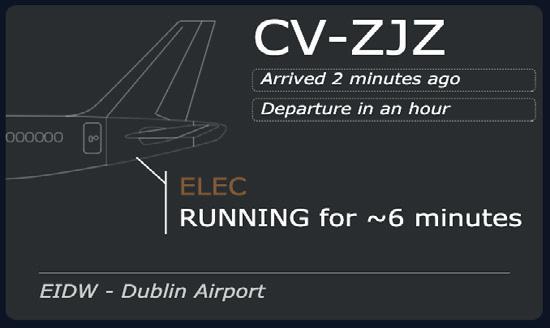
APU with AIR COND
TEMPERATURE CONTROL
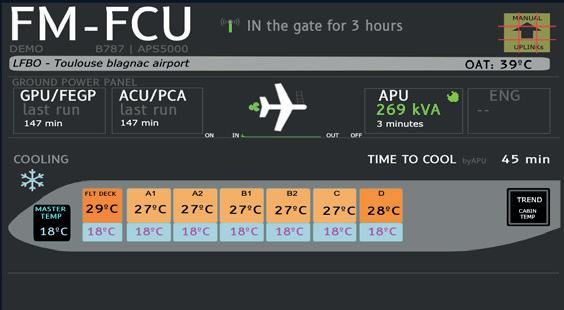
APU PREDICTIVE MAINT
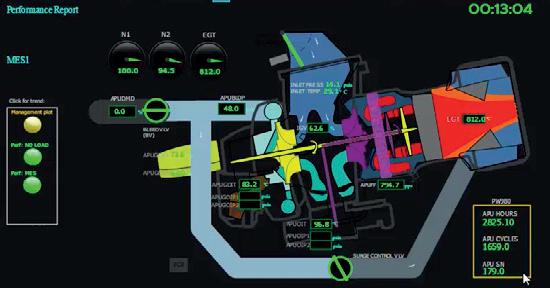
OTP MONITORING
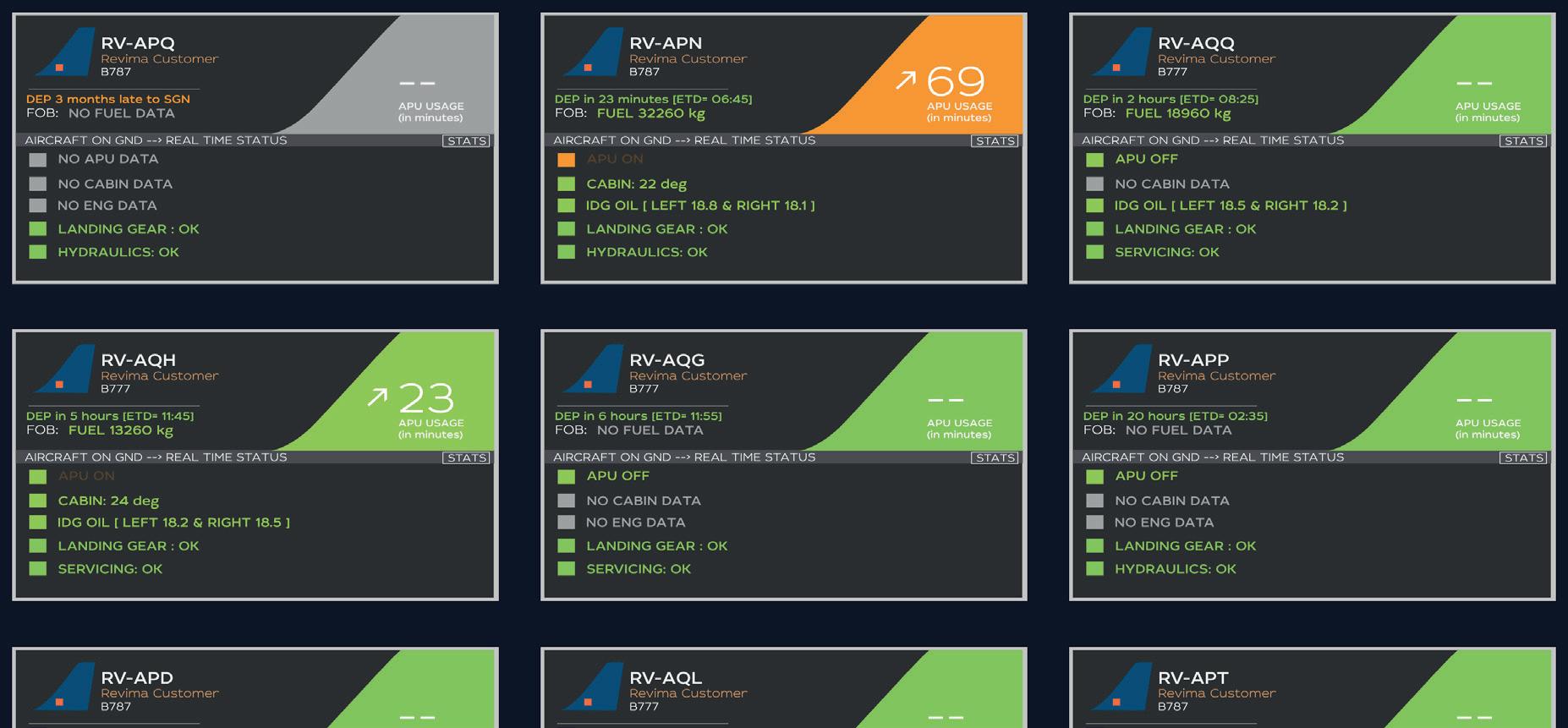

evolving Electronic Flight Bag (EFB) requirements for a more integrated and connected digital Flight Operations environment
TAP Air Portugal, that has been using NAVBLUE solutions since 2020, will now increase operational efficiency with Mission+ FLIGHT, the integrated electronic flight folder module of Mission+, NAVBLUE’s Electronic Flight
module for mission management that provides briefing packages, flight follow-up and reporting capabilities to pilots. The solution manages the data workflow between the Integrated Operations Centre (IOC) systems and the crew’s application on the flight deck. It also allows to monitor and archive all the exchanged mission data such as flight acceptance and post flight reports.

awareness while reducing their workload. Before and during flight, the solution provides briefing packages automatically on pilots’, operations team’s and dispatchers’ tablets. It is also compatible with FOMAX Aircraft Interface Device, a Flight Operations & Maintenance Exchanger currently equipped across parts of TAP’s fleet, that allows automatic retrieval of mission critical information overhead at each waypoint in the Mission+ FLIGHT Navlog. Flysmart+, NAVBLUE’s aircraft performance and Weight & Balance calculation tool, is integrated with Mission+ FLIGHT with:
• Launch buttons for all modules directly from Mission+ FLIGHT;
• Data communications between both solutions, allowing automatic retrieval from Mission+ FLIGHT to Flysmart+, of information such as departure and arrival airports, aircraft type, or registration number.
Marc Lemeilleur, CEO of NAVBLUE, said: “TAP Air Portugal was looking for a truly integrated and connected EFB environment to support their pilots’
pilots with better situational awareness, reducing their workload and manual entries, making their journey seamless while improving operational efficiency and safety of the airline”.
Mário Bento, TAP Air Portugal Flight Operations Director, added: “With the adoption of NAVBLUE’s state-of-theart EFB solutions, we aim to improve the pilot experience, streamline workflow in the cockpit to optimize flight management and take advantage of aircraft connectivity to foster better communication and coordination with our operational departments. This crucial step aligns with our commitment to digital transformation and sustainability, driving us towards a more innovative and ecofriendly future in aviation.”
TAP Air Portugal: Founded in March 1945, TAP Air Portugal is the flag carrier of Portugal, part of Star Alliance, and operates a fleet of 81 aircraft, all Airbus (A319, A320, A321, A330). The airline serves a complex network of routes to around 80 destinations in Europe, Americas and Africa.

Find change in complex content and technical information to improve your Document Management workflow
The most accurate and reliable software for finding and processing changes in your Aviation documents LEARN MORE


COMPARE
Find all changes in complex documents with 100% accuracy

CONFIGURE
Tailor the comparison process to fit your specific needs
PROCESS RESULTS
Transform the output to fit your existing workflow


info@deltaxml.com www.deltaxml.com

Comply365 and Vistair to unify brands as Comply365
In early June 2024, Comply365 and Vistair confirmed that they would unify the two brands as Comply365 with the strategic rebrand focused on operational transformation in Aviation, Defense & Rail. The unified brand of Comply365, effective immediately, reflects the company’s wider market offering empowering airline, rail and defense organizations with the only, all-in-one compliance, safety, training and data platform designed to keep customers’ teams and assets always geared for peak operational performance.
Comply365 and Vistair, who announced their merger in January this year, revealed in early June 2024 that they are consolidating their two brands into a single entity under the Comply365 name. The new Comply365 offers an even stronger, more
powerful combination of expertise and products underpinned by unified best practices, providing airlines, rail and defense organizations with a single digital platform to elevate operational excellence, transform safety management and training, with closer integration of relevant data sets across domains.

The unified digital platform by Comply365 ensures robust compliance within highly regulated and dynamic markets, removes operational data blind spots, and enables customers to unlock
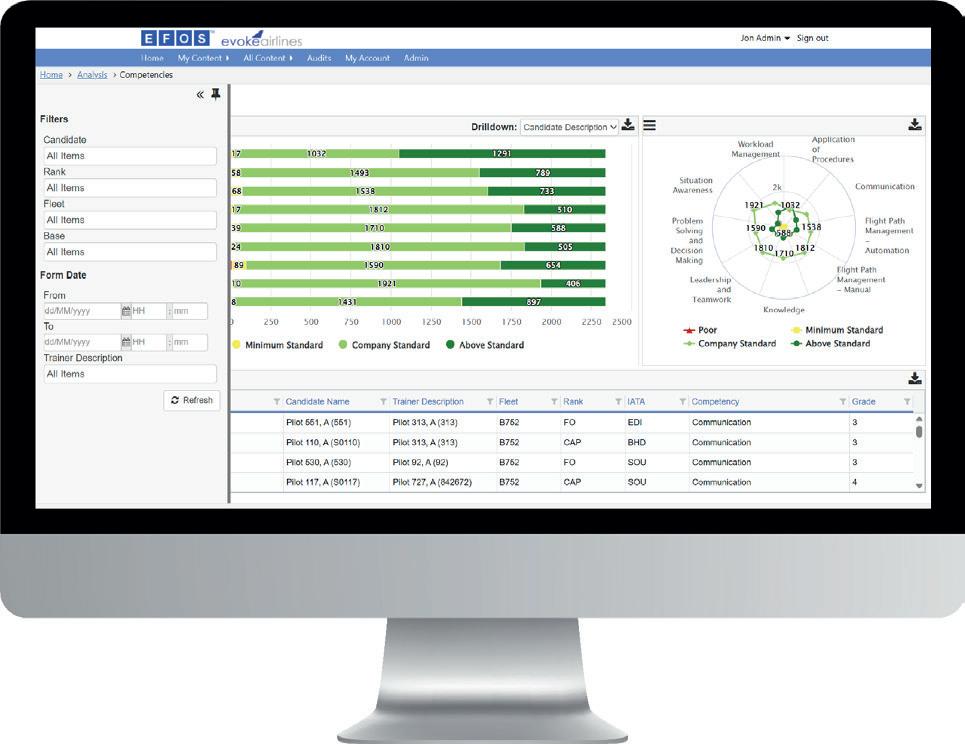
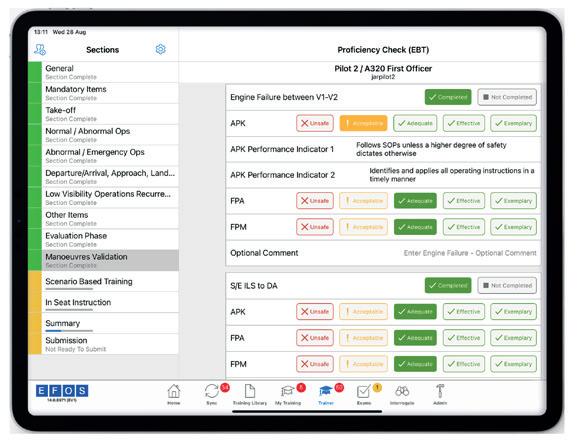
unparalleled operational efficiencies. It unshackles teams from a siloed approach with disconnected data by proving a more holistic, informed, and forward-looking view of operational data, enabling teams to deliver at the highest performance standards.
Rob Morgan, CEO of Comply365 said, “Following

the merger of Comply365 & Vistair, and coming together under the unified brand as Comply365, we will retain the core values and principles that have defined our success to date, while leveraging our combined expertise and strengths to set new benchmarks in operational performance for our customers. As the company continues to embark on this transformative journey, our customers can expect accelerated product innovation, deeper insight into industry best practice, and unwavering commitment to excellent customer service — all of which combine to unlock unparalleled financial and operational gains for our customers through more streamlined, robust and agile operations.” He continued, “Our unified brand marks a renewed dedication to shaping and leading the future of operational transformation across aviation, rail and defense, and building successful long-term partnerships with our customers.”
Alongside the unified company name, a fresh new brand identity for Comply365 will be launched.
Leveraging the Vistair visual identity and Comply365 name, it embraces the trust and familiarity of the company’s more than 120 existing customers worldwide, and one that will unify the company’s global presence to continue to drive innovation and support expansion in core markets.
FLYHT-WVSS-II ™
Now Accepting Orders For Scientists & Airlines.
FLYHT-WVSS-II™ meets internationally accepted standards to enable meteorological data collection for commercial aircraft, in support of the global WMO AMDAR program. The FLYHT-WVSS-II enhances meteorological operations and aviation weather support by providing:
• Water Vapor Concentration
• System Status Data
• Internal Pressure

• Internal Temperature
• Engineering Data

AirAsia renews its confidence in NAVBLUE, signing for a suite of solutions to improve flight operations, and becomes the first Mission+ FLIGHT customer in Malaysia
In mid-June 2024, AirAsia (AXM), the leading low-cost airline in South-East Asia and the largest by fleet size and destinations, announced that it has signed an agreement for N-Flight Planning, Mission+ FLIGHT and Flysmart+, three state-of-the-art NAVBLUE solutions which will help the airline digitalize and enhance its flight operations. Air Asia was also part of the Early Adopter Program with Mission+, providing feedback during the development and testing phase as NAVBLUE continues to innovate its next generation platform.
N-Flight Planning, NAVBLUE’s award-winning flight planning solution, has been chosen by AirAsia based on its track record of being one of the safest,
most efficient and optimized flight planning applications on the market. The scalability and customizability of N-Flight Planning makes it the ideal choice for AirAsia with its multiple bases of operations throughout the region, each with its own unique operational requirements and scale.
Mission+, NAVBLUE’s Electronic Flight Assistant (EFA), optimizes the pilot’s journey from preparation to closure of a flight: this EFA gathers all the information pilots need in one single application on a globe-centric display and reduces their workload, streamlining the flow of information between ground and onboard systems. AirAsia has selected Mission+ FLIGHT, a module of Mission+ for mission
management providing briefing packages, flight follow-up and reporting capabilities to pilots.
Flysmart+ continues to help the airline to optimize aircraft performance and Weight & Balance calculations, and to ease access to electronic documentation. It is also interfaced with Mission+, allowing quick access to mission information, time savings, and reduced risk of errors.
Through its subsidiaries, AirAsia will implement Mission+ FLIGHT, by the end of this year , across six affiliated airlines and four countries in Southeast Asia: Thailand (Thai AirAsia — AIQ and Thai AirAsia X — TAX); Indonesia (Indonesia AirAsia — AWQ); the Philippines (Philippines AirAsia — APQ) and of course Malaysia,

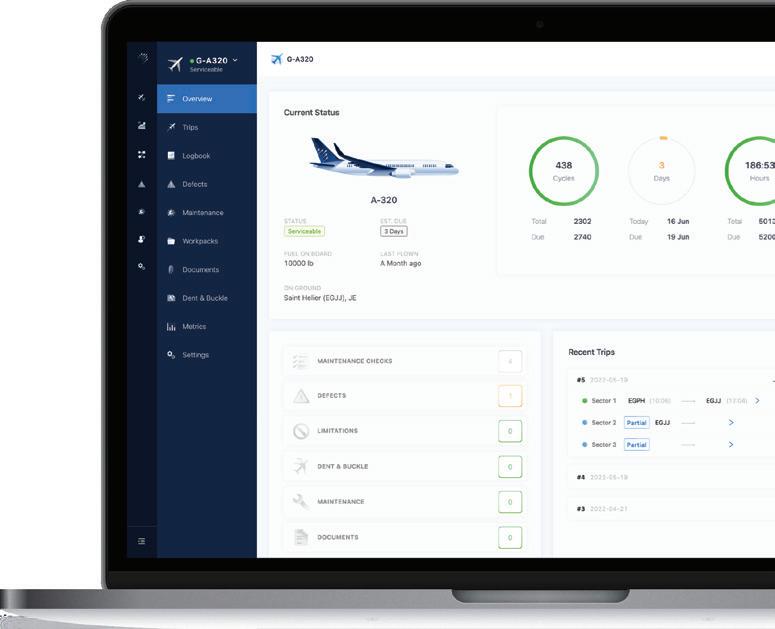

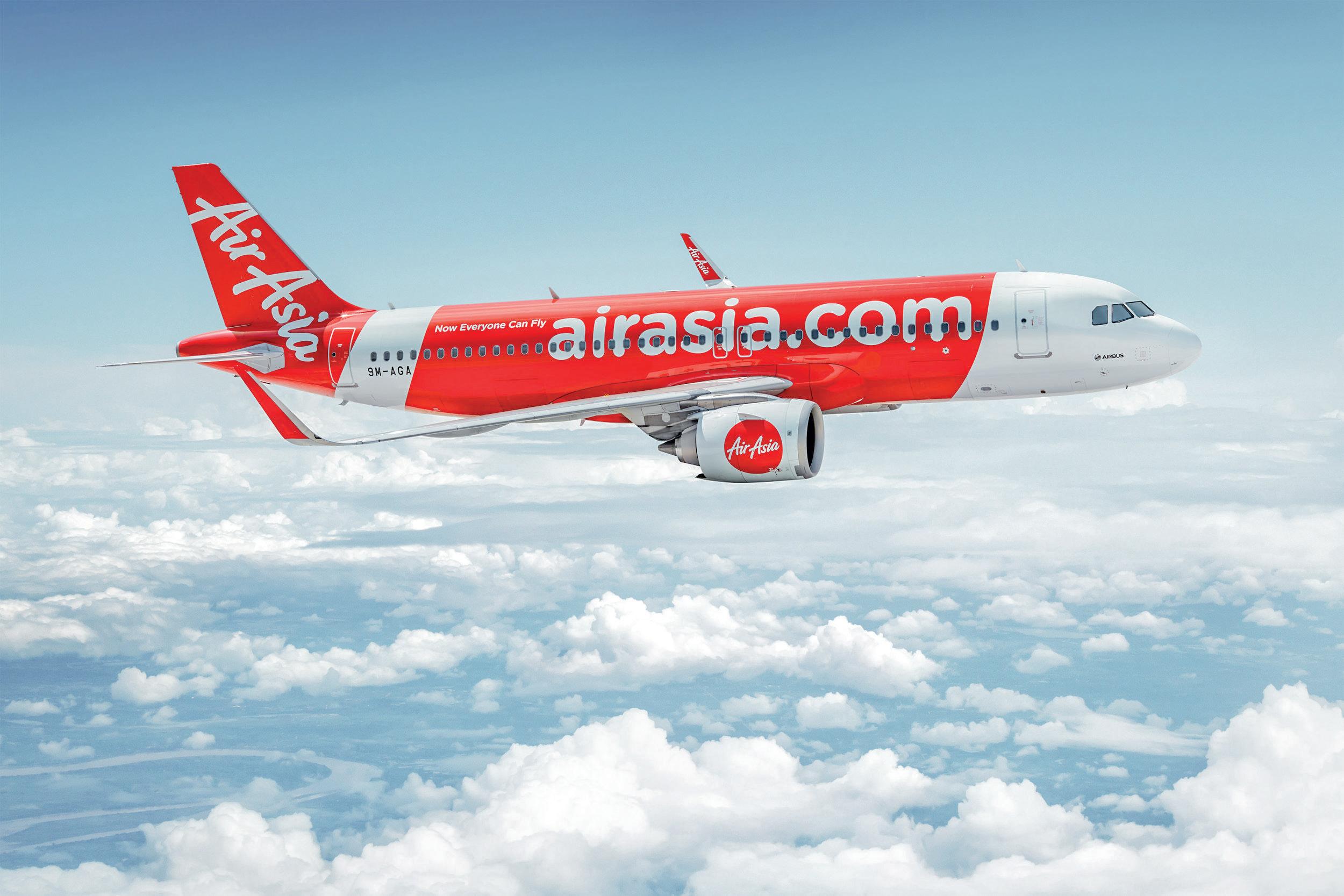
efficient and safe conditions, for the benefit of our customers.”
(OCC) systems, Flight Ops Engineering and Performance Based Navigation (PBN). With 500
its famous tagline ‘Now Everyone Can Fly’. Read the full story on Aircraft IT Website
easyJet to digitise onboard Aircraft
Technical Log to cut down on paper use and weight
By digitizing technical and cabin logbooks, new e-logs, announced in late June 2024 for easyJet, will save over 300,000 sheets of paper records from being printed and stored every year. Transitioning from paper to digital reporting will also increase efficiency for easyJet’s flight crew, cabin crew and engineering teams. The e-techlog system is from


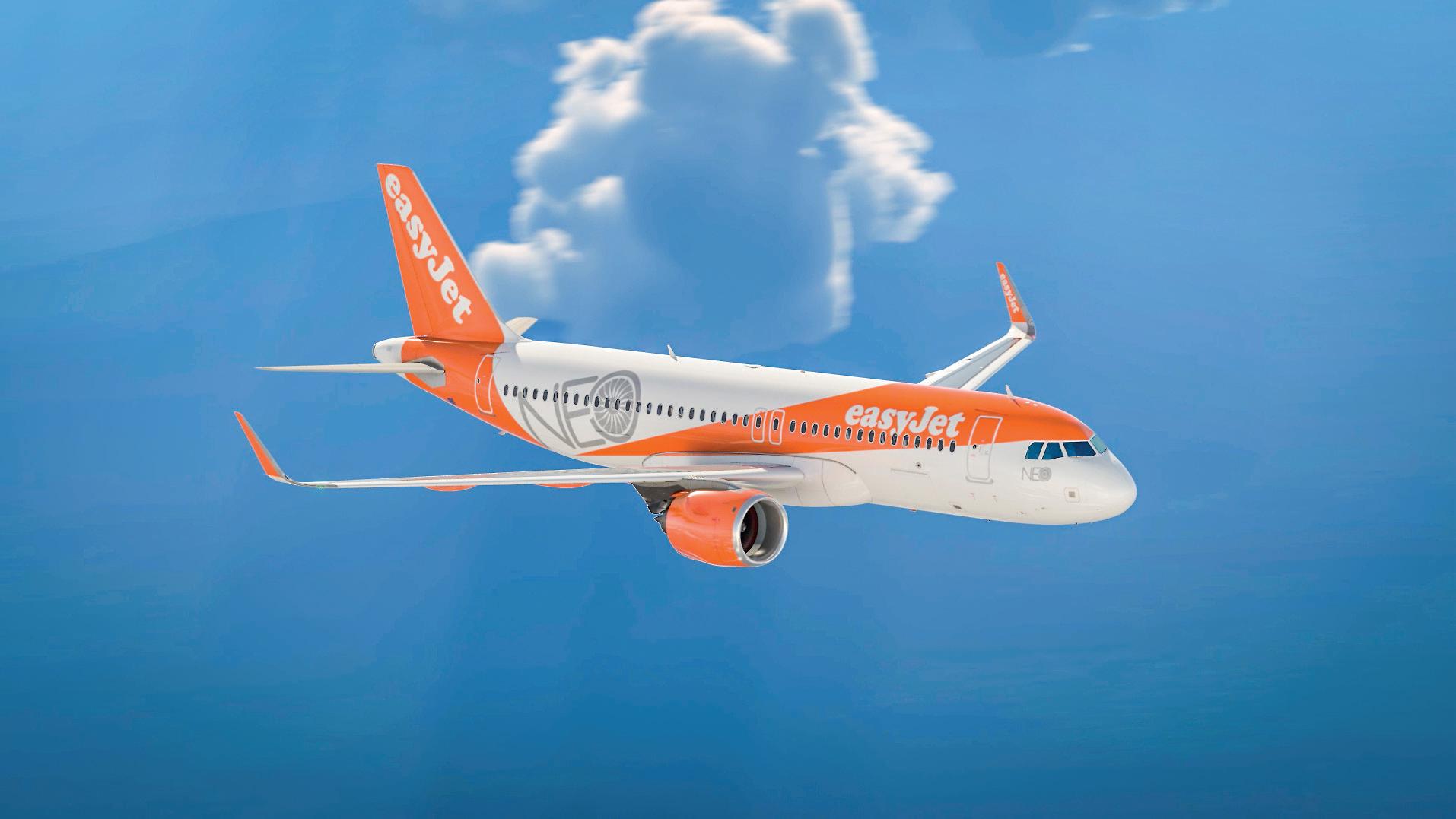
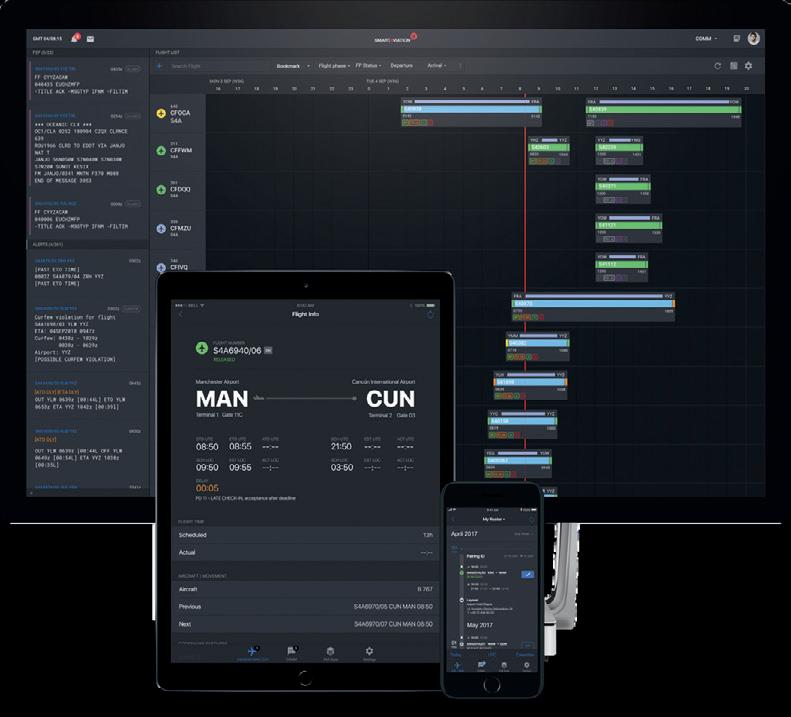
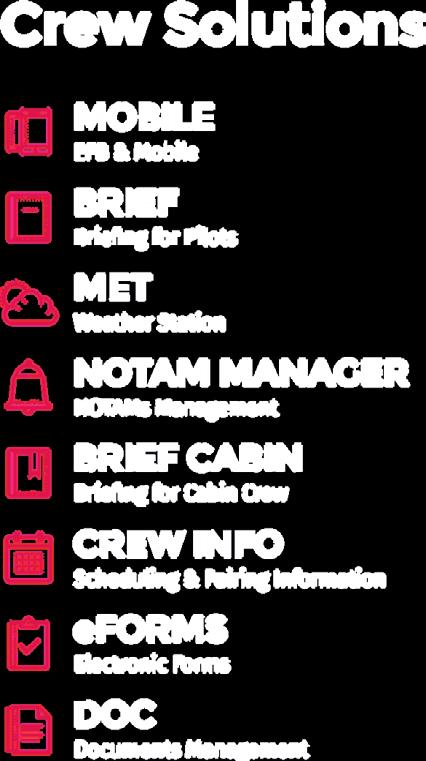
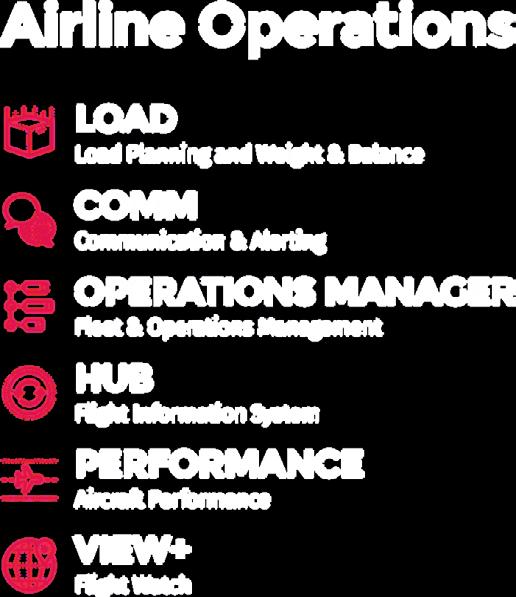
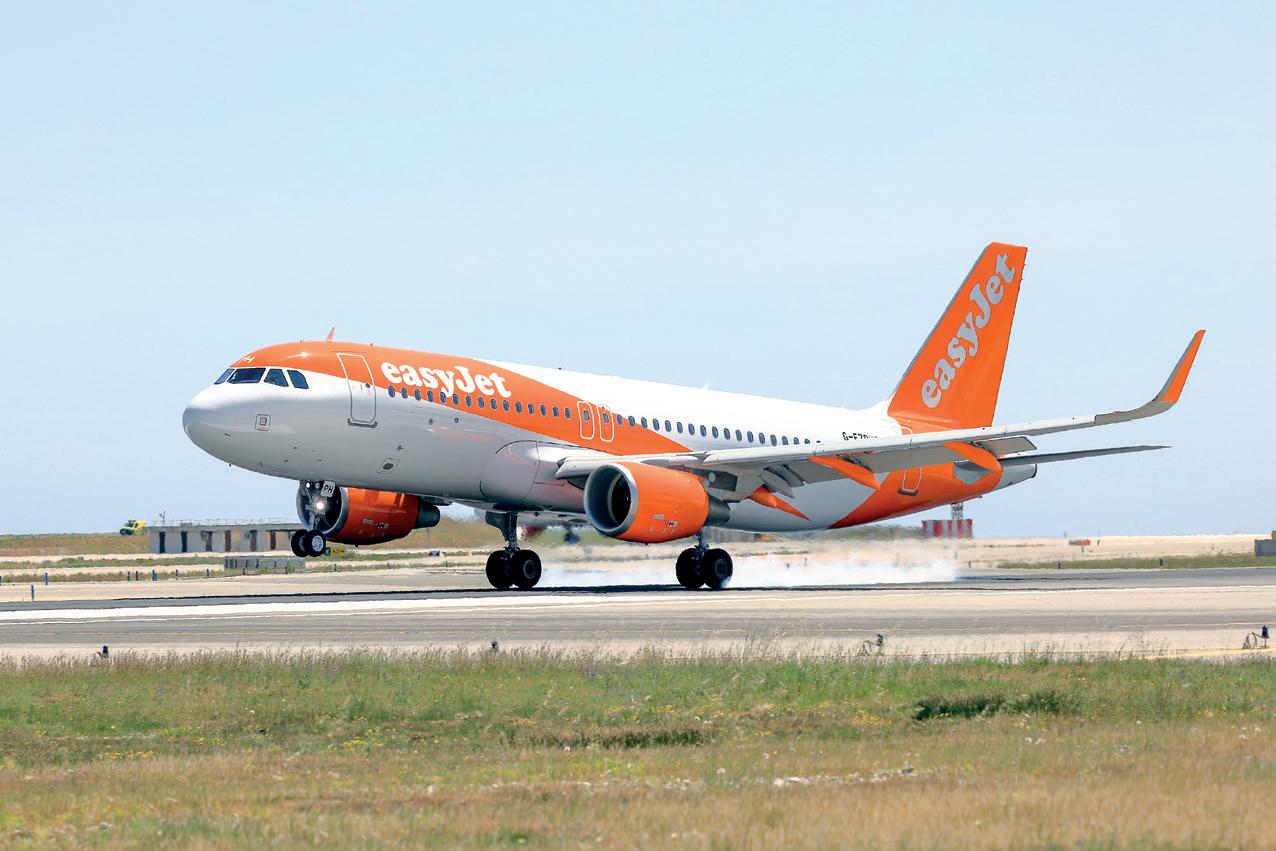
increase line maintenance productivity in the process.
Bolstered by real-time flight and cabin crew reports, the new system will in particular aid easyJet with fewer ground delays, lowering aircraft maintenance times to enable greater aircraft availability and ultimately less disruption for passengers.
David Morgan, Chief Operating Officer at easyJet, said: “Rolling out Ultramain’s state-of-the-art technology across our fleet of aircraft will not only improve the reporting processes for our crew and engineering teams but will also see fewer delays on the ground, which will help further enhance the travel experience for our customers. Our continued investment into innovative solutions like the e-techlog means we’ll not only find quicker solutions to defects but by cutting our paper use and the weight on the aircraft, we are also taking another small but important step to reduce our environmental impact too.”
Speaking on the transition to digitized reporting, Mark McCausland,

electronic technical and cabin logbook, easyJet has demonstrated a dedication to excellence and innovation. Together, we are paving the way towards a more efficient future in aviation. We are excited to support easyJet as they transition to a more efficient, paperless operation.”
Once fully rolled out, the e-techlog will be run through Ultramain’s software and will be installed on operational iPads accessible to easyJet personnel on the ground and in the air. This will enable both crew and engineers to raise and share maintenance issues in real-time whilst on the ground and, in doing so, give the engineers ample time to order new parts in advance, saving on-ground delays and operational downtime. Additionally, transitioning from pen and paper to a fully digitized process leaves no room for errors or misinterpretation as the software will enable engineers to identify the problem instantly as they board the aircraft thanks to the interactive cabin map feature included with the e-techlog.
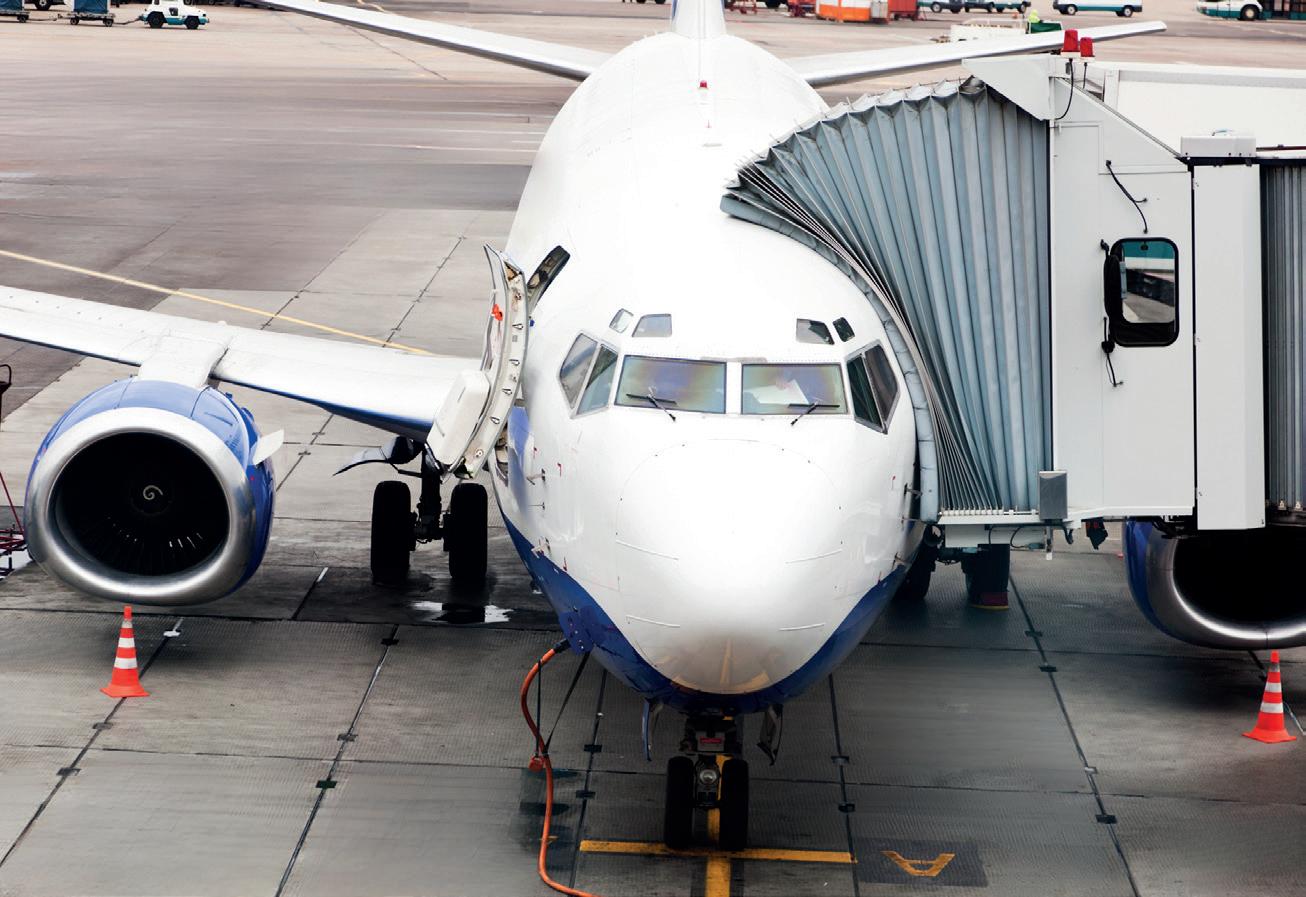



PLAY selects flight optimization services from AVTECH after successful evaluation

At the end of June 2024, AVTECH Sweden and PLAY airlines entered into an agreement for AVTECH’s Aventus and ClearPath services, with a start date in April 2024.
The ClearPath and Aventus services, both utilizing state-of-the-art highresolution aviation weather forecasting from the UK Met Office, will provide precise and tailored tactical decision support for PLAY pilots to improve the efficiency of each individual flight. By providing flight crews with the latest weather inputs and guidance on the most efficient flight altitudes, PLAY can take maximum advantage of prevailing winds and temperatures to reduce its
overall total CO2 emissions. This leads to improved flight execution and efficiency, increased situational awareness and reduced workload for the pilots. In addition, ClearPath also warns of turbulence along the flight path which increases the comfort for all passengers travelling with PLAY.
Aventus: The Aventus Full-flight Winds service provides optimized weather uplinks for each stage of a flight, including the climb, enroute and descent phases. Aventus is a unique and patented system, enabling accurate wind information and 4D Trajectories for flights, making use of the very best in atmospheric modelling

will be reached. The Aventus solution is environmentally friendly as it enables aircraft to fly more efficient altitudes and RNP approaches resulting in immediate airline fuel and CO2 savings benefits. The service is also imperative for future time-based flight operations, an area where Aventus provides even larger overall environmental and operational benefits. Time-based operations will increase the efficiency and punctuality of individual flights and of the air transport system.
ClearPath: The latest addition to AVTECHs service offering, ClearPath delivers an optimum flight path for each individual flight in real-time. The calculation of the optimum flight path
average reduction in fuel consumption and CO2 emissions. ClearPath is delivered as a service that requires no aircraft hardware investments which allows airlines to test it in their operations for free.
PLAY: As a new Icelandic low-cost airline, PLAY operates flights between North America and Europe, offering low-cost flights and a safe and pleasant journey in new and comfortable Airbus aircraft. At PLAY, safety is the name of the game. The airline’s other core values are on-time performance, simplicity, happiness, low prices, and safety. Yes, safety was said twice because that’s how PLAY plays it.
Read the full story on Aircraft IT Website

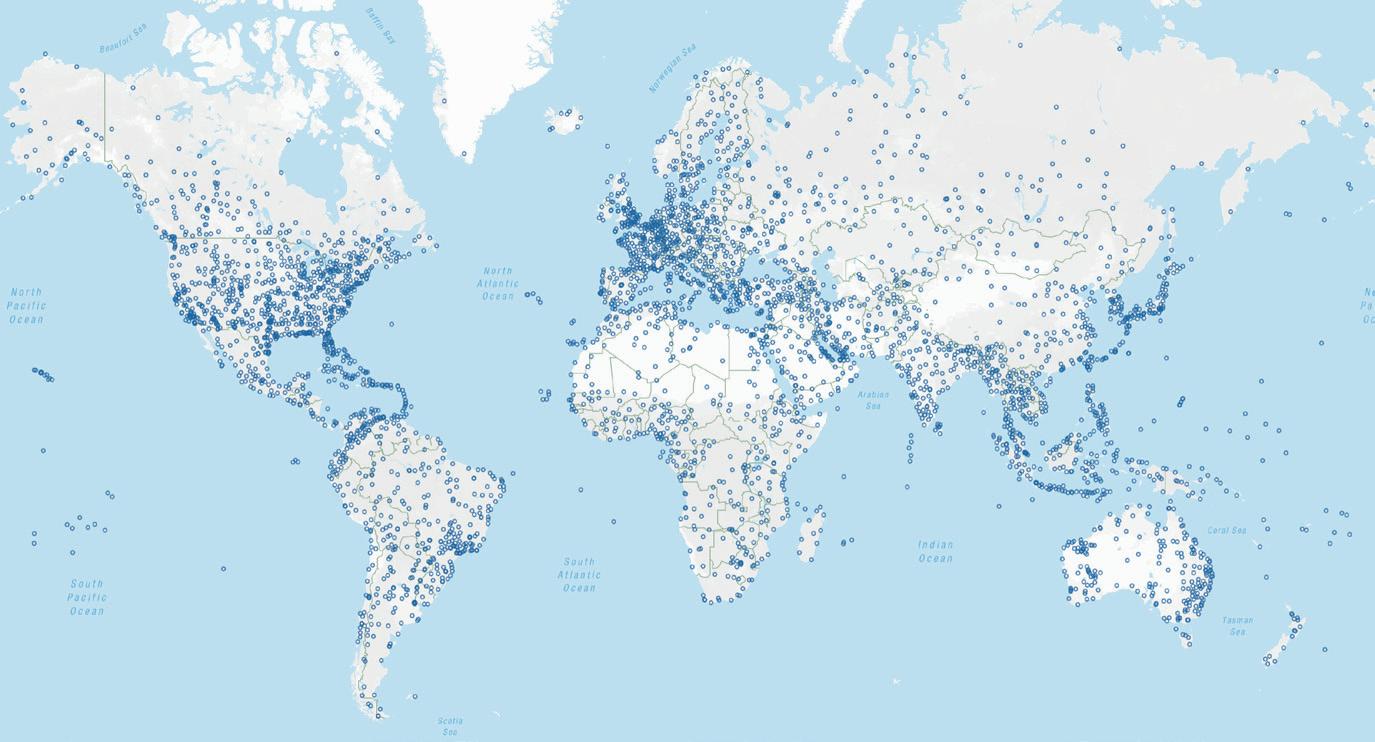
Data with confidence
Safety and Precision from Lido APIs
• Airports & Runway Data
• Airspace and Restrictions
• Obstacles and Visual Maps
• Interactive Documentation
• Tracable AIRAC Compliant Data
• GeoJSON and KML formats
HK Express selects
ULTRAMAIN® ELB™
HK Express Airways, a Hong Kong based low-cost carrier, announced at the start of July 2024 that it has selected Ultramain Systems ULTRAMAIN ELB electronic cabin and technical logbook software Express operates a growing fleet Airbus A320 and A321 series aircraft, with a current fleet size of 34 aircraft. The introduction of ULTRAMAIN ELB to their Airbus fleet will enable HK Express to capture real-time paperless data as work is accomplished. This does not only reduce the paper process but also provides improved operational visibility and reliability. Auto-collecting accurate data during the maintenance process is critical for effective corrective actions. In addition to providing immediate global visibility of Tech & Cabin actions in ELB, and HK Express’s Maintenance System, ULTRAMAIN ELB auto enforces
ELECTRONIC FLIGHT BAG
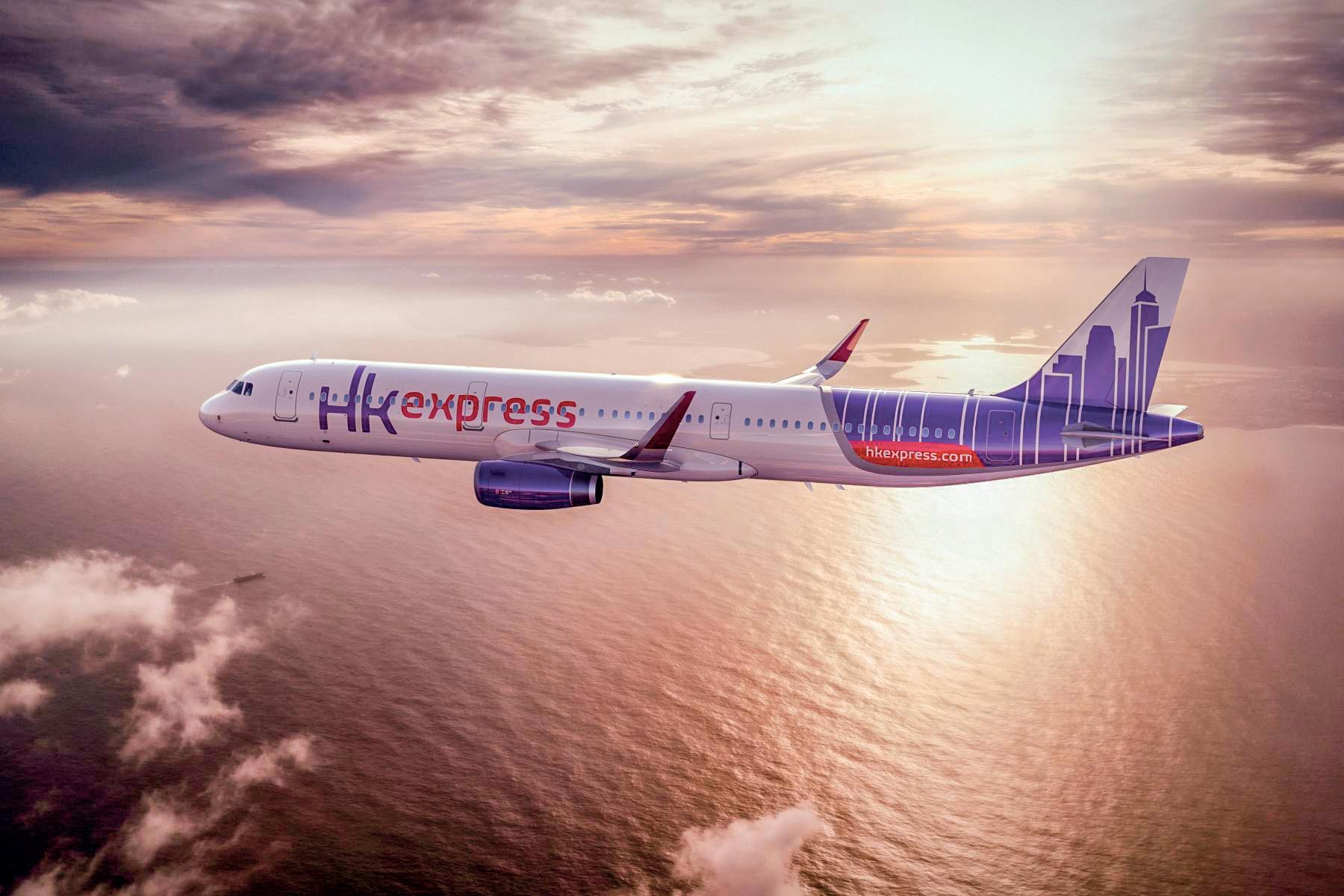
“The SA Group is your trusted partner in EFB and other Turn-key Avionics projects, Training & Interior Solutions. We support any Parts-Service,MRO,Certification, Engineering,Installation,Production, ProductDevelopment&Consultancy.”



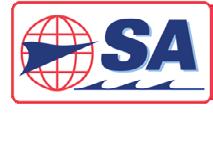
reduce deferral rates.
Alan Tang, Director, Maintenance and Engineering at HK Express said, “We are excited to integrate ULTRAMAIN ELB into our fleet, marking a significant step towards enhancing our operational efficiency and reliability.” He added, “This advanced electronic logbook software aligns with our commitment to leveraging innovative technology to streamline our processes and reduce our environmental footprint. We anticipate that ULTRAMAIN ELB will greatly improve our maintenance operations, providing real-time data capture and seamless defect management, ultimately leading to improved service for our passengers and a more sustainable operation.”
“We are thrilled to welcome HK Express to the ULTRAMAIN ELB User Community, marking substantial growth of our presence in Hong Kong. We are looking forward to getting HK Express up and running on ULTRAMAIN ELB so they too can realize the benefits of streamlined digital workflows. Furthermore, we are pleased to assist another customer in their endeavors to reduce their environmental footprint. Not only will their operational reliability be improved through their use of ULTRAMAIN ELB, but HK Express will significantly reduce the amount of paper being printed and stored”, said Tim Spears, Vice President of Onboard Systems.
HK Express: Operating as one of the world’s most punctual and safest airlines, HK Express is an IATA Operational Safety Audit (IOSA)
registered airline and is ranked third globally and first in Asia for on-time arrival performance among low-cost carriers, according to Cirium, a leading aviation analytics firm. It has also received a ‘7-star safety rating’ — the highest honor from airlineratings.com, a renowned independent airline rating review agency worldwide.
As a member of the Cathay Group, since transforming into a low-cost carrier HK Express has successfully empowered over 22 million passengers to travel on their own terms. It is widely trusted and favored by its customers.
Ultramain Systems: Serving aviation industries worldwide for more than 40 Years, Ultramain Systems is dedicated to providing customers worldwide with SIMPLE MOBILE PAPERLESS Aviation Maintenance software and professional services.
ULTRAMAIN ELB–market leading electronic logbook software is approved for paperless operation by regulatory authorities worldwide.
ULTRAMAIN ELB and eLine Checks operate on mobile or installed devices providing real-time integration with airlines’ existing Flight Schedule and Maintenance systems.
ULTRAMAIN M&E / MRO software provides comprehensive functionality, innovative features, and has been approved by regulatory authorities around the world for line, base, and overhaul operations as the paperless maintenance system of record. Ultramain Systems and Ultramain International maintain offices in the USA, UK, Ireland, Hong Kong, and India.
How do you manage your training center?
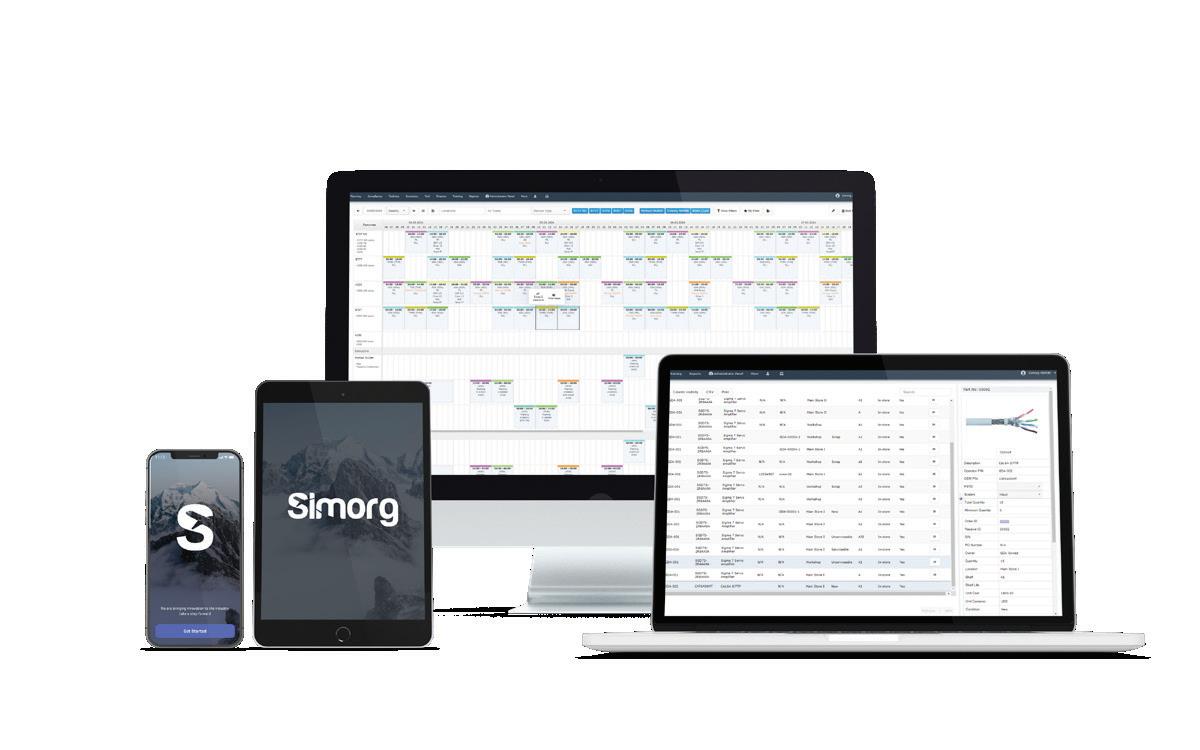


CommuteAir doubles down on sustainability and safety by eliminating paper
In early June 24, 2024, TrustFlight Ltd., a technology innovator focused on safety and digitization of the aviation industry, announced that Ohio-based CommuteAir, a modern regional airline and United Express partner supporting the global United Airlines network in the United States, Canada, and Mexico, has selected TrustFlight’s Electronic Tech Log (ETL) and MEL Manager software to drive digital transformation, sustainability, and improved safety across their fleet of 57 Embraer ERJ145 aircraft.
The shift from paper to digital is expected to improve aircraft availability and minimize avoidable maintenancerelated disruptions through real-time communication of fleet status that allows management teams to respond rapidly within complex operational profiles. It is estimated that TrustFlight’s system will eliminate 500,000+ printed pieces of paper from their operations, or an average of 50 trees, per year.
“Close to three million passengers per year rely on CommuteAir to get them to and from their destinations safely and on-time,” said Rick Hoefling, CEO, CommuteAir. “Like our partners at United, we naturally sought ways to improve our safety and operational efficiency in a sustainable manner. After conducting a rigorous analysis, we are proud to have selected TrustFlight to help us in our mission.”
TrustFlight’s system, which will be leveraged by CommuteAir’s distributed flight operations, tech operations, and maintenance departments, will provide real-time communications and alerts to pertinent personnel, greatly improving internal communications between departments. In addition to TrustFlight’s powerful Electronic Tech Log, CommuteAir has also selected MEL Manager, a vital part of TrustFlight’s safety ecosystem that reduces the risk of latent risks and compliance findings in Minimum

Manager, CommuteAir will be able to shave days off of repetitive document creation and revisions with the use of TrustFlight’s powerful AI engine, while also improving the document’s accuracy.
“CommuteAir is a leading North American regional airline and we are excited to support them in their digital transformation efforts,” said Karl Steeves, CEO, TrustFlight. “In addition to the Electronic Tech Log, which airlines have been utilizing for some time, we are excited in their decision to onboard MEL Manager, a unique new product which revolutionizes how airlines manage their MELs.”
TrustFlight: A digital technology innovator that specializes in the aerospace and aviation domain, TrustFlight’s best-in-class solutions and services provide an added layer of safety, efficiency, and insight to everyone involved in the operation and maintenance of aircraft. With over 80,000 active users, TrustFlight’s
Manager, and aviation Technical Services for continuing airworthiness. Originally founded by two commercial pilots, TrustFlight has grown to become a global firm supporting a wide variety of airlines, airports, regulators, maintenance providers, and business aviation operators around the world.
CommuteAir: A regional airline operating flights on behalf of United Airlines as a United Express partner and with an operating fleet of 57 Embraer ERJ145 aircraft, CommuteAir operates up to 1,600 weekly flights — connecting people and communities to the world via United’s global network. Headquartered in Cleveland, CommuteAir has major hubs in Houston and Washington Dulles. Additionally, the company operates maintenance hangars in Houston, Albany, and Lincoln. Founded in 1989, CommuteAir is majority-owned by Champlain Enterprises, Inc. and 40% owned by United Airlines, Inc.
Read the full story on Aircraft IT Website
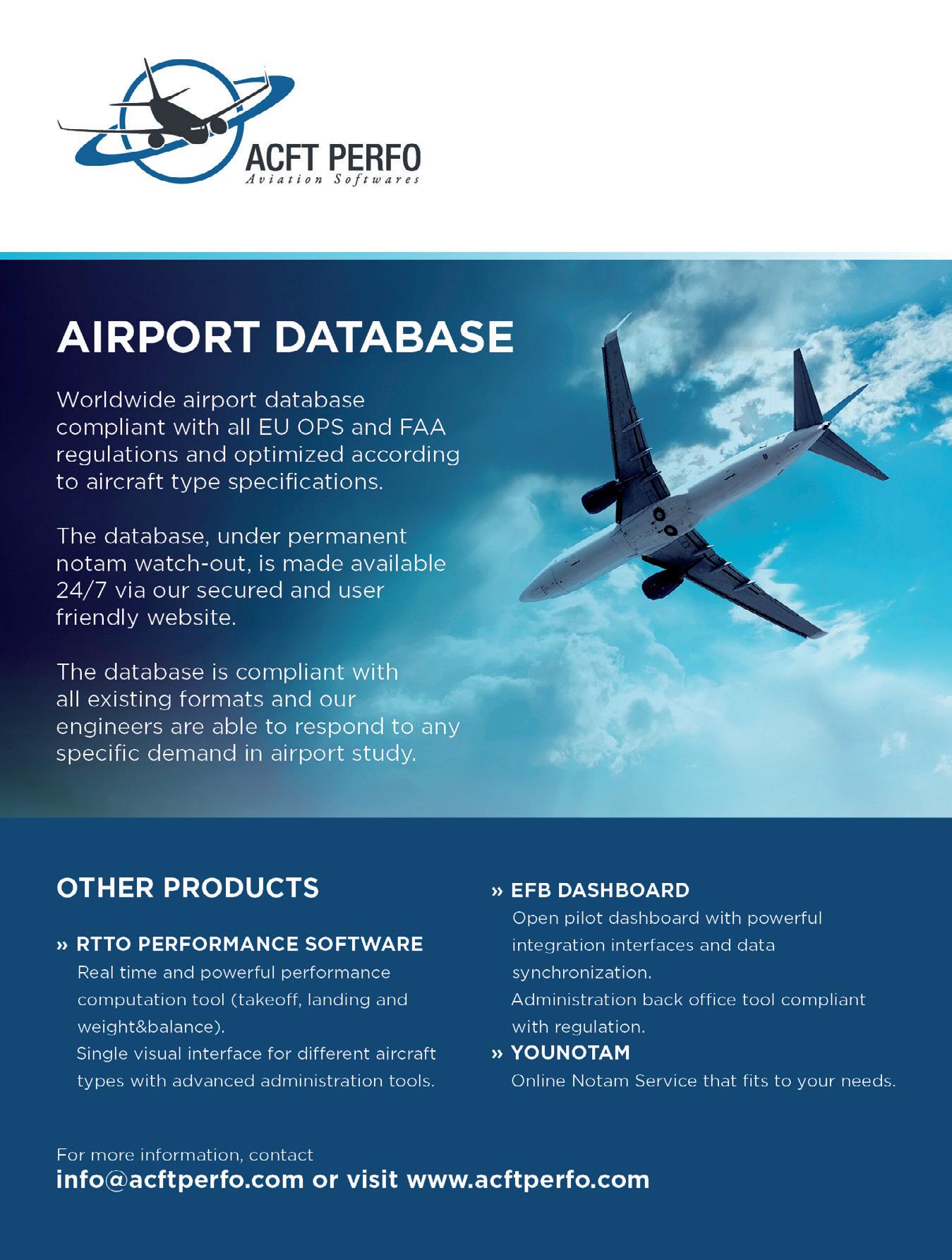
Hong Kong Air Cargo chooses NAVBLUE suite of solutions to improve its operational efficiency
Suite includes N-Flight Planning, N-Tracking, Navigation+ and Mission+ FLIGHT and MAPS
In early September 2024, Hong Kong Air Cargo, a subsidiary of Hong Kong Airlines, announced that it has signed for a NAVBLUE suite of solutions to enhance its Flight Operations.
Hong Kong Air Cargo will benefit from NAVBLUE’s state-of-the-art solutions, to improve its operational efficiency, through seamlessly integrated digital solutions.
The suite selected by Hong Kong Air Cargo includes five
complementary solutions in addition to the already selected N-Ops & Crew (N-OC), a solution designed to handle all aspects of Network Scheduling, Operations Control, Crew Planning, Crew Management, and day-of-ops
Crew Scheduling in a single Flight Operations system:
• N-Flight Planning, which will help the airline optimize their flight operations by allowing them to rapidly compute flight plans, factoring payload, aircraft performance, current weather and air-traffic constraints. N-Flight Planning will also bring added-value to the airline, minimizing flight time,
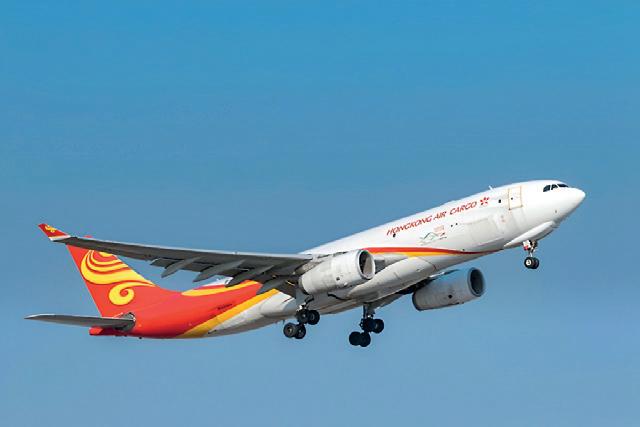
fuel burn or total cost;
• N-Tracking, which will empower Hong Kong Air Cargo with operation situational awareness, with aircraft position reports and alerting;
• With Navigation+, Hong Kong Air Cargo will benefit from the most relevant aeronautical navigation information including enroute, airport
Take real control of aviation safety management with Ideagen Coruson
Minimize risks, anticipate problems, harness knowledge and learning and turn it into actions that will help you thrive.
Action management.
Document control and policy management.
Audit management.
Change control.
Business process modelling and automation.
To learn more visit ideagen.com/solutions/quality/coruson
and procedures, both for worldwide and regional coverage;
• Mission+ is NAVBLUE’s Electronic Flight Assistant, gathering all the information pilots needs in one single application on a globe-centric display, reducing pilot workload by streamlining the flow of information between ground and onboard systems. This solution integrates mission management data and documentation, cockpit checklist, navigation charts and airport maps, real time weather conditions, aircraft performance data — which are usually only available to pilots via

Incident management and reporting.
Operation risk management.
Performance monitoring.
multiple sources;
• With Mission+ FLIGHT, the Hong Kong Air Cargo pilots’ journey will be optimized from preparation to closure of a flight, and efficiency will be increased by the reduction of manual entries and therefore risks of errors. In addition, pilots will also be using Mission+ MAPS — the charting module of Mission+ that contains all the NAVBLUE aeronautical data for Enroute, Terminal charts and Supplement information. Hong Kong Air Cargo will now benefit from all the advantages of a full suite of NAVBLUE products.
Marc Lemeilleur, CEO of NAVBLUE; said: “We are proud to support Hong Kong Air Cargo with our solutions, aimed at enhancing airlines operational efficiency. Thanks to our innovative and integrated solutions, Hong Kong Air Cargo can now benefit from state-of-the-art solutions to help streamline pilots’ workload and increase the airline’s benefits.”
Capt. Yang Yang, Vice President Operations of Hong Kong Air Cargo, added: “Hong Kong Air Cargo will increase its operational workflow through integration and automation, reducing manual work for our teams. With this NAVBLUE integrated suite of solutions and its reliable aeronautical database, we will enhance our Operational Safety and Efficiency.”
Air Arabia choose EFOS Training
Right at the end of July 2024, Air Arabia, the Middle East and North Africa’s first and largest low-cost carrier (LCC) operator, announced that it has selected EFOS for itsTraining Management System, signifying a strategic move that will enhance training efficiency and operational excellence
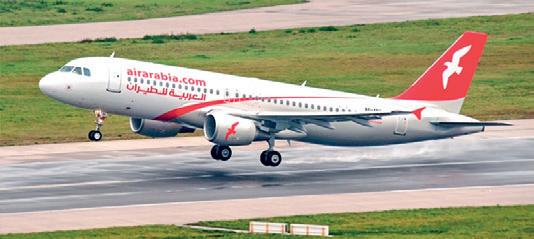
The recent signing of a 7-year contract marks the beginning of a promising partnership, at a vital time for Air Arabia who have ambitious growth plans, expanding routes and a goal to deliver an improved training experience for an operational workforce spanning multiple AOCs.
The decision to implement a new training management system is not to be
underestimated as finding a provider that can not only deliver your requirements now, but also as your training evolves, can be challenging. With EFOS Training, Air Arabia anticipates streamlined operations, improved accessibility, enhanced training capabilities and powerful data analytics that will help identify trends and emerging issues whilst also aiding future decision making and further improvements.
Dr Craig Howard, Evoke’s CEO said: “We are immensely proud to have been selected by the team at Air Arabia and are very excited to see what we can achieve together during the years to come.”
WeatherWatch including Significant Weather Alerts
When weather forecasts indicate conditions surpassing your predefined thresholds, the OpsControl WeatherWatch module enhances your situational awareness, confronting the complexities of changing weather. It promptly informs your team with real-time alerts displayed on your screens and sent to your chosen email recipients.

Significant deviation and notification/alerts
compliant (4D/15)

Zafire Aviation partners with Innovative Software SARL to enhance aviation software
In early July 2024, Zafire Aviation, a leader in aircraft turnaround software solutions, announced a strategic partnership with Innovative Software SARL, developers of the aviation messaging solution EDIfly. This alliance is set to improve aviation software by increasing efficiency and security in communications for airlines, airports, and service providers globally.
The collaboration will see the integration of EDIfly’s messaging and transmission technology into Zafire Aviation’s FIRST suite of aviation management solutions. This initiative aims to create a comprehensive, secure communication platform that simplifies operations and protects data integrity across various aviation activities. By combining Zafire Aviation’s expertise in aircraft turnaround with Innovative Software SARL’s encrypted messaging services, the partnership is expected to deliver enhanced operational efficiency, control and data security to the aviation industry.
Paul Lynch, Group Managing Director of Zafire Aviation, commented on the partnership, “By incorporating Innovative Software’s EDIfly solution into our FIRST suite, we are taking a significant step towards providing the aviation industry with superior operational tools. This collaboration will help set new standards for what aviation software can achieve.”
Richard Stokes, CEO of Innovative Software SARL, also noted, “This partnership with Zafire Aviation allows us to broaden the reach and effectiveness of our EDIfly community messaging solution. Our commitment to innovation and excellence is likely to lead to significant developments that will benefit the global aviation community.”
Zafire Aviation is known for its solutions that streamline aircraft turnaround operations, thereby improving efficiency and the passenger experience. Innovative Software SARL has transformed secure and efficient communication within the aviation industry with EDIfly.
Zafire Aviation: Delivering solutions that optimize aircraft turnaround operations, featuring the FIRST suite of software that improves operational efficiency across the aviation sector, Zafire Aviation addresses the challenges faced by airlines, airports, and service providers, providing effective tools for the industry.
Innovative Software SARL:, The creator of the EDIfly messaging solution, Innovative Software SARL specializes in secure, efficient communication technologies for the aviation industry. EDIfly enhances operational communication, ensuring data integrity and security for aviation industry and government stakeholders the world over. Read the full story on Aircraft IT Website
Flair Airlines partners with StorkJet to boost operational efficiency and achieve significant fuel savings
Flair Airlines, Canada’s leading low-cost airline, announced in late August 2024 that it has established a new partnership with StorkJet to implement innovative, data-driven technologies to optimize aircraft performance and flight operations. Collaboration between Flair and StorkJet has led to the adoption of a comprehensive suite of fuel efficiency solutions. These advancements are helping Flair Airlines reduce its environmental impact and cut costs, essential for maintaining sustainable and profitable growth.
A key factor for Flair in choosing StorkJet was the comprehensive package of fuel-saving solutions, enabling the airline to have a single provider for all its fuel efficiency needs.
“Partnering with StorkJet enables us to enhance fuel efficiency, optimize our operations, and minimize our carbon footprint, thereby elevating us above our competitors.” Said Maciej Wilk, Interim CEO and President of Flair Airlines.
The collaboration scope includes several products, starting with AdvancedAPM, which automatically provides Flair with highly precise performance factors, allowing for improved fuel planning accuracy during daily operations. This solution reduces
overburns, minimizes fuel overconsumption, and increases flight safety.
FuelPro, StorkJet’s fuel efficiency dashboard, is a suite of business intelligence tools that emphasizes fuel initiatives for all flight phases: flight planning, taxi, take-off, climb, cruise, descent, and landing. This web-based tool is designed for use by Fuel Management, Flight Operations, Dispatch, and other departments that benefit from access to fuel statistics of historical flights.
FuelPro is based on tail-specific performance models that allow Flair to simulate any flight scenario and precisely estimate saving potential in every minute of the flight.
Another crucial aspect of the implementation is the involvement of Flair pilots, who play a significant role in improving fuel efficiency. Flair required a tool that could deliver fuel efficiency insights to pilots in a positive and continuously improved manner. To meet this need, StorkJet provided Flair with FlyGuide. This solution engages pilots with Fuel Briefing to help them prepare for the flight and equips them with in-flight and post-flight feedback to educate and improve.


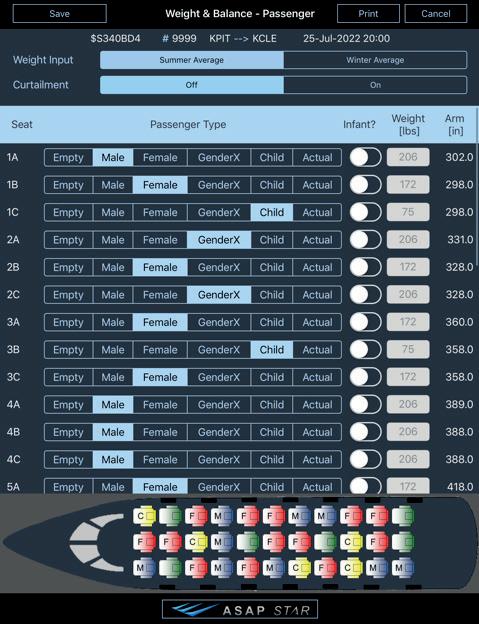


Read the full story on Aircraft IT Website

FLIGHT PLAN FOR A NET ZERO FUTURE
The global aviation industry is looking to Honeywell for today’s ready-now solutions, tomorrow’s game-changing innovations and future breakthroughs to save fuel and shrink flying’s environmental footprint.
EXPLORE OUR SUSTAINABILITY SOLUTIONS


Yonder, a leading provider of electronic documentation management solutions, was pleased to announce, in mid-July 2024, its appointment by Malaysia Aviation Group to provide long-term services and upgrade their existing legacy documentation system across the Group. This strategic move underscores Yonder’s capabilities in streamlining operations, enhancing compliance and knowledge management, and significantly improving overall efficiency for MAG and its subsidiaries. Yonder’s software empowers frontline employees and document managers by implementing smart documentation.
benefit from an easy-to-use solution and streamlined processes, significantly enhancing workflow efficiency.
The selection of Yonder’s software underscores its capabilities and the expertise of its team, which has been experiencing rapid growth in Asia.
“The insights and experience from Yonder’s partnership with Malaysia Aviation Group will furthermore enhance Yonder’s ability to assist airlines moving away from outdated documentation systems — providing a
seamless experience in migrating, implementing, and using smart documentation”
Yonder: Leveraging the full potential of digitalization with dynamic content rather than static documents, Yonder provides innovative solutions for operations manuals, guidelines, regulations, and standards.
Malaysia Aviation Group: As a global aviation organisation, Malaysia Aviation Group (MAG) comprises three focused business portfolios from Airlines, Loyalty and Travel Services (LTS) and Aviation Services. Its current Airlines business portfolio, that serves the global, domestic and segmented market, comprises Malaysia Airlines — the national carrier of Malaysia — Firefly and MASwings, the regional airlines focused on serving communities across Malaysia, and AMAL by Malaysia Airlines — leading one-stop pilgrimage travel solutions centre. MAG also focuses on Aviation Services business such as maintenance, repair and overhaul (MRO), cargo, ground handling and training that houses MAB

solutions and loyalty programs, complementing its established strength and expertise in the airline and aviation service businesses. It comprises Journify (the
Leading Travel and Aviation Services Group by 2025, focused on delivering highly customized, end-to-end travel solutions.












Simorg has been chosen by L3Harris for their airline training operations
In late July 2024, Gözen Digital Aviation (GDA) was pleased to announce its collaboration with L3Harris, a global leader in pilot training services. Via this new agreement, GDA’s digital solution Simorg will be operational in all of L3Harris’s training centers in Europe and Asia. Simorg, a comprehensive management software for flight training operations, will be the primary digital platform in use at L3Harris locations around the globe, spanning London and Bangkok. This collaboration aims to enhance operational efficiency and streamline training processes, further affirming GDA’s dedication to providing advanced digital solutions that elevate L3Harris’s world-class pilot training experience.
Şevket Numanoglu, CEO of Gözen Digital Aviation, stated, “We are honored to be providing our service
to L3Harris, a globally respected leader in pilot training services. L3Harris’s commitment to excellence and innovation in crew training across continents is truly commendable. Their selection of Simorg is a testament to the robust capabilities and value that our product delivers and we look forward to a future where we can collaboratively push the boundaries of digital aviation.
David Coward, Vice President, and General Manager of Airline Training at L3Harris, stated, “We are thrilled to choose Simorg for our Airline Training Operations. Their innovative approach and robust management system align with our commitment to excellence and support our growth plans. This collaboration with GDA opens new opportunities for us to enhance our training capabilities and deliver

Gozen Digital Aviation: Focusing on creating advanced digital solutions for the aviation industry, while also managing the digital strategies of leading companies in the market. Gozen Digital Aviation








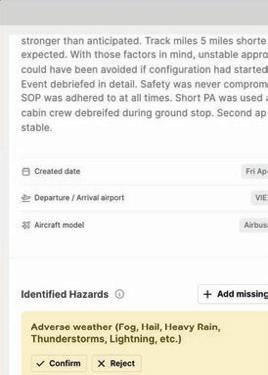

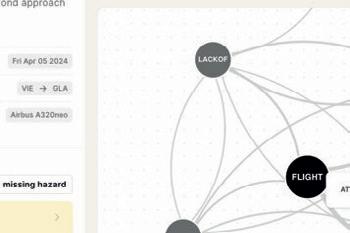



















(GDA) creates high functionality software through the expertise gathered from multiple verticals of aviation. The company is currently dedicated to developing software in segments such as flight operations, training center management, aviation security, ground handling operations, crew scheduling/aircraft management, flight/trip planning and aviation finance.
SIMORG: As an end-to-end and integrated training management software tailored for simulator centers and flight schools, SIMORG integrates features such as scheduling, training management, maintenance, compliance, inventory management and reporting to support the operational needs of flight training organizations.
CrossConsense GmbH Achieves Successful ISO 9001:2015 Recertification by TÜV Hessen
CrossConsense GmbH & Co. KG, a leading provider of MRO software centric consulting, support, and software development services, was proud to announce, in mid-August 2024, the successful completion of its latest audit conducted by TÜV Hessen.
The comprehensive audit, which took place at the end of July, resulted in a renewed certification under the standards of DIN EN ISO 9001:2015, with no deficiencies found.
This achievement underscores CrossConsense’s unwavering commitment to quality management and continuous improvement in all aspects of its operations. The audit’s scope encompassed the company’s core services, including MRO software consulting and support, as well as software development, ensuring that CrossConsense maintains the highest standards of service delivery.
During the audit process, TÜV Hessen auditors provided
AvioBook Cabin: an integrated EFB for Cabin Crew
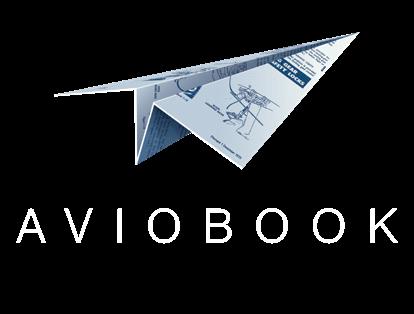
valuable suggestions for further enhancements. These suggestions have been warmly received and are currently being integrated into CrossConsense’s business processes, demonstrating the company’s proactive approach to excellence.
“Receiving this certification without any non-conformities is a testament to our team’s dedication and expertise,” said Axel Christ, Managing Director of CrossConsense. “We are committed to not only meeting but exceeding the expectations of our clients and partners. The insights from the auditors are instrumental in driving our pursuit of perfection.”
CrossConsense’s history of compliance with ISO standards reflects its long-standing tradition of quality and reliability.
Read the full story on Aircraft IT Website
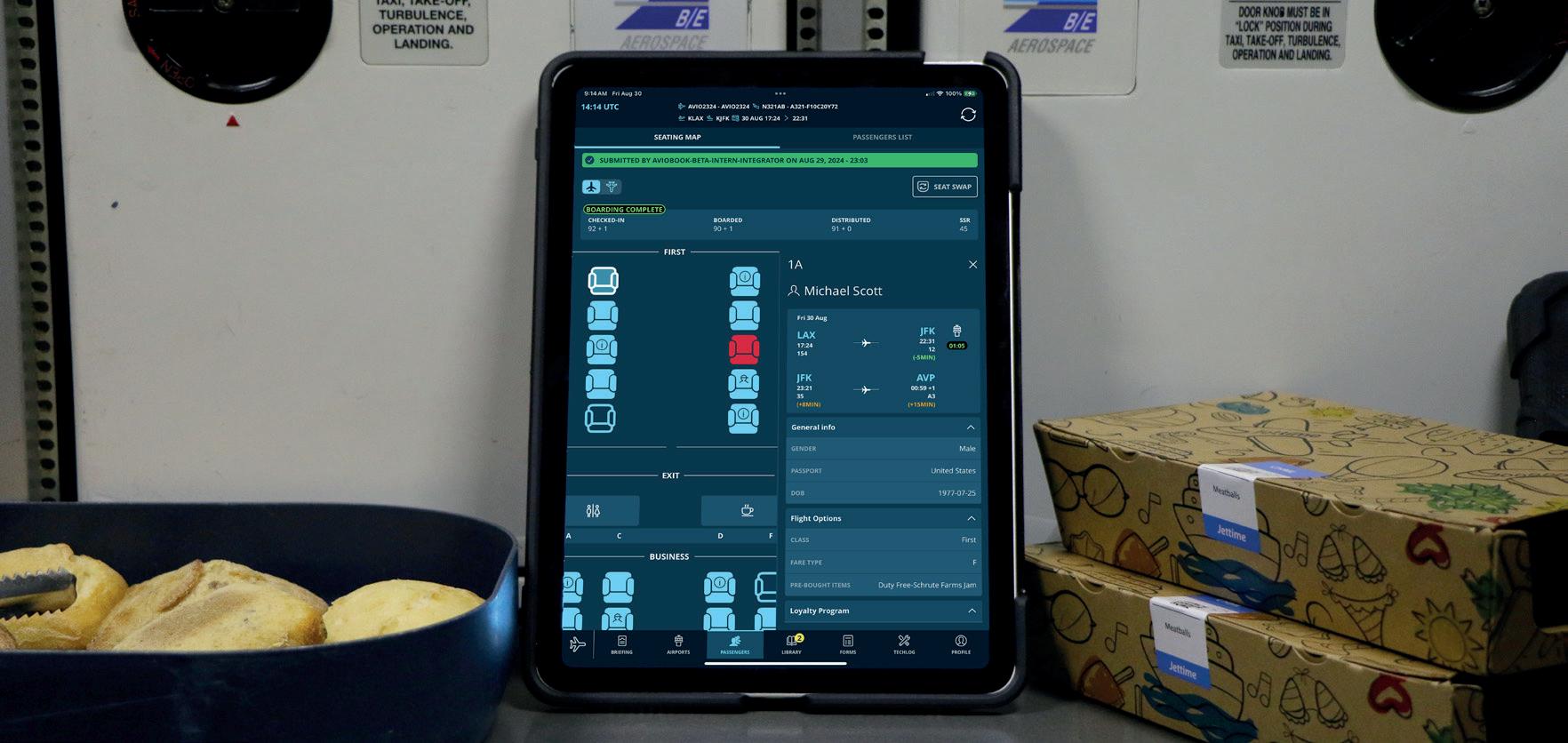
- Access flight briefing information
- Consult a documentation library
- Complete digital forms
- Review & interact with passenger data
Empower cabin crew to provide the best passenger experience with AvioBook


Enabling airlines to enhance their operational efficiency, compliance, and revenue generation across Flight Ops (EFB), Maintenance, and Inflight Services

Request a Demo Today!
Flight Operations
Journey Log, Electronic Flight Folder, Document Management, Weight & Balance, Forms Designer
Inflight Services
Passenger Relationship Management, Inflight Sales Reports, Luggage
Management, Meals Management
Maintenance
Cabin Defect Log & TechLog






SITA extends SITA OptiFlight® scope to vertical cruise inflight optimization via the module SITA
Optilevel carrying on its path towards a full flight approach
In addition to its climb-out optimization module SITA OptiClimb®, currently used by almost 40 airlines worldwide, SITA OptiFlight®, also allows pilots to cut fuel burn and carbon emissions during the cruise thanks to the module SITA OptiDirect that provides direct routes recommendation based on historical track flown.
From Q4 2024, SITA will enrich SITA OptiFlight® with the new module SITA Optilevel, enabling airlines to achieve additional and significant fuel savings and emissions reduction. The module is currently used within two airlines in the frame of innovation partnerships. SITA OptiLevel already showed great achievements allowing SITA’s innovation partners to save in average 1percent of the cruise fuel burn. On most flights, the cruise phase is the highest fuel consuming phase offering thus great inflight fuel saving opportunities. Indeed, Flight Levels in flight plans are constrained, but there is a possibility to adapt the vertical profile to real weather and ATC conditions as well as to climb between waypoints. However, differences in winds may cancel the positive effect of
flying higher.
In addition, pilots can adjust Mach speed for on-time arrival when they are ahead or behind schedule and not in a position to request a new flight plan. Pilots can thus also optimize the fuel/time ratio but may not have enough information to perform speed adjustments since the relationship between cruise Mach, time, and fuel consumption is not linear. Depending on winds and Flight Level, a decrease in Mach may result in either a decrease or increase in trip fuel. In addition, the fuel consumption of additional flight time resulting should be considered.
SITA OptiLevel advises pilots on best initial flight level and cruise level and speed changes considering winds and aircraft weight. SITA OptiLevel uses tail-specific predictive performance models in combination with accurate 4D weather forecasts to adjust vertical profile and cruise speeds. It offers pilots the best flight level/wind trade-off. In addition, SITA Optilevel will be able to consider unexpected Flight Level or speed changes to provide a new set of recommendations inflight leveraging aircraft connectivity.
Read the full story on Aircraft IT Website

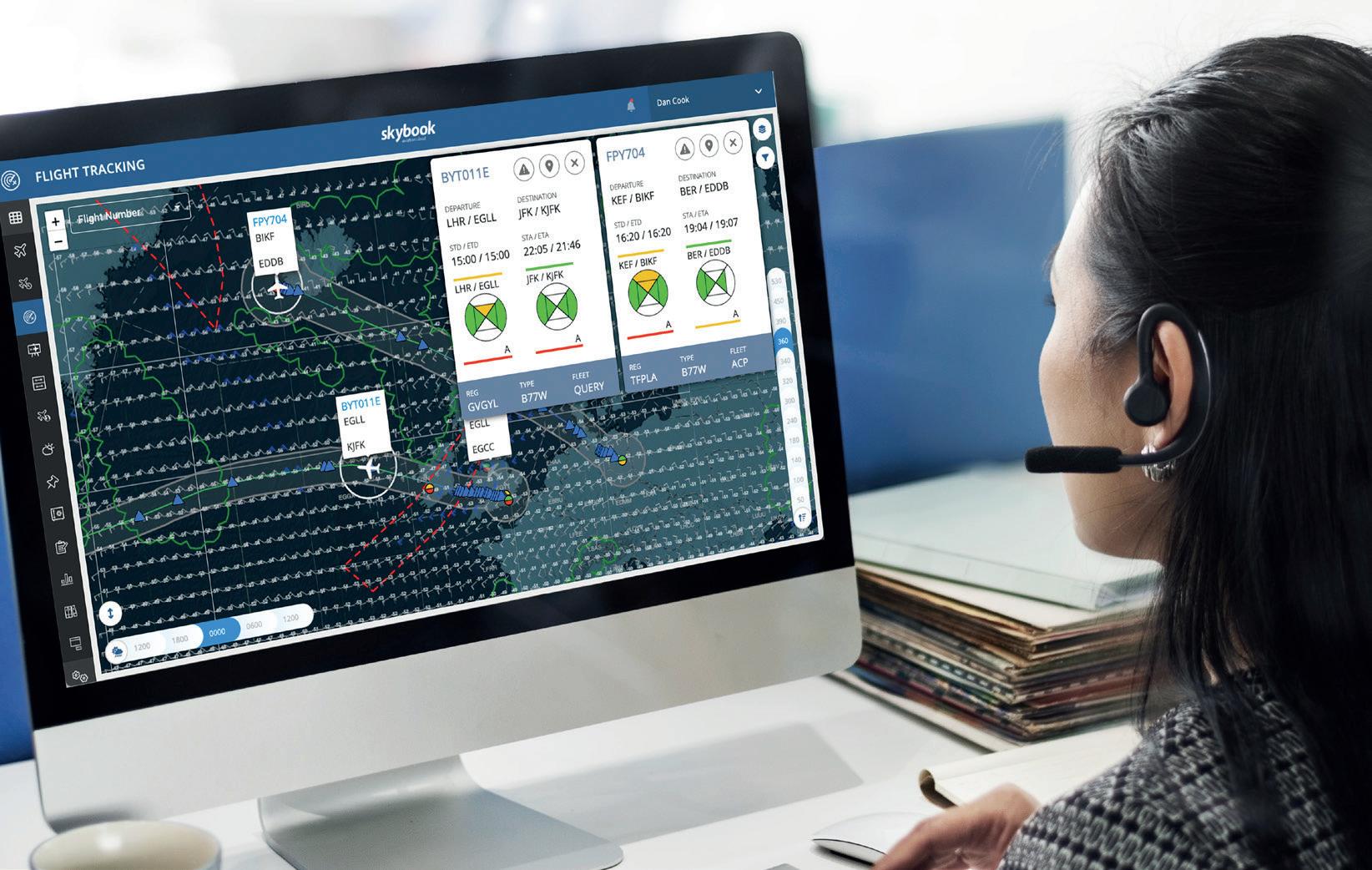


OPTIMIZATION FULL FLIGHT PATH


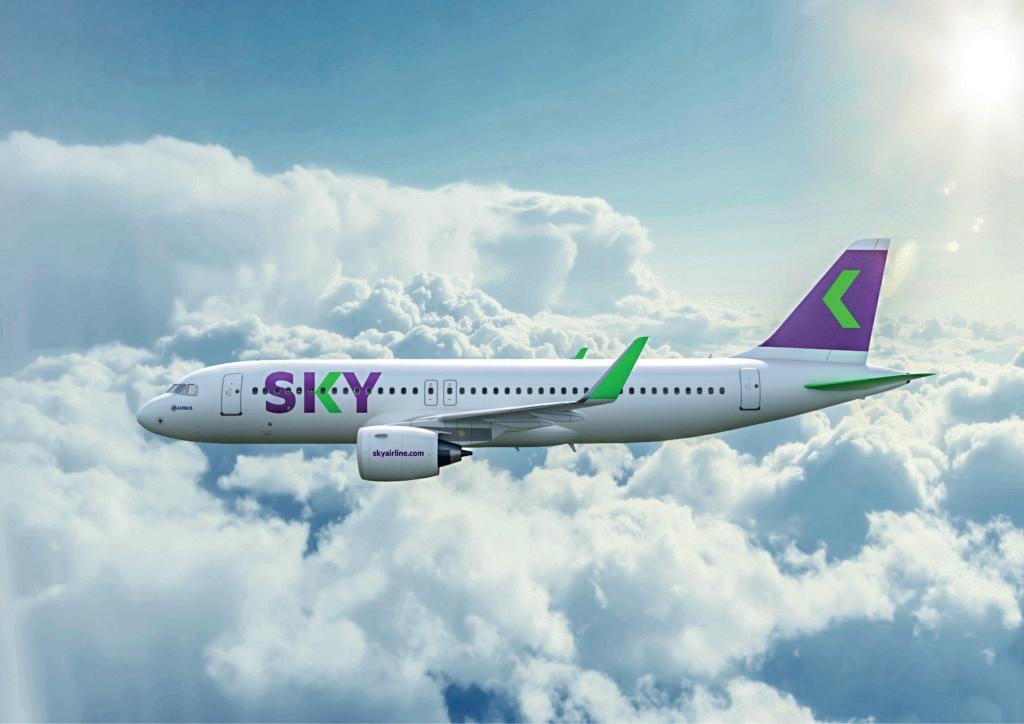
this aircraft type in South America. Our ambitious expansion plans require choosing the right partners to streamline our growing operation.”
SKY Airline: a Chilean low-cost airline with 22 years’ history, SKY Airline, with a fleet of Airbus A320 and A321 aircraft, has a presence in nine countries in America. The Aircraft with neo technology allow for fuel efficiencies, reducing the company’s emissions. In 2024 it was recognized as the second newest in South America by CHAviation. Likewise, in that same year it was classified as the best low-cost airline in South America for the fourth time, by Skytrax, an organization that seeks to improve the quality of passengers’ travel experience. In 2023, it won the national customer satisfaction award in Chile, in the Airlines category. Read the full story on Aircraft IT Website
Breeze Airways continues to improve passenger experience by leveraging weather data and insights from The Weather Company
Breeze Airways, a premium leisure, low-cost carrier, announced in mid-August 2024 that it has partnered with The Weather Company, the world’s most accurate forecaster, to provide its passengers with an unparalleled travel experience, no matter the conditions. As the airline continues to grow the size of its fleet and add new routes, Breeze will leverage The Weather Company’s Fusion global weather and flight tracking solution. Fusion will provide Breeze with the critical information it needs for proactive decision making to help improve safety, reduce diversions and increase comfort for its passengers and crew.
Using industry-leading data science, meteorological expertise and technology, The Weather Company helps a majority of North American commercial airlines, and many others globally, to integrate weather data into daily operations for real-time decision making. Pairing historical airport operations data with superior weather forecasts will improve Breeze’s visualization of airport congestion, taxi delays and runway configurations. This enables Breeze to predict arrival and departure capabilities and procedures more intelligently, thus improving decisions around operations and safety.
“As we continue to expand our airline’s network over the coming months and years, it’s critical to deploy key technology solutions to ensure operational teams are equipped with the right tools to make efficient operational decisions, all whilst bolstering a commitment to guest and crew safety,” said Travis Yost, vice president of Breeze’s Operations Control Center. “The Weather Company is an essential partner, providing a clearer picture of weather’s impact at the gate, as well as en-route hazards like turbulence. Together, we seek to deliver a world-class travel experience for customers through optimized,

flight safety.”
Since becoming a dedicated Fusion user, Breeze has realized industry leading completion rates and sees opportunity for more upside in the long-term. Since launching in 2021, Breeze Airways has become known for providing affordable, nonstop flights from underserved markets across the U.S. Today, Breeze serves 64 cities across 30 states and has flown more than five million guests. By fall 2024, the carrier will move all scheduled service to its A220-300 fleet, making it one of the youngest fleets in the industry.
“As increasingly severe conditions continue to keep weather top of mind, it’s critical for airlines to utilize reliable, trusted weather forecasts, along with the best possible human expertise,” said Ravi Vanmali, head of aviation for The Weather Company. “Innovative airlines like Breeze are using advanced flight planning and predictive analytics to better understand disruptive situations and their impacts ahead of time to help minimize or even avoid them. This ultimately helps improve passenger safety and
comfort, reduces fuel consumption, and saves time and money.”
Breeze Airways: Having begun service in May 2021, Breeze Airways has been ranked as one of the U.S.’ best domestic airlines for the last two years by Travel + Leisure magazine’s World’s Best Awards (#2 in 2022 and #4 in 2023) and is the first and only domestic carrier to be certified by Autism Double-Checked which seeks to make air travel a more accessible and pleasant experience for the autism community.
Breeze offers a mix of more than 200 year-round and seasonal nonstop routes between 64 cities in 30 states. Founded by aviation entrepreneur David Neeleman, Breeze operates a fleet of Embraer 190/195 and Airbus A220-300 aircraft, with a focus on providing efficient and affordable flights between secondary airports, bypassing hubs for shorter travel times. With seamless booking, no change or cancellation fees, up to 24-months of reusable flight credit and customized flight features — including complimentary family seating — delivered via a sleek and simple app, Breeze makes it easy to buy and easy to fly.
The Weather Company: The Weather Company helps people and businesses around the world make more informed decisions and take action in the face of weather. With its deep industry expertise and highly accurate, high-volume weather data combined with advanced technology and AI, The Weather Company provides insights and solutions that harness the power of weather in a scalable, privacy-forward way. The world’s most accurate forecaster, the company serves hundreds of enterprise customers across media, advertising, aviation and more, and is trusted by hundreds of millions of monthly active users via digital properties from The Weather Channel and Weather Underground.

Swiss gets good weather information when it’s needed
Martin Gerber — Pilot / Project Manager — Swiss International Air Lines shares the experience of leveraging a multi-source 4D pilot weather app for increased awareness, safety and efficiency
This case study is all about weather and turbulence; something very relatable for the aviation industry and that all readers will have experienced, whether as a passenger or as flight crew, so will understand its importance. I aim to give you an idea of the types of information that we use in flight planning today and how we can mitigate weather related events in the air. Then we will look at the opportunities and capabilities that a modern weather application has to offer.
WEATHER PLANNING TODAY
Let’s start by giving you an idea of the bare legal minimum that pilots have to use when planning a flight, before getting airborne (Figure 1).
Weather planning preflight: what (most) pilots are using today The bare legal minimum…
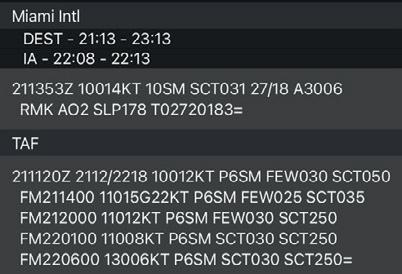

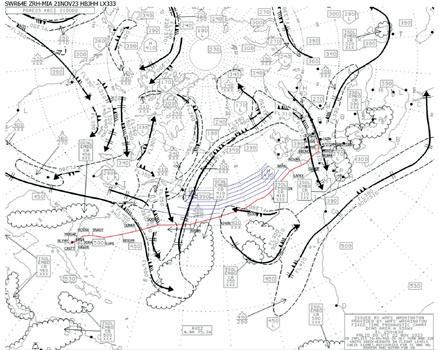
Figure 1
The regulator specifies a minimum amount of weather information that flight planners, dispatch and, of course, pilots have to consider before take-off. One thing that we have to analyze is the weather at the departure airport as well as at the destination airport and, depending on the length of flight, alternate airports.
This weather information is provided in a very simplified text format, rather like a code so not very intuitive to read. Pilots learn the terminology used but it’s still information in text form; hard to relate to something visually in three dimensions. Then there is a wind chart which indicates the direction and strength from which the winds are blowing and their strength at the flight’s cruising level. Finally, the Significant Weather Chart (SWC) a two-dimensional depiction of the weather situation showing areas of jet streams, thunderstorm areas and areas of turbulence. Updated about every six hours, this is quite a static view of the weather. We’ll look in more detail at how useful this kind of information is today.
In figure 2, we’re using a real flight, a Swiss International Air Lines flight returning to Zurich, to illustrate the point.
“…the Significant Weather Chart (SWC) a twodimensional depiction of the weather situation showing areas of jet streams, thunderstorm areas and areas of turbulence. Updated about every six hours, this is quite a static view of the weather.”
Or
if you rely on the preflight weather package only...
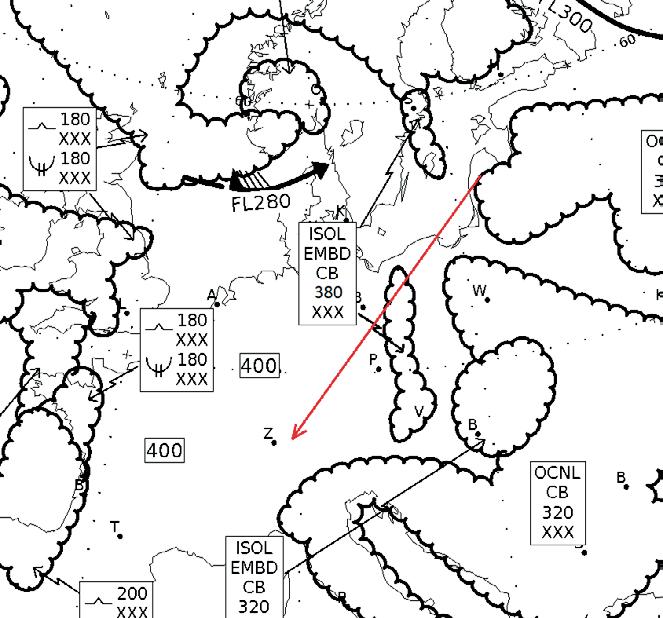
What you expect…
Figure 2
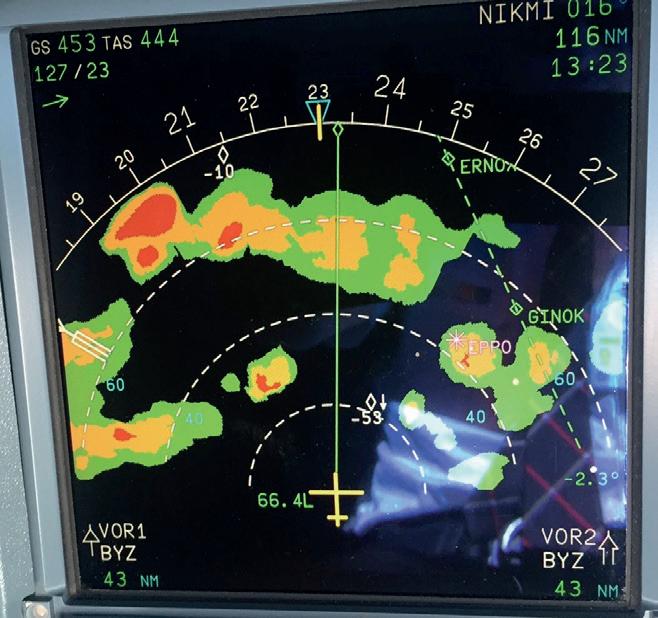
and what you get.
On the left side, you can see the planning document SWC that was used before the flight. Once in the air, the primary source of information for weather mitigation is the weather radar, the red spots indicating areas of thunderstorms in convective areas. Then the pilot has to decide whether to go right or left, what is the better way to fly around this weather because no-one would intentionally fly through a thunderstorm. It is often a fifty-fifty choice and, in this case, when the pilot got closer to the weather, he decided to turn forty-five degrees left but, in the end, found himself facing a thunderstorm. The fifty-fifty likelihood turned out to not be in the pilot’s favor.
Bearing all this in mind, we did some research in the archives and found something quite surprising; that 70 years ago, there was a weather briefing package used by pilots in 1953 that looked like the illustration in figure 3.
Weather mitigation inflight: what (most) pilots are doing today
what happens
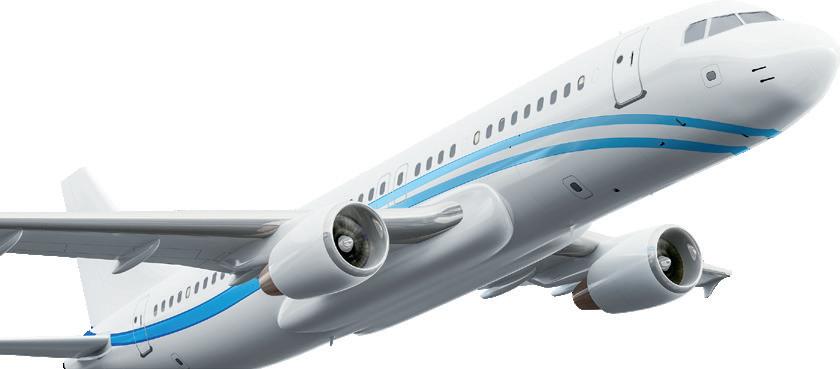

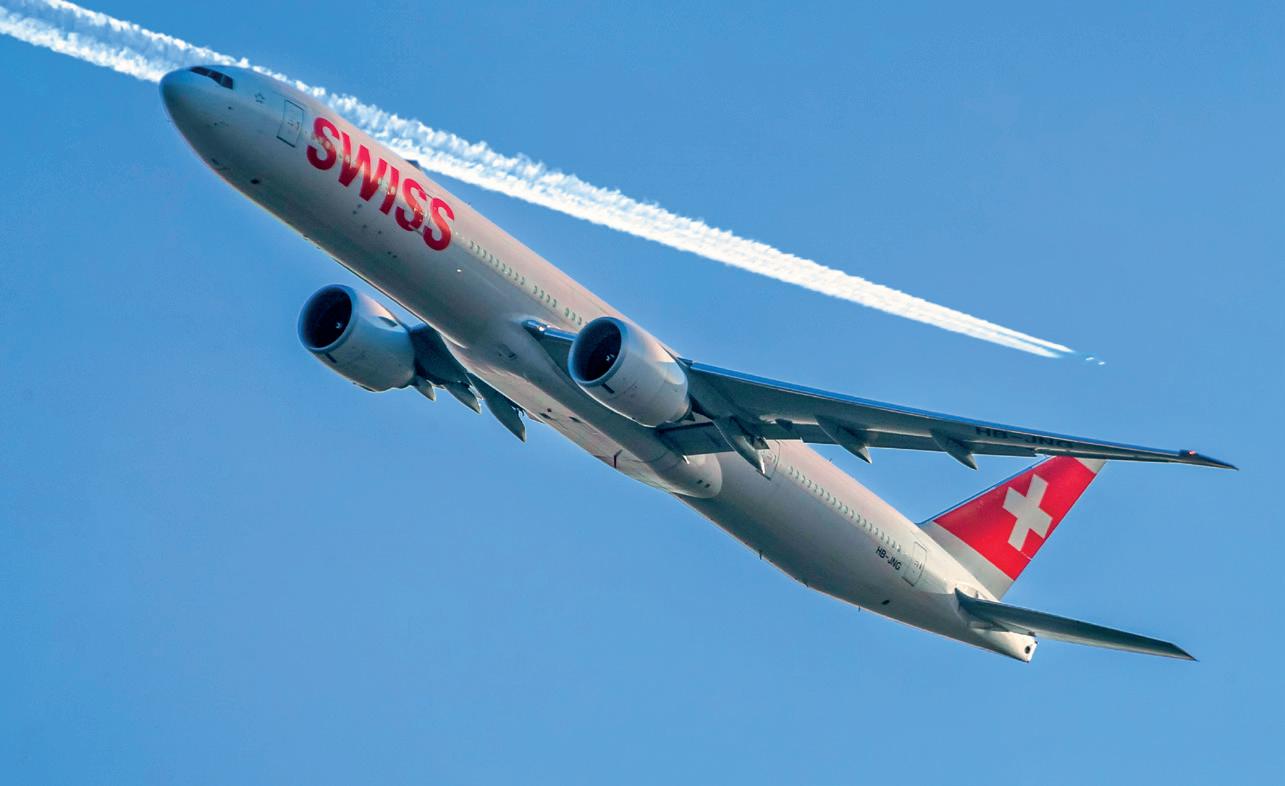
Was everything better in the old days?
The weather package 70 years ago

Flight weather information in 1953

Aeronautical weather information based on observations and forecasts, including a hand-drawn vertical profile! Example from Swissair’s flight from Zurich – Milano - Roma, 14 April 1953.
Figure 3
What can be seen is a Swissair flight from Zurich to Rome and there were Meteorologists sitting in an office drawing very accurate, two-dimensional vertical cross sections of weather along the flightpath. You can see thunderstorms indicated and the types of clouds that would be encountered. There was a lot of information available 70 years ago and more than we have today. So, maybe there is something we can learn from these older people and processes. It led Swiss to think about a weather app and that led us to implement a weather application, eWAS (electronic Weather Awareness System) from SITA.
A MODERN AND INTUITIVE WEATHER APP
SITA eWAS is a tool that displays observations, predictions and a vertical profile from a range of weather sources that the customer can select (figure 4); rather like what we had 70 years ago.
The future starts now: SITA eWAS Give pilots a weather tool they can trust
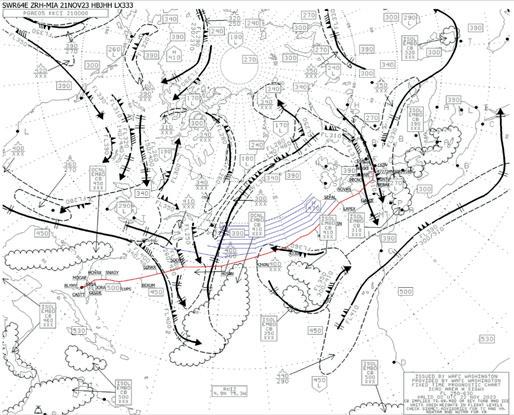

4D real-time
visualization, aggregated from multiple sources
4




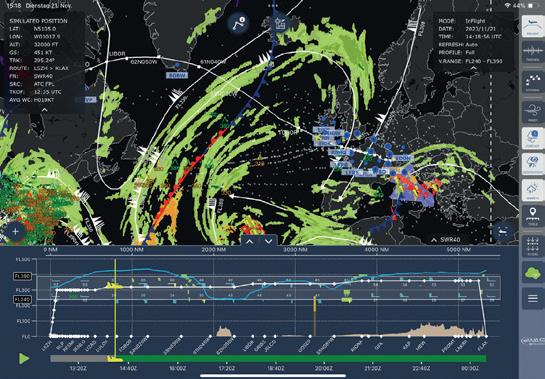


One of the great strengths of SITA eWAS is that users can choose which weather products they want to use and can help design how they are presented. In this example, from Swiss, we selected 22 different weather products in addition to that bare legal minimum required by the regulatory authorities. We can also categorize three categories of weather information. One is observation, such as the actual
precipitation or everything you can observe from a satellite and measurements from an aircraft, real time data and pilots’ reports. Then we have forecasts. Readers will be familiar with long-range predictions that can look ahead 12 hours, 24 hours, 36 hours or more; the output from a numerical weather model and what the models are predicting into the future which might be convection, precipitation, turbulence or icing. Then there is something in between which is called Nowcast, a combination of observation, perhaps a satellite observation, and a short-term prediction for the next two hours. Altogether, we now have quite a comprehensive weather package.
You might think that this is just a fancy gadget for pilots and, of course, pilots do like gadgets. However, there is more behind this. In 2018, the European Aviation Safety Agency (EASA) issued ‘The Weather Information to Pilots Strategy Paper’ with nine recommendations. Before we started implementing SITA eWAS, we took this Strategy Paper as a guideline to check off all of the targets that we wanted to achieve with the app.
Just a few of these were:
• EASA suggests that we strengthen flight crew training on mitigating weatherrelated hazards and threats.
• It is also suggested that weather information is displayed in an intuitive way using, for instance, colors
• EASA strongly recommends that on-board connectivity is used to update the additional weather information. The weather changes once you have completed the briefing on the ground but, if there’s no internet on board, you will end up at the destination still with the weather information of the additional weather data package that you had before take-off. Especially when it comes to observation data, there is a huge benefit to be gained from using in-flight connectivity. Unfortunately, it’s not uncommon that sometimes passengers have access to the Wi-Fi on board while the pilots don’t and then you can find that passengers know exactly what thunderstorm is ahead of you beyond the onboard radar coverage, yet the flight crew are unaware. There is a lot of progress underway and it does take time to get everything certified on the flight deck but there is huge benefit to be gained from connectivity on-board.
“The weather changes once you have completed the briefing on the ground but, if there’s no internet on board, you will end up at the destination still with the weather information of the additional weather data package that you had before take-off.”
• EASA recommends to use high-resolution 4-dimensial forecast models and we’ll look at a few examples of that further on, where tier 2, non-certified products can be used.
• EASA also suggests enhancing the capabilities of the aircraft to use it as a ‘weather balloon’, a sensor for weather information, and that that information is broadcast. One example is the IATA Turbulence Aware program.
• And last but not least, weather radar remains the primary source of weather information once the flight is airborne and there can never be a situation where the weather app is telling you one thing while the radar on-board tells you something different. EASA recommends latest-generation weather radars.
Figure




“Many
lightning strikes don’t stay in the clouds otherwise it would be simple to say, just fly around the clouds. But there are often lightning strikes in clear visual conditions.”
One use case is Turbulence Mitigation. Turbulence is the leading cause of non-fatal accidents in aviation, mainly where passengers are not wearing their seatbelt or Cabin Crew doing service are taken by surprise with turbulence and, beyond the physical danger, there is also a reputational issue; no airline likes to see pictures on social media where everything is flying around in the cabin.




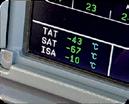



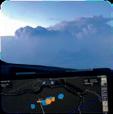










Lightning strike is another use case. Every lightning strike means an inspection of the aircraft which often ends up in grounding the aircraft for a few hours when it has to be taken out of service. Many lightning strikes don’t stay in the clouds otherwise it would be simple to say, just fly around the clouds. But there are often lightning strikes in clear visual conditions. However, when you have a weather app, you can see where there is lightning and you can decide on your departure with maybe a few more miles to extend your departure or an early turn and this is definitely something that can be achieved using SITA eWAS. One use case we will look at in more detail is thunderstorm avoidance. Another use case is in-flight icing, depending on the type of aircraft; for smaller aircraft flying at lower levels, icing is more of a hazard than for larger aircraft flying higher but still icing has an impact, perhaps on the fuel policy and whether you want to do tankering for the return flight; cool fuel in the wings can lead to icing on the wing structure and that has to be de-iced. There is a lot to consider in the decision making before the flight. Another consideration is cold temperature mitigation; there is a temperature limit for most aircraft, for example, on an Airbus A320 it’s minus 70° Celsius. It can happen for these temperatures to be exceeded in winter times, which will then require maintenance inspections. The exceedance of cold temperature leads to an AOG (Aircraft on Ground) for four to five hours before it can be released into service again. Volcanic ash is another very expensive use case. We experienced that at Swiss with a short-term Volcanic Ash Advisory which did not reach the flight crew in time.
Here are two specific use cases. The first use case is about turbulence mitigation and the second about thunderstorm avoidance.
Turbulence
Turbulence mitigation
Turbulence mitigation, somewhat exaggerated, can simply involve two pilots sitting in the cockpit drinking coffee and once it becomes too shaky to drink their coffee, they contact air traffic control to report the turbulence and request to descend or climb (figure 6).
Use Case #1: Turbulence Mitigation
Turbulence measurement: an important source for real-time avoidance and model tuning
Yesterday: PIREP
“If you can still drink your coffee, it’s light turbulence.”

à subjective, aircraft-dependent


Now: Automated turbulence reports à objective, aircraft-independent
However, there will often be a lot of traffic in the air and everyone is making that same request. Eventually, some flight levels become congested with aircraft that are trying to avoid turbulence. In short, it’s more of a reactive strategy if you wait for turbulence and only then do something about it. But three or four years ago, a new approach became available with which aircraft can report an account of turbulence automatically. It’s an algorithm that was developed by the National Centre for Atmospheric Research (NCAR) in the USA and has now found widespread application, first on Boeing and now on Airbus aircraft. With this, aircraft can use their own angle of attack sensors to measure, to an objective degree, turbulent air. In this example, I’ll explain the benefits of objectively measured turbulence data.
But before that I’ll say, when scientists or meteorologists start fine tuning their forecast models, they need data, they need something against which to compare the accuracy of the forecast and that’s where these objective measurements become extremely valuable.
Nowadays there will be about one million reports a week so that scientists are able to tune their reports using objective data. In this example, we compare the measurements and forecasts with the significant weather chart (figure 7.1). I’ve highlighted the area of predicted turbulence to make it a little more visible.
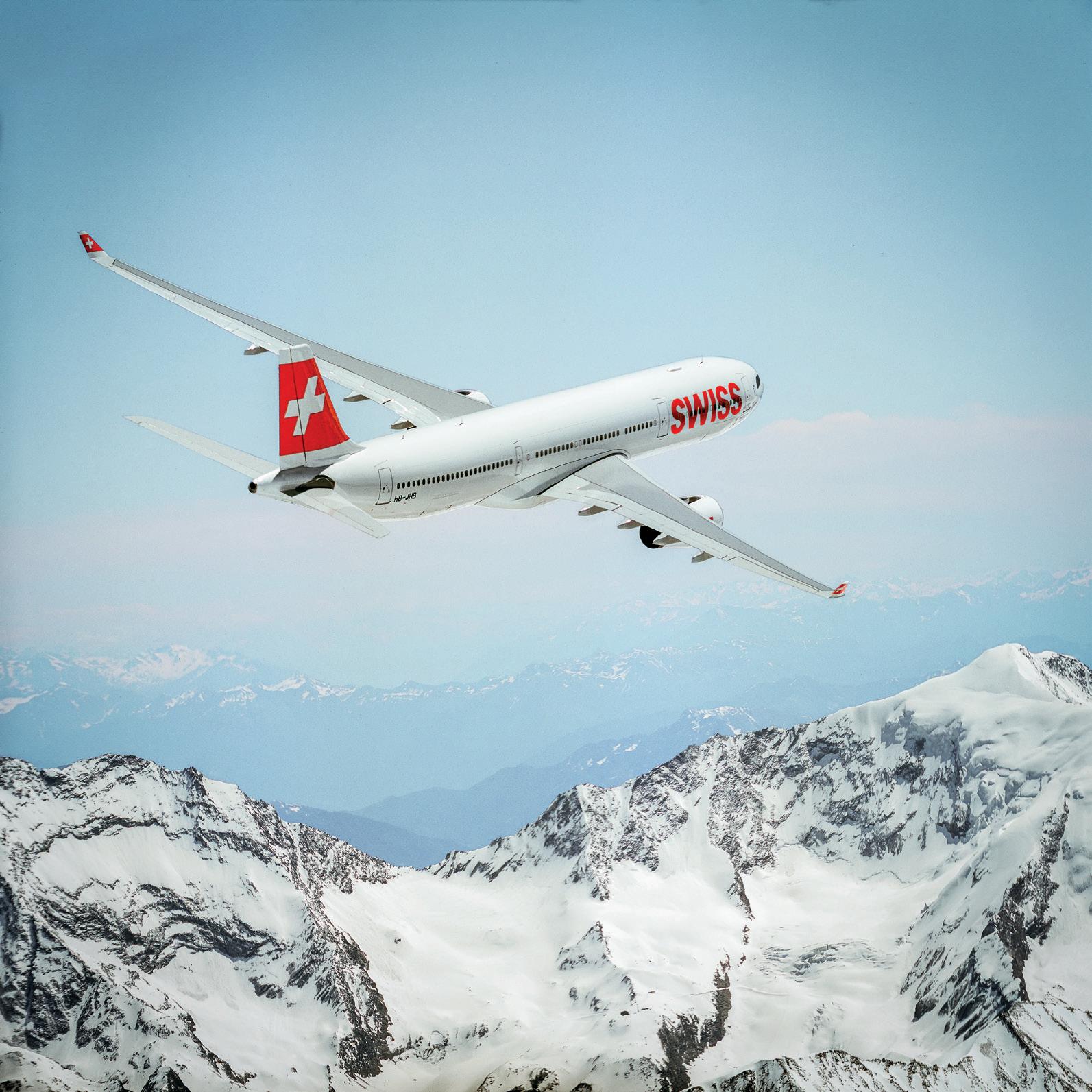
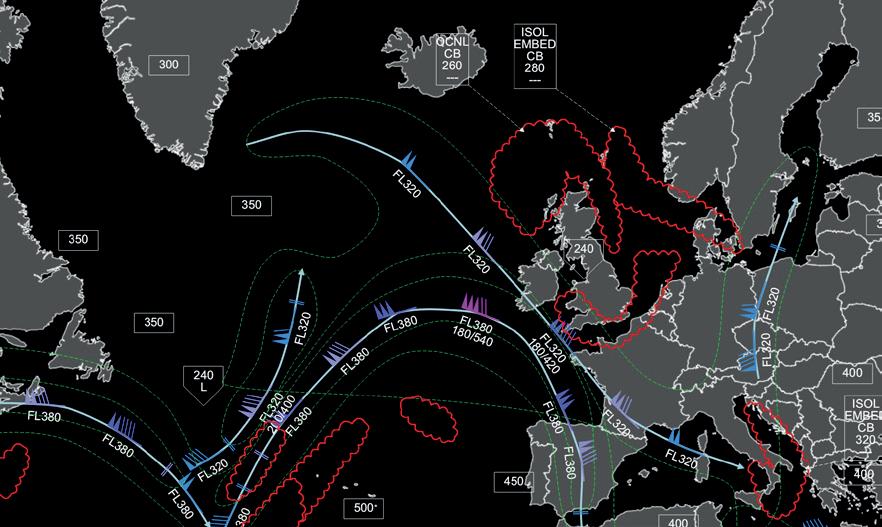
Between Europe on the East side of the figure and the US on the West side, you can see that, on the SWC, 50% 0f the North Atlantic is predicted to be rough air.
Figure 6
10 November 2023: Significant Weather Chart (SWC) North Atlantic, in green CAT area moderate and severe Figure 7.1
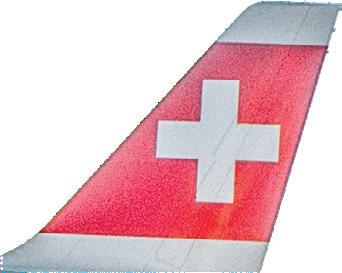

“Measurements are for the past four hours but when we have a twelve-hour flight, we want to know what will be happening in the next six hours and that’s where the models become very useful and, as you can see, there is a high level of accuracy between the forecast and the measurements…”
Use Case #1: Turbulence Mitigation
Turbulence measurement: an important source for real-time avoidance and model tuning

10
Use Case #1: Turbulence Mitigation

Use Case #1: Turbulence Mitigation
Turbulence

Use Case #1: Turbulence Mitigation

Turbulence measurement: an important source for real-time avoidance and model tuning
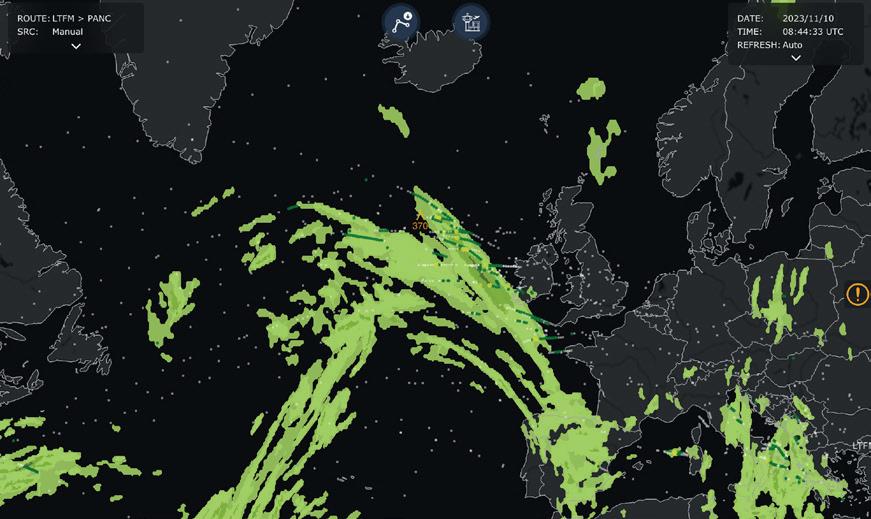

Turbulence



been predicted in the significant weather chart, figure 7.1, it is only around 20 percent of the predicted area where there is actually rough air. When we plan with the Significant Weather Chart and we go to the cabin crew briefing, they will ask how the flight is going to be. We can say that maybe there is something, maybe not, we cannot tell with any accuracy. But now, with measurable data, we can properly advise the cabin crew about what is going to happen and when it might be sensible to stop service because there is a high risk of turbulence related incidents.
I mentioned the predictions, the numerical models that are an add-on to the measurements. Measurements are for the past four hours but when we have a
twelve-hour flight, we want to know what will be happening in the next six hours and that’s where the models become very useful and, as you can see, there is a high level of accuracy between the forecast and the measurements these days. It represents a whole new step from what we used to have during the past 30 years (figures 7.3 to 7.6).
There are aircraft that don’t have the capability to automatically report turbulence and, in this example, we see the forecast from the very accurate German Weather Service (DWD) model with the PIREPS subjective reports. It offers a stunning accuracy that nowadays we have when we use these high resolution 4-dimensional (4D) forecast models.
10 November 2023: EDR and numerical turbulence prediction from German Weather Service EDP model
PIREPs: still an important addition, especially on aircraft without EDR reporting! Observe matching
Figure 7.3
Figure 7.5
Figure 7.4
Figure 7.6

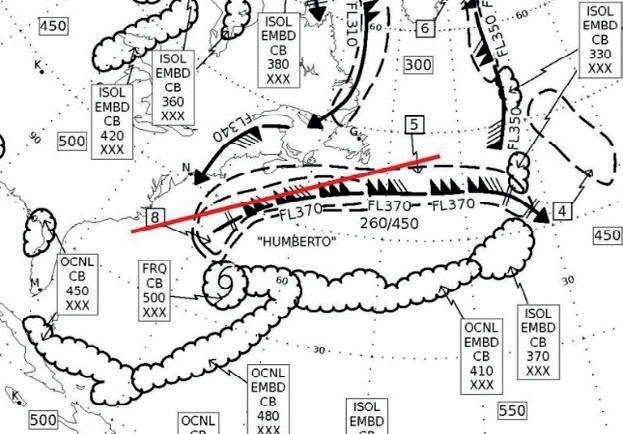

They had two options but neither option was comfortable because there was a hurricane over the Atlantic. They could choose to either go South and almost
“…surprisingly, there was a flight level that was predicting smooth air. The reason for that was that, in the Jetstream, there is usually a very small area of smooth air. They changed the flight plan to a lower altitude and the pilot on the flight reported that they did not encounter any rough air during the entire flight.”
through the Hurricane or they could stay North but there was an area of severe turbulence forecast along their route during the four-hour flight time. However, they had SITA eWAS with them and, on the vertical profile, they could see how, surprisingly, there was a flight level that was predicting smooth air. The reason for that was that, in the Jetstream, there is usually a very small area of smooth air. They changed the flight plan to a lower altitude and the pilot on the flight reported that they did not encounter any rough air during the entire flight. Had they just relied on the significant weather chart, it would have been quite a lot different.
Thunderstorm mitigation
The second use case that I’d like to share with you is a flight from June 2023 from Zurich to Copenhagen. Again, we start with the significant weather chart (figure 9.1).
Flight LX1270 Zurich –Copenhagen, 26 June 2023: what we normally used to use for planning Use Case #2: Thunderstorm Mitigation
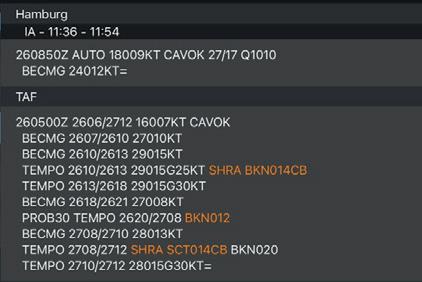
9.1
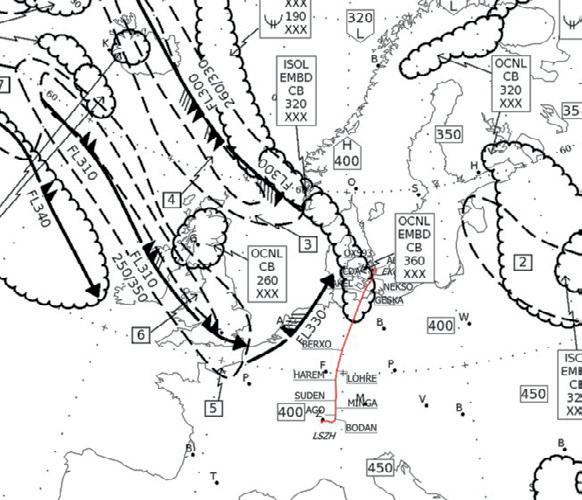

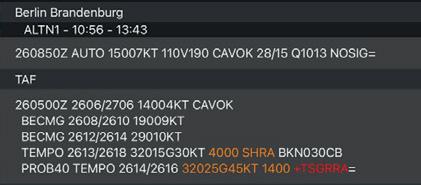
Vertical Profile: eWAS allowed to find a smooth flight level despite SEV turbulence forecasted in the SWC! Figure 8
Figure
Again, we start with the bare legal minimum that is required to look at in the weather briefing. There is a weather forecast for all the different airports and, on that day, we had the Copenhagen destination with a prediction of thunderstorms over a time frame of about four hours. There were some clouds marked but with no indication whether they were static or moving and, if moving, by how much. There was also thunderstorm activity around Hamburg and Berlin for about two hours after the forecast had been generated. The weather was within operating limits and so the flight was cleared to depart. However, about 20 minutes after departure, it was recognized that there was some weather ahead which was also on the aircraft’s weather radar. So, again, the pilots were faced with the question whether to go left or right with either way having a fifty-fifty chance of encountering weather. The decision was taken to go right, about 30 NM off track to avoid the clusters along the next 120 miles. Unfortunately, as the flight approached Copenhagen, the squall line grew ever larger, the sky darkened and the echoes on the radar became more pronounced. It was about 80 miles to the destination but, additionally to the significant weather chart, the flight crew was happy to have eWAS available with the DWD convection nowcast weather product which offered the following idea about what would happen on this flight (figure 9.2).
Use Case #2: Thunderstorm Mitigation
Flight LX1270 Zurich – Copenhagen, 26 June 2023: What we really used during flight planning

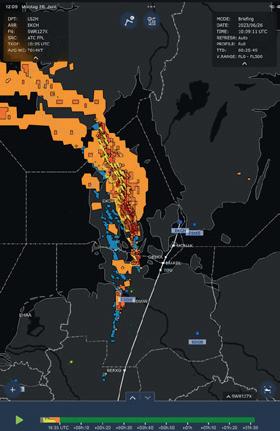

The actual situation, when the weather briefing was conducted in Zurich, looked like the picture in the middle so it could be seen that there was precipitation, there were lightning strikes, convective activity and a massive squall line about two hours from Copenhagen. The Nowcast models allow users to look up to two hours into the future and receive a very accurate prediction of where these thunderstorms will move to. Moving the slider to the right, to the time of arrival, it could be seen that that there was a reasonable chance of getting to the destination before the airport was closed (figure 9.3).
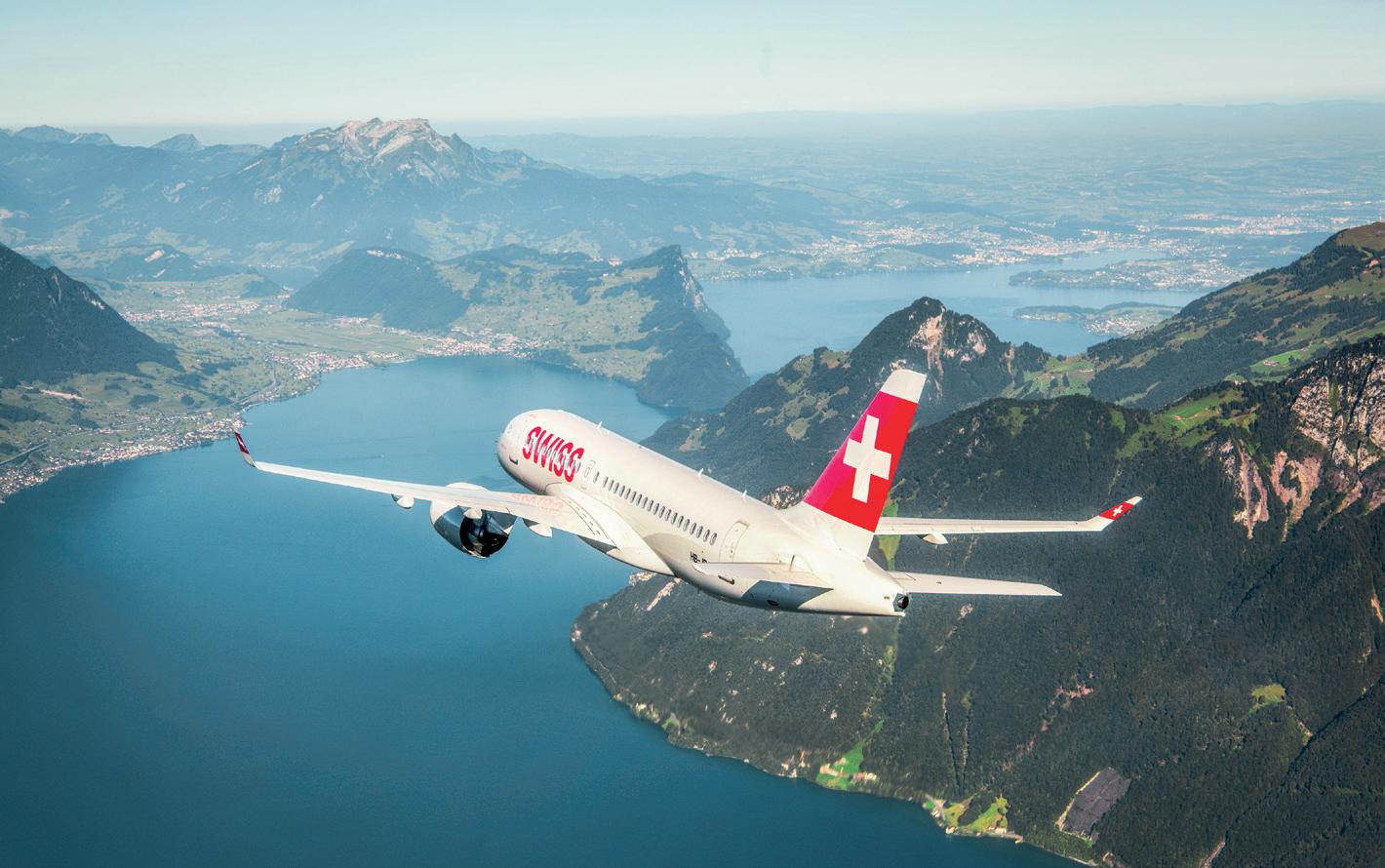
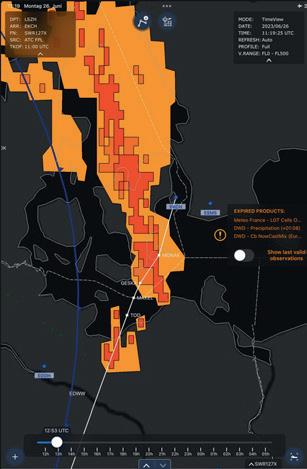
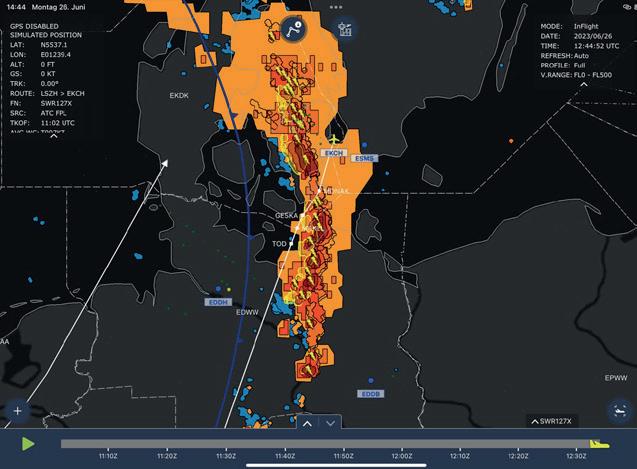
What happened in reality was that the image on the left was the time of arrival situation that was expected before departure while the image on the right was the actual situation at the time of arrival. As you can see, the actual situation encountered was a highly accurate match with the forecast. The airport was temporarily closed just after the flight arrived so the prediction was impressive. This example really shows what additional value can be gained from a weather app and novel weather products.
SITA eWAS isn’t complicated to use; it’s very intuitive. You simply move the time slider two hours into the future, make an assessment and you have a strategy for time in the air because you already know, and want to keep ahead of, the weather. Also, with plan B should the airport close, there will be a route through good weather to the alternate airport.
Figure 9.2
High level of accuracy also without inflight connectivity on short-haul using short-term forecasts!
Figure 9.3


German Weather Service, UK Met Office or Météo-France, to name a few, and they are all developing amazingly accurate forecasting models. As an airline, we want to be in a position where if, in the future, there is an organization or company coming up with something new, perhaps using Machine Learning, let’s assume a turbulence forecast with a hit rate of 99 percent, we want to be able to change to a different weather product. So, we talked to SITA, asked if they could integrate the new convection and turbulence products from the German Weather Service and, within half a year, it was in. We felt they had listened and that our requirements were taken notice of.
Something else is that, once the pilots are in the air, there are still people on the ground, monitoring the flight and that is called SITA Mission Watch route support, an application that mirrors the weather on the ground, SITA eWAS for dispatchers. That means that when the pilot talks to the people on the ground when making a decision on diversion, there is a shared mental model of the situation. When it comes to observation data, that’s straightforward because what is observed from a satellite is most likely there but when it comes to forecasts, it’s quite important that you have something similar or identical to look at.
The app also has a very intuitive user interface which meant that, for Swiss, there was no real need to train the pilots albeit that the digital natives were often faster to discover all of the hidden features in the app. And, to conclude, one of the pilots stated that when he moved from the black & white weather chart to a 4D aviation weather application, it was like going from the old analogue cockpit with gauges and dials, to a glass cockpit.
Having served in the Swiss Air Force since 2001, since 2013, Martin has been an airline pilot and technical pilot for Swiss International Air Lines. In 2016, he co-founded the aerospace research organization, Swiss SkyLab. His role includes the development of pilot assistance functions and advancements in aviation weather. Prior to Swiss, Martin worked at the German Aerospace Center (DLR) and Thales and holds a Master's Degree in Mechanical Engineering from ETH Zurich.
SWISS INTERNATIONAL AIR LINES

Swiss International Air Lines (SWISS) is Switzerland’s leading air carrier. With one of Europe’s most advanced aircraft fleets, SWISS is a premium airline that provides direct flights from Zurich and Geneva to keep Switzerland connected with Europe and the world. The company has also set itself ambitious carbon targets, and plans to halve its 2019 net carbon dioxide emissions by 2030 and make its business and operations entirely carbon-neutral by 2050. SWISS is part of the Lufthansa Group and is also a member of Star Alliance, the world’s biggest airline network.
SITA
“…we
want to be in a position where if, in the future, there is an organization or company coming up with something new, perhaps using Machine Learning, let’s assume a turbulence forecast with a hit rate of 99 percent, we want to be able to change to a different weather product.”

SITA provides solutions for airlines, airports, aircraft and governments, and connects more than 400 airlines on 17,000 aircraft globally. One hundred percent owned by the air transport industry, its service team has more than 2,000 people around the world, and helps power a digital shift to make air travel more connected, seamless, efficient, safe and sustainable.
INTERACTIVE GIVE US YOUR OPINION CLICK HERE TO POST YOUR COMMENT
INTERACTIVE SUBSCRIBE HERE
CLICK HERE TO READ ALL FUTURE EDITIONS

VENDOR FLIGHT LOG: NABLA MOBILITY
Using innovative technology to inform flight crews and dispatchers delivers immediate efficiency and safety benefits, says Shinji Tanaka

Shinji Tanaka is Founder and CEO of NABLA Mobility. Before founding the business, he worked as a Project Leader in BCG for seven years, supporting corporate strategy development, M&A, and operational transformation for various global companies. He also worked as an aircraft engine engineer in IHI for three years. Shinji holds MSc in Aeronautics and Astronautics from both MIT and the University of Tokyo.
Aircraft IT: Your name, your job title and the name of the business?
Shinji Tanaka: Shinji Tanaka, CEO, NABLA Mobility
Aircraft IT: How did NABLA Mobility get started?
SJ: In the aviation industry, where high energy consumption is a constant concern, the demand for decarbonization is surging, necessitating comprehensive measures. While hardware upgrades and the implementation of carbon neutral fuel require long timelines and significant investments, improving operational efficiency by utilizing software technology offers a faster impact, adds value regardless of future changes in equipment or fuel, and contributes to cost savings without the need for substantial additional investment. Furthermore, thanks to the advancements in communication
infrastructure and computing power, it is now possible to identify improvement opportunities in areas where software previously couldn’t do so, such as with frequent, irregular incidents that required highly
skilled personnel. NABLA Mobility was founded to leverage these opportunities and implement new capabilities in the sector, driving a paradigm shift in the operation of next-generation flight operations.
“…improving operational efficiency by utilizing software technology offers a faster impact, adds value regardless of future changes in equipment or fuel, and contributes to cost savings without the need for substantial additional investment.”
“Our models serve as fundamental infrastructure for the next era of aviation, and provide the innovation to underpin decarbonization efforts.”
Aircraft IT: What is the guiding business principle that drives NABLA Mobility?
SJ: We function as a deep tech, ML/AI development partner, providing powerful innovations to our customers in aviation. Our models serve as fundamental infrastructure for the next era of aviation, and provide the innovation to underpin decarbonization efforts.
Aircraft IT: What has NABLA Mobility’s greatest business achievement been to date, and why?
SJ: We have been partnering with airlines to develop our solution ‘Weave’. Weave is a web and iOS software for pilots and dispatchers to optimize trajectory and speed settings, enhancing safety by avoiding turbulence with our proprietary turbulence prediction capability. It assists in their decision-making, bridging the gaps between flight plans, FMS, and actual execution. Thanks to their support, we succeeded in demonstrating more than 80% positive feedback on enhanced safety awareness of turbulence, as well as annual saving potential of 20k USD for aircraft from short haul flight networks. Partnering with Peach Aviation, we also achieved a world first demonstration of efficient descent maneuvers resulting in more than 100lb of fuel saved per flight.
Aircraft IT: What have been your disappointments and what have you learned from them?
SJ: We recognize that software integration in the aviation industry is complex and essential. Gaining the trust of dispatchers and pilots is crucial, but the process of vetting and integrating new products is challenging, especially when pilots are hesitant to
adopt another screen. We’ve learned that new technology is more easily accepted when it can visualize past unpredictable events and highlight differences from existing systems. However, users often don’t fully grasp the limitations of their current systems, making it harder for them to see the benefits of new technology. The meaning of ‘optimization’ also varies, requiring us to clearly explain how our solutions improve upon the old system. Accuracy is key to building trust, and each challenge we face is an opportunity to refine our approach. We’re committed to continuous learning, ensuring our products meet the high demands of flight operations while instilling confidence in those who use them.
Aircraft IT: In a sentence, how would you summarize what NABLA Mobility does for aircraft operations customers?
SJ: NABLA Mobility is an aviation technology start-up committed to driving industry decarbonization by improving operational efficiency. We ‘Weave’ every piece in the stochastic flight operation by resolving the complexity of data. Our product, Weave, assists flight ops teams in decision-making, reducing cognitive workload and anticipating disruptions. It suggests optimal solutions, enabling teams to improve efficiency and reduce emissions while
retaining command of critical decisions. With Weave, airlines achieve a new level of operational performance, offloading cumbersome tasks while proactively addressing challenges.
Aircraft IT: What do you feel will be the next big thing in operations Aviation IT?
SJ: As a deep-tech software startup specializing in AI solutions for optimizing airline operations, we see the next big thing to be addressing critical industry challenges. The aviation sector faces a significant shortage of skilled professionals, particularly in flight operations. This shortage, coupled with the need for increased efficiency, drives demand for lean operations – streamlined processes that do more with less. We envision a solution that delivers insights for highly efficient fleet network operations, even in irregular environments, while minimizing cumbersome processes. This system will automate routine tasks, provide real-time optimization recommendations, and adapt to disruptions. With the increasing demand for decarbonization, green operations are inherently essential. While fuel savings remain important for decarbonization, the future of Aviation IT lies in creating leaner, more agile operations that thrive with limited human resources, ensuring sustainable and resilient airline operations.
Aircraft IT: What do you want your customers to say about NABLA Mobility?
SJ: An innovation powerhouse driving a new era of flight operations beyond existing frameworks.
Aircraft IT: Shinji Tanaka, thank you for your time.
“Our product, Weave, assists flight ops teams in decision-making, reducing cognitive workload and anticipating disruptions.”

Lufthansa City Airlines
Dominik Weber, Head of Flight Operations Support & Administration, Lufthansa CityLine and Maike Upmann, Product Manager, Lufthansa Industry Solutions, share Lufthansa’s roadmap to a rapid airline launch

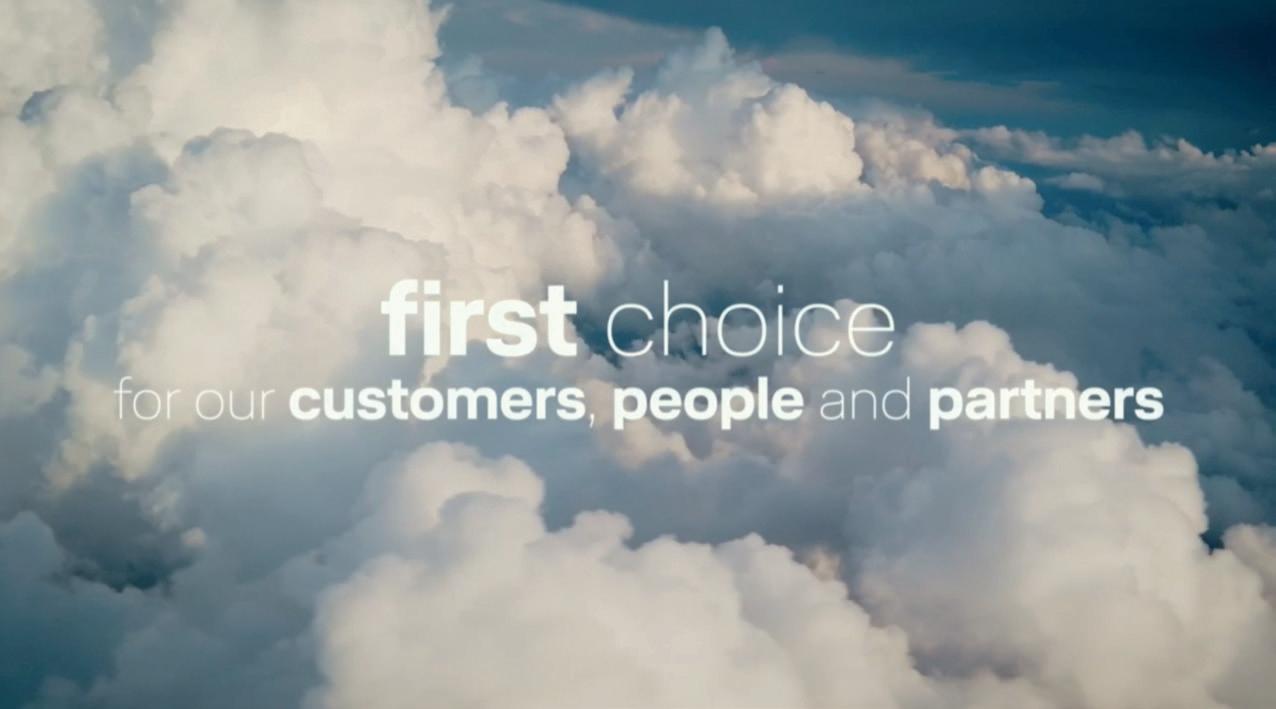
DOMINIK WEBER
The new Lufthansa City Airlines was set up in close cooperation with Lufthansa CityLine, Lufthansa and other Group companies. The commissioning of support
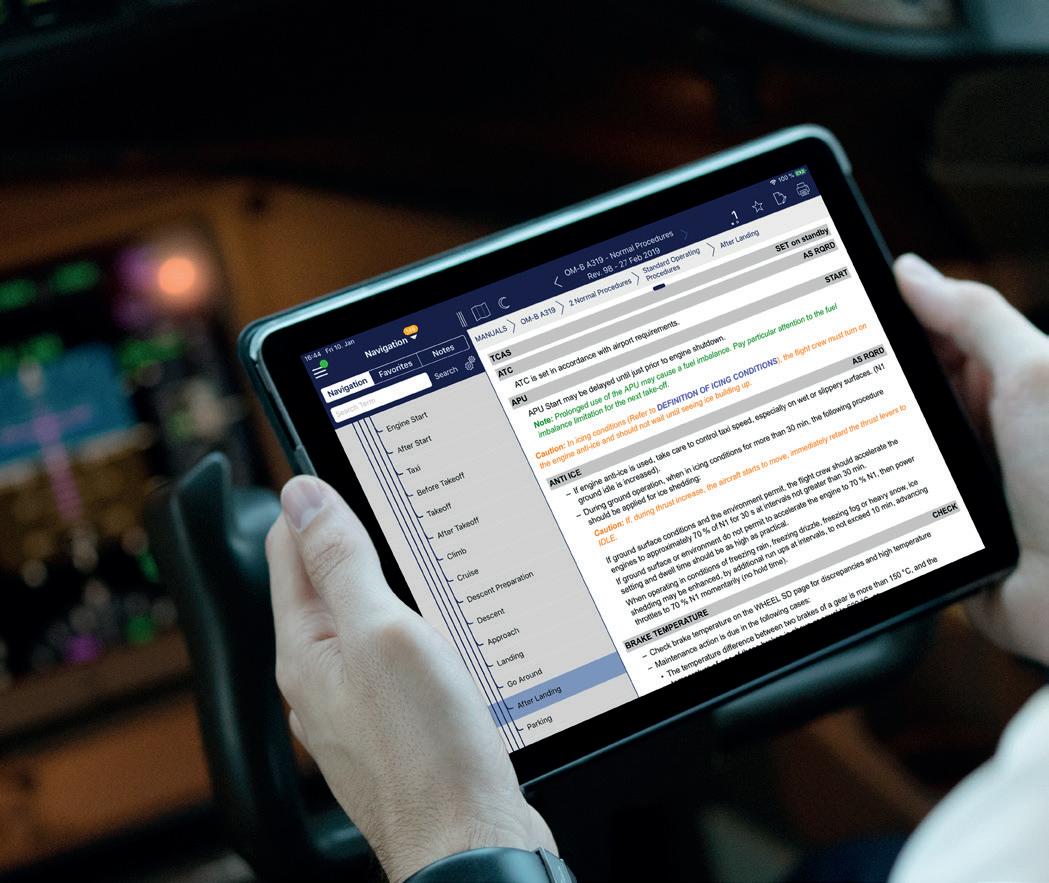
was carried out on a contractual basis. There is a real excitement to be part of launching a new airline and that’s what we want to share in this case study about Lufthansa City Airlines and especially focusing on the documents and operational documentation.
Lufthansa Group has launched a new AOC (Air Operator Certificate) called Lufthansa City Airlines. Aircraft for the new business have already been operated in the Group and were already documented in the Type Manual OM-B. Operating aircraft means having the operations documentation to hand but it does not necessarily mean that the new airline can just implement and take over the manuals. It normally takes a lot of effort in a process that can take up to three months, four months or even more with a large team to just bring all of the operational documentation together. In our case, the subject of this case study, all of that only took a short time because we were set up with the right systems, at the right point. We’re going to tell you how we prepared for this, how we achieved it and how we have continued with it. But first, a brief introduction of Lufthansa Group.
LUFTHANSA GROUP
We’re an airline group with nearly 100,000 employees who always strive to do their best. In 2023, we sold 250,000 million seat kilometers for a group fleet of 721 aircraft including 17 different aircraft types operated by 11 different airlines, quite a
Volabase: an interactive solution for flight operations documentation
▪ XML-based content management
▪ Manage entire fleet in one system
▪ Minimize data redundancy
▪ Single-source publishing
▪ Compliance management with IQSMS connector


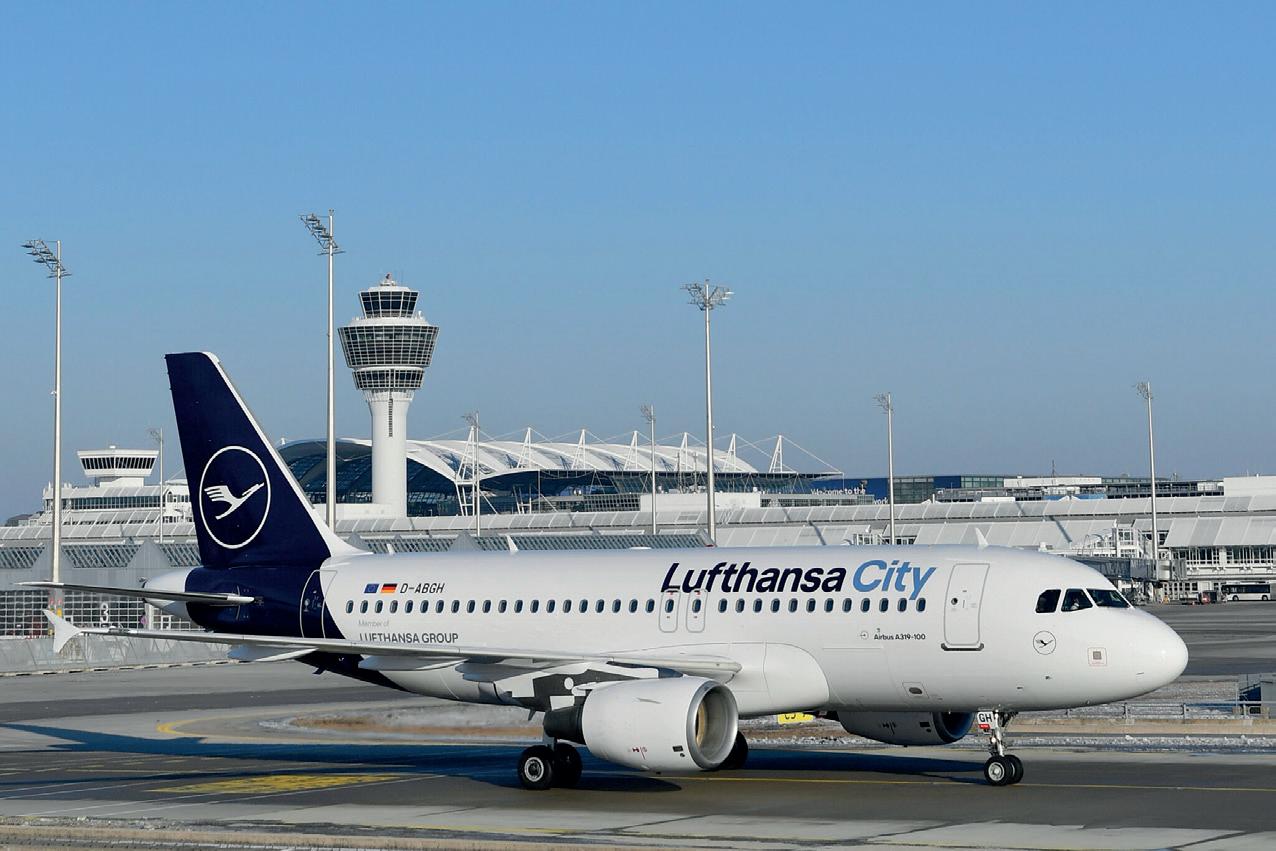
complex business. In 2023, Lufthansa Group operated nearly one million flights. Looking at where this case study is coming from; in 2018, we were discussing the necessity of digital documentation and that it’s crucial to have the documentation and operational documentation in a digital format (figure 1).
Status of Harmonization of Documentation-Landscape
Document




Document
Document
Lufthansa Group achieved that goal a couple of years ago and, at the same time, harmonized all documentation in the group. We’re all now XML based which is very important, especially for document distribution to flight crews, maintenance and CAMO. All of the different stakeholders are involved in this process and it means that our crews all see similar content in a similar form. One very important topic is compliance because, as you can imagine, creating a new airline brings with it a lot of issues regarding compliance monitoring and management.
HARMONIZING THE IT LANDSCAPE MAIKE UPMANN
When we look at harmonization in the Lufthansa Group, not all group airlines have reached the same level of harmonization at any time and, of course, any steps towards harmonization have to take place as an ongoing process during operations. To show you how such a system supports a step-by-step approach during ongoing operations, here is an example based on the legacy, and completely PDF-based, process (figure 2).
Harmonizing the IT Landscape Within LH-Group












As you can see here, it is a PDF-based Content Management System (CMS). The PDFs are distributed to an EFB application in the cockpit and to cabin crew devices. As a first step in moving to a digital documentation solution, exchange
“We’re all now XML based which is very important, especially for document distribution to flight crews, maintenance and CAMO. All of the different stakeholders are involved in this process ”
Figure 2
the CMS for an XML-based CMS such as Volabase CMS; then all of the PDF manuals can be migrated to XML. By doing that, you can create, as a first output format out of the Content Management Authoring System, a PDF again to be able to support the systems where the content will be viewed. The end users in the best case wouldn’t even notice that the PDF is coming from another source.
You can then take all the time you need to migrate all Manuals from PDF to XML. As soon as that is finished, it is possible to move to the next step and migrate the last part, the document distribution and viewing in order to fully switch to an XML-based process and, even there, you can distinguish and choose to go for the EFB process first and still support the PDF process for the cabin crew devices, generating more than one output format out of one source. Then, it’s quite straightforward, bringing all systems onto the XML-based process, to gain all the benefits there are for using XML-based documentation.
As Dominik said above, all Lufthansa Group airlines are already on a common platform which is Volabase (figure 3).
Volabase – the Collaboration Enabler
The Lufthansa Group content4ops Project








That is where Lufthansa City Airlines gained the most benefit for its launch because it could rely on an existing platform and on existing documentation and all set-up processes within the Lufthansa Group. Dominik will explain how Lufthansa City Airlines has done that.
HARMONIZING PUBLICATIONS DOMINIK
As already mentioned, it was crucial that all the documentation sent out was already in XML. PDF versions are really not adaptable, not flexible. If there is just one document which needs to be re-written; if there need to be any changes, such as if you are thinking to change just one name, you cannot just work with place

holders or something like that; but if it is an XML base and if you have functional effectivities which we’ll look at below, it makes it very flexible and very adaptive.
In our case, we had several manuals that we could just basically adapt on a common database, including the Ground Operations Manual, a common manual where we could just put in City Airlines as a new name to use the same Ground Operation Manual as the rest of the group. We could even adjust for small differences between the airlines, because it is possible to just tag individual pages or content to adjust it to specific procedures. But it is even better than that. I mentioned that we have 721 aircraft within the Lufthansa Group and each aircraft
Common platform:
Figure 3
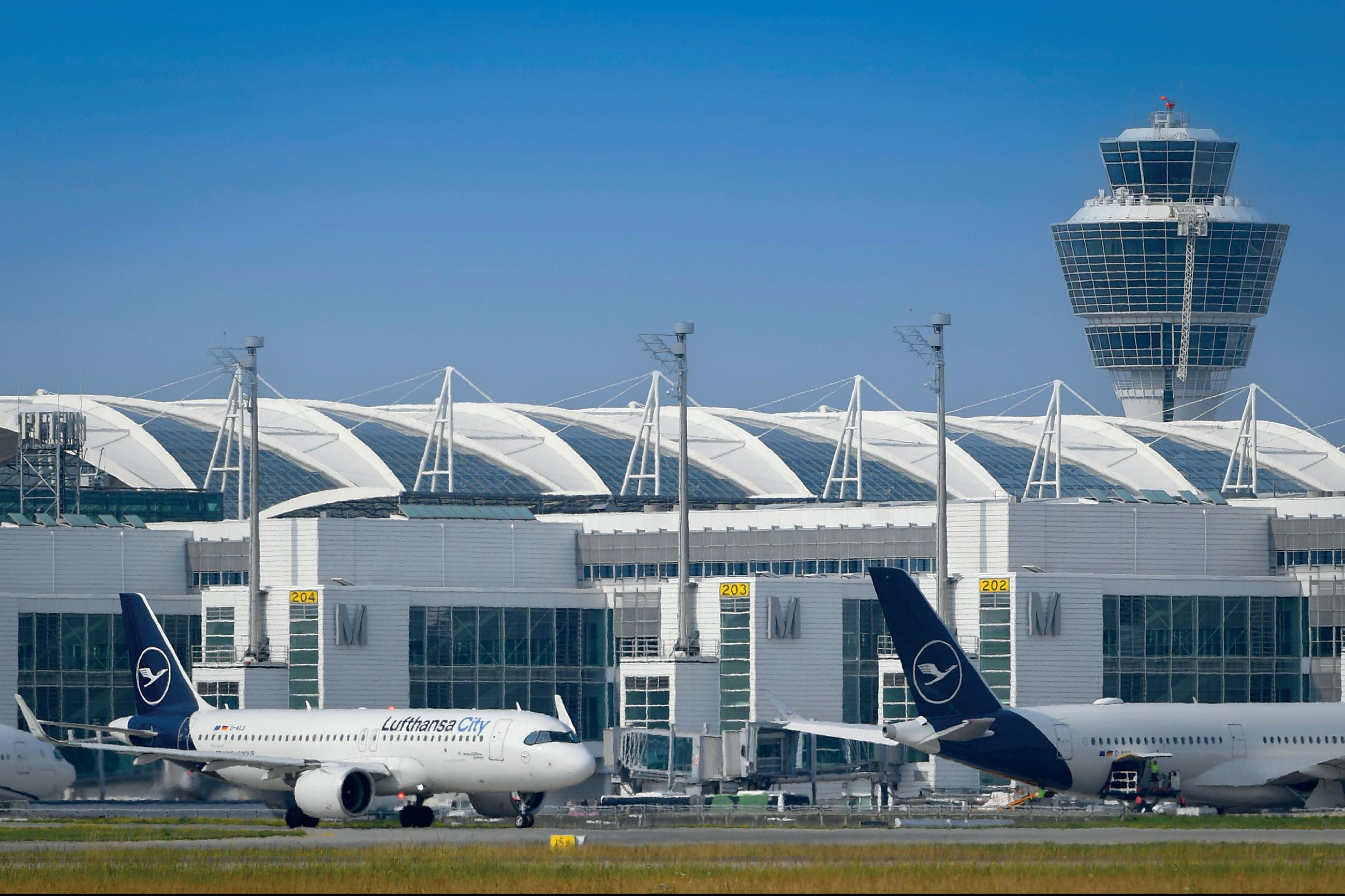
has its particular features, different equipment and different operations; having a content management system which can cover all of these different effectivities is very valuable, especially when you’re talking about transferring aircraft and, secondly, also very important are the operator specific details for every operator and AOC. Even if the group is very well harmonized, still Lufthansa operates its aircraft slightly differently than Lufthansa CityLine for example.
The good thing with Volabase is that all the needs can be aligned within generic effectivity (figure 4).
Variant Management
Based on Aircraft as Well as on Generic Criteria







It means that, when we want to publish a manual, we can mix the aircraft effectivity with the generic effectivity to get to the manual, perfectly tailored and customized for the group in question, in this case cockpit crews for Lufthansa City Airlines. On the CAMO side, we were very happy that we achieved with CityLine and City Airlines one CAMO company and, currently, it’s working well.
MAIKE
What else can Volabase offer? Harmonization is an ongoing process and it’s important to start with the same source (figure 5).
Volabase
– One for All
The One-for-All Harmonized Documentation-IT Environment













staff have to have access to the current documentation; there is a crew portal, there are ramp agents in ground ops and then there are the MRO companies for the airline’s aircraft. When all data comes from one source, the inter-App connectivity will run smoothly. For example, if you want to look for an MEL (Minimum Equipment List) item, it is kept in the OM-B and, in case of an error transferred by the pilot from the EFB MEL to the eTLB (electronic Technical Log Book) application and that will communicate on the other side with the MRO provider and the AMOS System. If all data comes from one source, all the communication can run smoothly.
And, of course, in such a large airline group, there are multiple output formats required (figure 6).
Support of Multiple Output Formats






COMPLIANCE MANAGEMENT DOMINIK
Data Exchange Workflow With IQSMS















Something that might cause some people to have sleepless nights, is the whole of
Especially if you’re running a lot of Airbus aircraft, you want to rely on the Airbus Apps provided in FlySmart and Volabase CMS comes into this as well; it can be integrated seamlessly into the Airbus data chain by supporting the native Airbus XML format plus you can customize the output and use it, for example, in the eQRH. That was a crucial decision for the Lufthansa Group. Also, some of the Apps are required in the cockpit and you want to maintain all your data in one system to gain the most benefit from that and to be able to use it for compliance management.


Figure 6
Figure 7

In figure 8.1, you can see Volabase CMS with all of the regulations and the example
in the blue outlined box, is linked to the 2.1.2 LH_OM-A part and that is being transferred to, for example, the audit perspective in IQSMS.


There you have all of the information at your fingertips (figure 8.2) and can even link, for example, to a viewer application here, so that you can access the
Just imagine, when you have to prepare for an audit, you do not need to crosscheck all of the references to see whether they’ve changed. You just look in the system and it automatically tells you each chapter where a potential change might be. Also, it’s automatically synced to our regulations database which means that, even if a regulation is changed, it will automatically give you an indication of the need to adjust topics or chapters; it gives you a lot of flexibility and peace of mind,
Another great feature of harmonization is that, if we’re using harmonized documentation using the same database, we can also use references in the same database. This means that, if one group airline did all the effort to prepare for a user audit, another airline in the group can automatically benefit from that work because we are all working on the same content structure. This feature is greatly appreciated and we’re looking forward to making even more use of it.
To summarize all of the benefits: It should become clear to everyone why we would benefit from a common Lufthansa Group solution for our flight operations documentation (figure 9)
Benefits of a Harmonization Process for Documentation
The Current Situation Within the Lufthansa Group (LHG)

Figure 9

Production Tool
§ One standard of LHG manual production
§ One source for all relevant data but considering individual processes
§ One source for regulation compliance (IQSMS interface)

§
§ Share content across companies and departments
§ Harmonize manuals company-wide
§ Moving aircraft between companies is much easier in the documentation process
We have the same production tool with one standard for all of our Lufthansa Group manual production; we have one source for all relevant data but still taking account of individual group airlines’ processes and procedures. We can do this with the aircraft effectivity tagging and the generic effectivities; and we have one source for regulation and compliance monitoring with the IQSMS interface. This brings us the benefits of collaboration over all Lufthansa Group Companies; we can share the content across the companies and departments; and we can harmonize the manuals company-wide in order to move aircraft between one AOC and another in the fastest feasible time.
Just to give you an overview of the user community using Volabase so far. Currently, the product is implemented solely for the Lufthansa Group with eleven administrators, 82 editors and nearly 550 subject matter experts (SMEs) who generate the content. Soon, the compliance managers will be added to this group. Although Volabase is currently just used for the Lufthansa Group community, it is planned to offer it on the market so that every airline will have the option to benefit from these improvements which have been implemented into Volabase working with the Lufthansa Group whose knowledge was transferred to the product. That has been the theme of this case study, to share our knowledge and experience with readers who might be thinking about embarking on a similar program.
INTERACTIVE
CLICK
INTERACTIVE
DOMINIK WEBER

Dominik joined Lufthansa Group in 2015 just before graduating in International Marketing Management. He worked in Flight Operations Support at Lufthansa CityLine and in Area Management Asia-Pacific in Singapore before returning to Lufthansa CityLine as Manager of Flight Operations Support. Shortly after, he was appointed lead of this division, responsible for operational procedures, flight operational IT, crew administration, fuel-saving strategies and documentation control. He recently completed his Executive MBA at the Technical University of Munich.
MAIKE UPMANN

Maike joined Lufthansa Industry Solutions in 2000. She started her professional career in several technical documentation projects within the Aviation Industry (MRO and Flight Ops), where she took over several roles, such as application developer, consultant, and project manager. Responsible for the product management of Volabase, an XML-based content management system for Flight and Ground Ops documentation, Maike currently balances customer-related requirements with IT-specific implementation for successful introduction projects.
LUFTHANSA CITY AIRLINES
Founded in Munich in spring 2022, Lufthansa City Airlines stands for a reliable and attractive short- and medium-haul service with proven Lufthansa quality. With a fleet of Airbus 220 and 320 family aircraft, this new airline will strengthen the European route network in the Lufthansa Group from summer 2024. Our guests benefit from a continuous booking process as well as fast and convenient connections to the global route network at Lufthansa hubs. Behind the company is a highly professional team in the cockpit and cabin, characterized by training according to Lufthansa standards as well as by a great diversity. In the administrative and technical areas, Lufthansa City Airlines works in close coordination with Lufthansa CityLine and the Lufthansa Group for the new flight operations.
Having started in 1958 as an Air Taxi service, Lufthansa CityLine, a wholly owned subsidiary of Deutsche Lufthansa AG, is now a regional European carrier specializing in hub traffic at Frankfurt and Munich airports. The airline supports Lufthansa’s worldwide route network with flights to European capitals and regional cities. The fleet comprises around 50 modern and efficient aircraft including the Airbus A320neo, Airbus A319, Embraer 190, Bombardier CRJ900 and Airbus A321P2F.
LUFTHANSA INDUSTRY SOLUTIONS

Whether it’s about developing a company-wide digitalization strategy, networking machines, moving systems to the cloud or providing solutions and platforms for analytics and AI, using IT services to network machines or providing mobile platforms for cross-company collaboration... whenever companies want to address digitalization, Lufthansa Industry Solutions is the right partner. Lufthansa Industry Solutions combines technical expertise with strong industry knowledge to support customers when they introduce new digital technologies.
VENDOR FLIGHT LOG: WEB MANUALS
Supporting
better documentation, explains Richard Sandström, helps airline operations to stay compliant, enhance safety, and communicate more effectively with their teams

Richard Sandström, a Lund Institute of Technology graduate, is a meticulous software developer with over 20 years’ experience. He specializes in cybersecurity, data science, and AI, with a strong passion for innovation and customer-focused software solutions. As CTO of Web Manuals, Richard combines his deep technical expertise with a strategic vision, aligning the company’s tech roadmap with longterm business goals. His leadership drives product modernization, ensuring the company stays ahead of industry trends and delivers high-performance, optimized solutions.
Aircraft IT: Your name, your job title and the name of the business?
My name is Richard Sandström, and I’m the founder and CTO at Web Manuals.
Aircraft IT: How did Web Manuals get started?
RS: Web Manuals was founded in 2012 after our CEO, Martin Lidgard, and I identified a need for a cloudbased system to manage aviation manuals. Initially, while pitching a different software product, a prospect asked for a tool to write and distribute manuals digitally. This sparked the idea for Web Manuals. We created a platform that revolutionized how aviation manuals are created, managed, and updated, making the process more efficient and streamlined for the entire industry.
Aircraft IT: What is the guiding business principle that drives Web Manuals?
RS: The guiding business principle is centered on innovation, customer-centricity, and a dedication to excellence. We strive to provide a user-friendly, cloud-based platform that revolutionizes the way aviation manuals are created, managed, and distributed, with the goal of enhancing the efficiency
and safety of our clients’ operations. Building a strong Web Manuals community is key for us, and it’s reflected in the user conferences we have in EMEA, APAC, and the Americas. Our customers are the main focus when developing our product and services. They fuel us with a passion for innovation and motivate us to exceed their expectations and empower aviation professionals with the best possible tools for success.
“We strive to provide a user-friendly, cloud-based platform that revolutionizes the way aviation manuals are created, managed, and distributed, with the goal of enhancing the efficiency and safety…”
Aircraft IT: What has Web Manuals’ greatest business achievement been to date, and why?
RS: One of our greatest business achievements has been the successful establishment of offices in key global regions, such as the Americas and APAC. This growth demonstrates our ability to adapt and cater to the diverse needs of the aviation industry across different markets. By establishing a strong presence in these regions, we’ve been able to onboard a significant number of new clients, further solidifying our position as a leading provider of digital documentation solutions worldwide. This expansion not only showcases the effectiveness of our platform in enhancing operational efficiency and safety on a global scale but also reflects our commitment to supporting the aviation industry’s needs wherever they arise.
Aircraft IT: What have been your disappointments and what have you learned from them?
RS: Early on, we faced resistance from some users who were deeply rooted in traditional methods of managing manuals. This experience taught us that even the most robust technology requires comprehensive training and effective change management for successful adoption. We quickly realized that a seamless transition hinges on not just the quality of our platform, but also on how well we support and guide our users through the change. In response, we significantly enhanced our training programs and support resources, customizing them to address specific user concerns and ensuring a smoother transition. We also became more proactive in our onboarding process, engaging closely with users to better understand and meet their needs from the outset.
We’ve learned that the path to success is rarely linear. Some of our greatest achievements began with challenges, but these experiences have reinforced the importance of continuous evaluation, adaptation, and a willingness to pivot when necessary. By staying agile and responsive to both market demands and technological advancements,
“…a seamless transition hinges on not just the quality of our platform, but also on how well we support and guide our users through the change. In response, we significantly enhanced our training programs and support resources, customizing them to address specific user concerns and ensuring a smoother transition.”
we’ve been able to consistently provide exceptional value to our global customers.
Aircraft IT: In a sentence, how would you summarize what Web Manuals does for aircraft operations customers?
RS: Web Manuals empowers aircraft operations customers by providing a system that simplifies the creation, management, and distribution of documentation, enabling aircraft operations to stay compliant, enhance safety, and communicate more effectively with their teams.
Aircraft IT: What do you feel will be the next big thing in operations Aviation IT?
RS: The next big thing in aviation IT will be the integration of AI-driven analytics and real-time data processing to transform operational efficiency. We’re on the cusp of seeing AI revolutionize predictive maintenance, where it will anticipate and prevent technical issues before they occur. AI-driven decisionmaking tools can analyze vast amounts of data to optimize flight efficiency, safety protocols, and overall operational management. AI will also revolutionize
how we handle aviation manuals and operational documents by enhancing search capabilities. We’re leading this shift with Web Manuals Amelia AI, which empowers users to make safe and well-informed decisions. This advancement is improving accuracy, and ensuring that aviation professionals have timely access to crucial information, ultimately driving greater efficiency and safety in aviation operations.
Aircraft IT: What do you want your customers to say about Web Manuals?
RS: We frequently gather the Web Manuals community at events, where our customers meet and provide real-life examples of how our system significantly saves time and effort in maintaining regulatory compliance and streamlining their approval processes with authorities. We take pride in hearing anecdotes about Web Manuals ability to enhance collaboration and integrate seamlessly with other systems, improving efficiency and accuracy in customers’ flight operations and supporting their growth goals.
Aircraft IT: Richard, thank you for your time.
“… our customers meet and provide real-life examples of how our system significantly saves time and effort in maintaining regulatory compliance and streamlining their approval processes with authorities.”
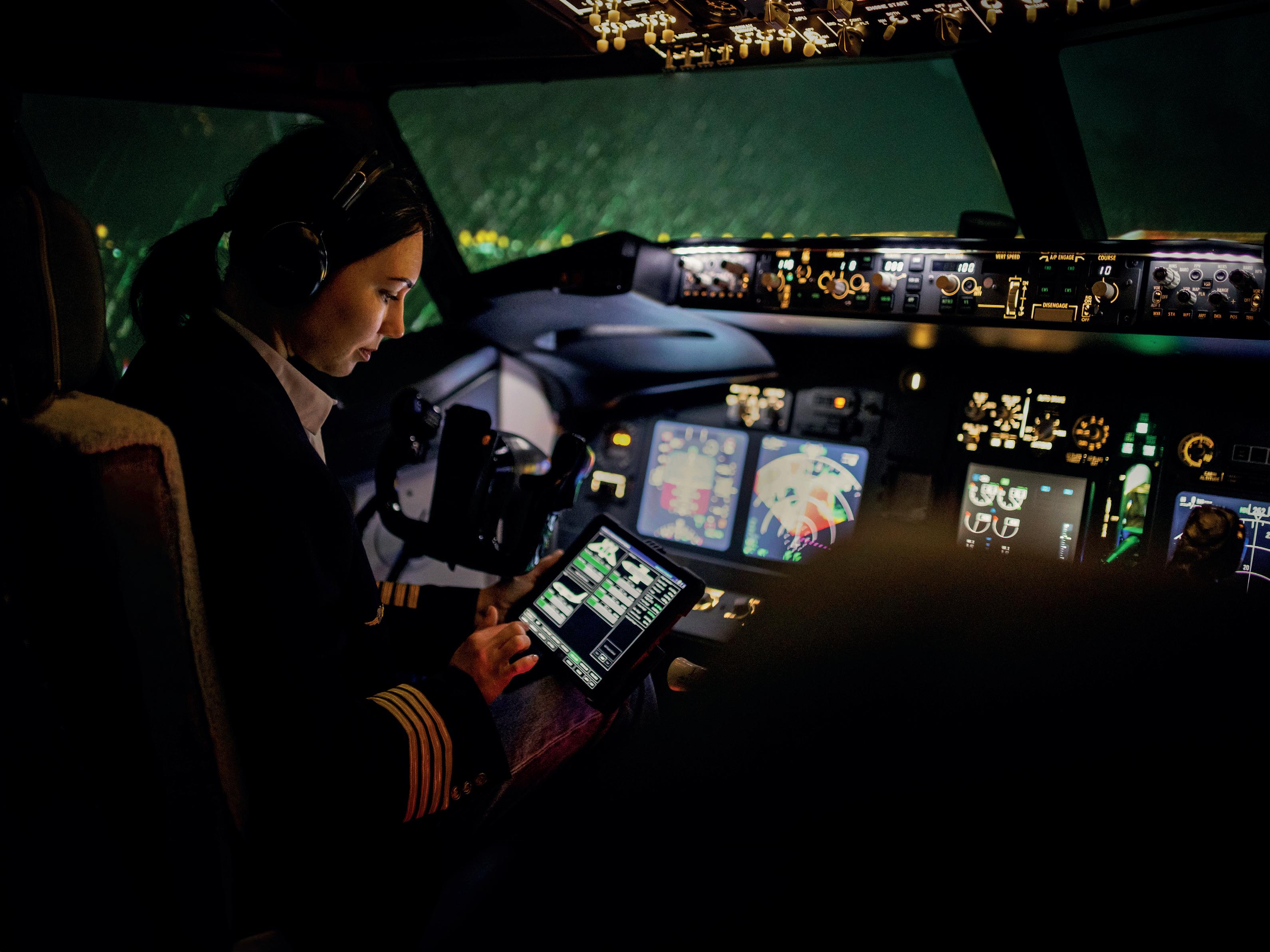
EFB and the rise of new technologies
Klaus Olsen, CEO, EFB Admin Services considers airline EFB challenges and what will come next

In this article, I’d like to look at the EFB (Electronic Flight Bag) challenges currently facing the airline industry and, at the same time, consider what is coming next for EFBs and the rise of new technologies. But I’ll start by telling you a bit about EFB Admin Services.
EFB ADMIN SERVICES
As the name suggests, our company delivers EFB Administrator services; we also manage various EFB projects for airlines and software suppliers. We have headquarters in Oslo, Norway with offices also in London, Barcelona and in Türkiye.
CHALLENGES FOR EFB USERS
Broadly speaking, there are three constant and current challenges that face EFB projects (figure 1).
CURRENT CHALLENGES IN EFB PROJECTS

Real-Time Connectivity:

Issues with maintaining reliable and consistent connectivity. Security and Compliance:
Ensuring data security and meeting regulatory requirements.

Integration with Airline Systems:
Challenges in integrating EFBs with other key airline systems like flight management and communication systems.
Figure 1
Real-time connectivity refers to issues with maintaining reliable and consistent connectivity. Security and compliance are about ensuring data security and meeting regulatory requirements. Integration with airline systems is the familiar challenge of integrating EFBs with other key airline systems like flight management and communications systems.
When I sat down to write this, my first note was about real-time connectivity which reminded me of an article that I wrote for Aircraft IT ten years ago, ‘Norwegian EFB Connectivity’, about the connected EFB. It was surprising to see that connectivity is still a challenge for EFBs. In the early 2010s, a significant milestone was reached with the integration of cellular connectivity within EFBs and this advance enabled real-time data updates including weather information, Notices to Airmen, and other operational data allowing pilots to access updated information during flight. This improvement in situational awareness was a real game changer for flight operations back then.
“Let
“This
innovation allows for multiple operator profiles on a single SIM card, enabling the use of various roaming networks within the same country. As a result, users can select their preferred roaming operator …”
Despite technological advancements, maintaining consistent EFB connectivity remains a challenge. Reflecting on our journey, about a decade ago, we partnered with a small mobile technology operator in Denmark, VOOPI (pronounced, Whoopee). They offered promising EFB connectivity solutions at reasonable prices. We onboarded them for Norwegian Air’s EFB system, and while the initial connectivity was satisfactory, we faced various challenges that required innovative solutions.
During a strategic discussion with VOOPI’s executives in Denmark, the concept of utilizing multiple operators for connectivity emerged. This led to the creation of multi-SIM technology, which GigSky, famous for its sophisticated redundant cloud based mobile core and co development of the GSMA compliant eSim, patented after acquiring VOOPI. This innovation allows for multiple operator profiles on a single SIM card, enabling the use of various roaming networks within the same country. As a result, users can select their preferred roaming operator based on the country, optimizing connectivity.
The system was highly effective until the COVID-19 pandemic hit, causing a dramatic decline in connectivity due to reduced travel. Unfortunately, the dramatic decline in global traffic meant that during COVID the cost structure of the operator model that GigSky had developed became untenable, setting us back nearly a decade. Fortunately, travel began rebounding 18 months ago so today, GigSky has rebuilt its multi-meshed capability and is diligently working with a breadth of operators to enhance this system beyond its pre-COVID standards. The pandemic caused significant setbacks, but the operator’s commitment to enhancing EFB connectivity remains unwavering.
As we look to future advancements in connectivity, technologies such as 5G and satellite communication will further enhance EFB capabilities. Another provider that I think will play a great part within the EFB industry is the Starlink network. There are already a couple of airlines undertaking pilot studies with them, and the Starlink system promises to revolutionize in-flight connectivity by providing high-speed Internet access across the globe and, with its network of low earth orbit satellites, Starlink can ensure reliable and fast connectivity for crucial systems such as EFB.
However, with all this increased connectivity, comes the need for robust security measures to protect sensitive data from breaches and unauthorized access. Ensuring data integrity and availability will remain a top priority as we continue to advance in this digital age.
CASE STUDIES AND SUCCESS STORIES
I think it will be illustrative to highlight some of EFB Admin Services’ customers’ success stories (figure 2).
CASE STUDIES AND SUCCESS STORIES
• GigSky reporting tool
• Deployment setup through MDM
• Locking the user in Shell environments
• In-depth GAP Analysis to pinpoint focus areas
• Close collabs with the software provider to ensure client success

Since we are looking at connectivity, I’d first like to mention one of the things that we’ve done together with GigSky.
Tracing a connectivity problem
A common issue in the airline industry is reports of connectivity problems, typically communicated by the Operations Control Center (OCC) or the Flight Operations team. These reports often lack detailed information, making troubleshooting challenging. To address this, we collaborated with GigSky to enhance the feedback process from pilots.
Recognizing the immediate need for more precise and punctually reported data during connectivity issues, we proposed the development of an application that allows pilots to report problems in real-time. GigSky responded by designing and implementing the GigSky Issue Reporting App. This app enables pilots to instantly capture and send the GPS location and timestamp of connectivity issues along with issue symptoms. This crucial information significantly aids in troubleshooting by providing a clear picture of where and when the problem occurred. For instance, it helps determine if the aircraft was at
Figure 2
a specific gate or a remote parking stand known for poor connectivity. The effectiveness of this app has led to its widespread adoption among airlines, substantially improving the troubleshooting process. It allows maintenance teams to pinpoint issues more accurately and implement targeted solutions.
One of the reasons for focusing on GigSky is that they have built in many tools and capabilities that go way beyond what the traditional mobile operator is capable of. GigSky’s commitment to enhancing EFB connectivity and their ability to adapt to the unique needs of airlines make them a top choice for aviation connectivity solutions.
OUTSOURCING EFB ADMINISTRATION
At EFB Admin Services, we understand that the term ‘EFB Administrator’ might cause concern among some readers who hold this role within their airlines. We want to assure you that our goal is not to replace existing EFB administrators but to provide support and enhance operational efficiency. Our services include acting as a designated EFB Administrator for airlines, conducting GAP analyses on current systems, and assisting with various EFB projects. We are here to collaborate with you and improve your EFB processes, not to take over your job (figure 3).
BENEFITS OF OUTSOURCING EFB ADMINISTRATION
• Cost Efficiency:
o Outsourcing vs. in-house management.
• Expertise and Specialization:
o Leveraging specialized knowledge and experience.
• Enhanced Compliance and Risk Management:
o Ensuring regulatory compliance and managing technological risks

In a case that illustrates this, we had an African Airline that faced a significant challenge when their EFB administrator passed away. They needed comprehensive support to go paperless, to select software providers, establish secure mounts and charging systems, and ensure cybersecurity measures. We stepped in to provide
“We conducted an extensive GAP analysis and provided detailed feedback ensuring that their software met all regulatory and operations standards.”
end-to-end solutions, including compliance with the ANAC regulations. We wrote their EFB policy, procedure manuals and user guides. We also established various tasks as well as a secure MDM system and automated ABM to MDM deployment of their EFB applications. Today, we continue to serve as their EFB administrator even though their goal, down the line, is to take over that function themselves.
As I briefly mentioned above, it’s not only airlines that utilize our services. one of the major software suppliers also asked us to verify new EFB software. They needed expertise in FAA and other regulation authorities; they wanted us to check operational suitability, documentation, GAP analysis with other solutions plus service and support requirements. We conducted an extensive GAP analysis and provided detailed feedback ensuring that their software met all regulatory and operations standards. Our report also highlighted areas for improvement and confirmed the software’s compliance with industry standards.
The COVID-19 pandemic has led to a significant loss of skilled personnel across many airlines, resulting in understaffed departments. This is another area where we can provide valuable assistance. For instance, a European airline struggling with device control, software lockdown, connectivity issues, and deployment solutions approached us for help. We assisted them by securing their software within a shell environment, optimizing software and login options, and enhancing connectivity with robust login functionality. We also explored various deployment options, and the airline now relies on our services monthly, utilizing a substantial number of pooled hours.
Additionally, we collaborate with non-commercial airlines. One such organization, referred to us through industry recommendations, sought improvements in their EFB software and setup, along with potential future EFB administrator support. We conducted a GAP analysis of their current setup and compared it with two preferred software suppliers. This analysis will guide their new software selection, and we continue to serve as their independent contractor, prepared to step in as EFB administrators if needed.
These examples demonstrate how our services enhance airline operations, from connectivity solutions to comprehensive EFB management and GAP
Figure 3
“These technologies are not just buzzwords, they are set to revolutionize how airlines operate, ensuring greater efficiency, safety and innovation. There are two critical aspects that we should understand about AI.”
analyses. Our expertise and support are tailored to meet the specific needs of airlines and operators, ensuring operational excellence.
AI AND ML ENHANCING EFB EFFICIENCY
As part of this article, I also want to delve into the transformative impact of artificial intelligence (AI) and machine learning (ML) on the electronic flight bag ecosystem. These technologies are not just buzzwords, they are set to revolutionize how airlines operate, ensuring greater efficiency, safety and innovation. There are two critical aspects that we should understand about AI (figure 4).
ENHANCED EFFICIENCY WITH EFBS
Operational Efficiency:
• Streamlined flight planning, quick access to information.
Flight Safety:
Automated calculations, real-time data, and reduced human error.
Cost-Effectiveness and Environmental Sustainability:
• Reduction in paper use and fuel savings

Figure 4
AI is the first tool in history that is able to make decisions independently; all previous tools required human intervention to make decisions which empowered us to use them effectively. Traditional tools and systems, whether used for navigation, communication or computation cannot decide on their own actions or outcomes. AI, however, can make autonomous decisions. For instance, in the
context of autonomous systems, AI can determine the best course of action without human input. This capability is unprecedented and represents a significant shift in how we interact with technology today.
Furthermore, I just want to share with you that, just for the sake of it, we use AI generated images for the figures in this article. This is a perfect example of what it will give you (figure 5).
AI AND MACHINE LEARNING IN EFB TECHNOLOGY
Predictive Analytics: Using AI and ML to predict maintenance needs and optimize flight paths.
Automation:
Automating routine tasks to reduce pilot workload and increase efficiency.
Enhanced Decision-Making:
AI-driven insights for better operational decisions.
5
The image shows an amazing aircraft with four wings and heading for a head-on collision with the aircraft from who’s cockpit the image is generated. In short, be careful what you ask for! Also, the text in the image is mixed up an doesn’t make sense which is exactly why I have included it because it shows the pros and the cons of AI.

“AI
could, increasingly, assume more control, potentially leaving us with diminished power and understanding of the systems we rely on. As AI continues to evolve, it will be crucial to consider how we manage and integrate this technology to ensure that it enhances rather than diminishes our capabilities.”
Figure
Also, AI is the first technology in history capable of generating new ideas by itself. While the printing press could disseminate human ideas, it couldn’t create new ones; AI, on the other hand, can generate original concepts and solutions and that is truly revolutionary. It makes AI the first technology that, instead of solely augmenting human capabilities, has the potential to operate independently of human control. The profound implication of this is that AI could, increasingly, assume more control, potentially leaving us with diminished power and understanding of the systems we rely on. As AI continues to evolve, it will be crucial to consider how we manage and integrate this technology to ensure that it enhances rather than diminishes our capabilities.
So, if you imagine an AI powered feature integrated into the EFB that functions like a photographic memory, recording every activity conducted on the device, this could revolutionize flight operations by allowing pilots to easily recall past actions and decisions for instance, if a pilot needs to revisit specific flight data or further information accessed earlier, they can do so effortlessly through natural language queries. This feature enhances situational awareness and decision-making efficiency critical in dynamic flight environments. However, this convenience comes with security considerations. Ensuring that all data is stored locally on the hardware and that you have implemented stringent access controls is paramount (figure 6).
ENHANCED CONNECTIVITY AND CYBERSECURITY
• Future Connectivity:
• Advanced satellite communication and real-time data exchange.
• Cybersecurity Measures:
• Implementing robust security protocols to protect sensitive flight data.

We must prevent unauthorized access to sensitive data, especially if a threat actor gains physical access to the device. This scenario underscores the need for robust cybersecurity measures to safeguard sensitive flight data.
“We
must prevent unauthorized access to sensitive data, especially if a threat actor gains physical access to the device. This scenario underscores the need for robust cybersecurity measures to safeguard sensitive flight data.”
Another thing is the adaptation of cloud-based technology in the aviation sector today. It is expected to grow significantly, driven by digital transformation, increased mobile and internet use and the need for advanced data analysis. Cloud platforms such as Microsoft Azure, Amazon Web Services and Google Cloud offer scalable and flexible solutions for storing and processing large amounts of flight data. For airlines, this obviously means enhanced capabilities for predictive maintenance, real-time flight monitoring and data-driven decision making. However, again, with this growth comes the need for stringent data security protocols to protect sensitive information from breaches and unauthorized access.
I assume that a lot of readers will know about Microsoft Co-Pilot which is everywhere today and, if you imagine Co-Pilot’s integration into an EFB as an AI assistant, it could streamline numerous tasks from generating pre-flight briefings to compiling post-flight reports and, by accessing and analyzing data from various sources, Co-Pilot could provide pilots with comprehensive insights and recommendations allowing them to focus more on critical flight operations. However, the extensive access that Co-Pilot would have to sensitive data
“Pilots must be able to trust the information presented to them and any errors or inaccuracies could have serious implications. While
the integration of AI and machine learning in EFBs offers numerous benefits,
it also presents a lot of challenges.”
Figure 6
presents significant security challenges. Protecting sensitive data from unauthorized access and ensuring it is not exposed or mishandled is crucial. As AI generated data grows, so does the responsibility to safeguard it effectively.
The same situation can arise with Google; you have the AI-powered search features that could be leveraged into EFBs to provide pilots with real-time information and updates. For instance, it could summarize weather updates, the active NOTAMS and other critical flight information directly within the EFB’s interface. But, again, while this offers considerable advantages in terms of efficiency and accessibility, it also raises concerns about accuracy and reliability. Pilots must be able to trust the information presented to them and any errors or inaccuracies could have serious implications. While the integration of AI and machine learning in EFBs offers numerous benefits, it also presents a lot of challenges.
AI systems storing and processing sensitive flight data must be protected against breaches. Unauthorized access could lead to data theft or manipulation compromising flight safety. Imagine how easy it could be to manipulate those data if you got hold of them and what could potentially be done with that. AI models used in EFBs could be targeted by malicious actors to introduce errors and biases affecting the accuracy of recommendations and decisions. So, dependence on AI for critical flight operations could lead to vulnerabilities, system failures or AI errors. It would be easy to disrupt flight operations, posing safety risks. The extensive data collection and analysis capabilities of AI could lead to privacy issues so it’s essential to ensure that data is used responsibly and in compliance with the regulations.
There are other security risks for EFBs. I have heard of an operator where the GPS service affected their EFBs because it re-set the time and date on the EFBs, invalidating any data that was on the device because it said it was outdated and not valid. Just another example of what can happen with a connected EFB, the downside of being connected while in the air. If you were not connected, you would probably not experience the same issues, but neither would you enjoy the benefits.
CONCLUSION
Through case studies, we’ve seen the significant impact of effective EFB management on operational efficiency, safety, environmental sustainability and cost-effectiveness. Looking ahead, the future of EFB technology is incredibly promising with advancements in AI, machine learning, predictive analytics, augmented reality, and enhanced connectivity. These innovations are set to transform the aviation industry, providing unprecedented capabilities for datadriven decision-making and operational automation.
In closing, it’s clear that embracing these emerging technologies is crucial for staying competitive in the rapidly evolving aviation landscape. By integrating
“…
the future of EFB technology is incredibly promising with advancements in AI, machine learning, predictive analytics, augmented reality, and enhanced connectivity. These innovations are set to transform the aviation industry…”
advanced EFB solutions, we can enhance compliance, optimize resources, and drive innovation within our airlines.
AI and machine learning hold great potential to transform the EFB ecosystem, enhancing operational efficiency, safety and decision making. However, it’s crucial to address the associated risks and challenges proactively. By implementing robust security measures, ensuring data accuracy and maintaining a vigilant approach to AI integration, we can harness these technologies to elevate the aviation industry to new heights.
KLAUS OLSEN

With more than 16 years of EFB Administrator experience, Klaus manages EFB Admin Services Int. AS delivering EFB Admin services, under the oro.gen.205, and EFB support to airlines and suppliers world-wide. From a background as IT operations manager for close to two decades, Klaus is a cyber security certified engineer and a main contributor to EFB development with software, hardware, and connectivity providers. He is never afraid to look at, and implement, new technology.
EFB ADMIN SERVICES
EFB Admin Services Int. AS specializes in comprehensive EFB administration, offering unparalleled expertise, under ORO. GEN.205, and a suite of cyber security services. With decades of experience in the aviation industry, the business provides tailored solutions across a multitude of aircraft models, ensuring compliance with EASA, FAA, ANAC and other regulations. EFB Admin Services’ commitment to confidentiality is uncompromising, with strict adherence to NDAs ensuring the protection of clients’ sensitive information.
INTERACTIVE GIVE US YOUR OPINION CLICK HERE TO POST YOUR COMMENT
INTERACTIVE SUBSCRIBE HERE CLICK HERE TO READ ALL FUTURE EDITIONS
VENDOR FLIGHT LOG: AVIONICS SUPPORT GROUP, INC. (ASG)
Carlos Monsalve explains how pilot empowerment and connectivity makes ASG a complete solution

Carlos Monsalve has more than 40 years’ aviation industry experience, and 20 years heading international sales, marketing, strategy and business development activities. As a B787 pilot, he understands the flight crews’ need for reliable global communications and reliable connectivity to the cockpit’s EFBs. This leads to effective flight operations management, cost control and a clear ROI. He holds type ratings on Airbus and Boeing aircraft and holds a Master of Business Administration (MBA) degree from Concordia University, Montreal
Aircraft IT: Your name, your job title, and the name of the business?
Carlos Monsalve, VP Sales and Business Development, Avionics Support Group, Inc. (ASG).
Aircraft IT: How did ASG get started?
CM: ASG was founded by Armand Wong and Hugo Fortes, Designated Airworthiness Representative (DAR), with the vision of supporting airlines with Avionics projects, harnesses, and installations. Alex Rodrigo, Designated Engineering Representative (DER), soon joined the business and that was when certification services took off. Today we are leaders in EFB solutions, Satcom and IFE, and Cockpit connectivity.
Aircraft IT: What is the guiding business principle that drives ASG?
CM: We are committed to keep you flying and empower your airline and pilots with real time connectivity through all phases of flight. Feel free to reach out for an ROI presentation.
Aircraft IT: What has been the greatest business achievement to date, and why?
CM: ASG was the first to certify the fixed EFB Mount on an Air Transport aircraft. This was in 2005 on a Miami Air B737-800.
Today, these Patented and PMA approved Constant Friction Mounts (cfMount™) are installed in the cockpits of a growing number of airlines including Southwest, JetBlue, Delta and United to name a few. Our SATCOM STCs and harnesses are installed on thousands of the world’s aircraft to enhance connectivity and communication leading to better positional and situational awareness for airlines with the improved operational performance that brings.
Aircraft IT: What have been your disappointments and what have you learned from them?
CM: Losing contact with customers. We have to continually keep communications with our contact at the airline, but it is often challenging due to personnel moving to a different position or another job opportunity.
Aircraft IT: In a sentence, how would you summarize what ASG does for aircraft operations customers?
CM: ASG simply provides connectivity solutions from nose to tail. EFB, SATCOM, IFE.
Aircraft IT: What do you feel will be the next big thing in operations Aviation IT?
CM: Full connectivity to the EFB for all aircraft along with global ADS-B, CPDLC (Controller Pilot Link Communications) and real time system monitoring. This will enhance Safety Services with ATC, AOC communication and influence pro-active management of the airline and specific aircraft.
Aircraft IT: What do you want your customers to say about ASG.
CM: ASG is a single source solution for design, certification and manufacturing. ASG empowers airlines and pilots with connectivity; and ASG provides turnkey solutions at a competitive price point.
Aircraft IT: Carlos, thank you for your time.

Greater fuel efficiency at SAS
Svein Erik Jackwitz, Fuel Efficiency Specialist, Scandinavian Airlines and David Rytter, CEO, AVTECH explain how it went
SVEIN ERIK JACKWITZ
In addition to being a fuel efficiency specialist, I also pilot the Airbus A320, which gives me a unique perspective on fuel efficiency from both the technical and operational sides. However, before we dive into the case study itself, I’d like to give you a quick introduction to the airline that is the subject of the case study.
SCANDINAVIAN AIRLINES (SAS)
Scandinavian Airlines (SAS) operates a fleet of 130 aircraft composed of the following types: A320 (75), A321LR (3), A319C (4), A320C (8), A350 (4), A330 (8), B737 Medevac (1), E195 (10), CRJ (17), and ATR (6).
Like many airlines, SAS has faced significant challenges in recent times, especially following the pandemic. The company emerged from Chapter 11 bankruptcy protection in early 2024, marking a new chapter in its history. Despite these hurdles, SAS is determined to regain its market position and continue its journey toward becoming Scandinavia’s preferred airline.
Now, with a clear focus on recovery and growth, SAS is working diligently to secure its place in the competitive airline industry. A key part of this strategy includes a collaboration with Air France-KLM, which is aimed at strengthening market presence and enhancing service offerings. Throughout these challenging times, SAS has remained steadfast in its commitment to sustainability. The airline has continued to invest in sustainable practices and innovative solutions for eco-friendly flying. This dedication to sustainability is integral to SAS’s vision for the future, ensuring that the airline not only recovers but also leads the way in sustainable aviation.
THE FOUR PILLARS OF THE SAS SUSTAINABILITY PROGRAM
The SAS Sustainability Program is founded on four key pillars aimed at reducing the environmental impact of air travel: fleet renewal, operational efficiency, the use of Sustainable Aviation Fuel (SAF), and fostering innovations and partnerships. Fleet renewal focuses on updating the fleet with modern, efficient aircraft. These advanced aircraft reduce fuel consumption and carbon emissions, making aviation more environmentally responsible. Operational efficiency optimizes
“Operational efficiency optimizes flight operations through strategic planning, route optimization, weight management, and maintenance practices. This reduces fuel consumption…”

flight operations through strategic planning, route optimization, weight management, and maintenance practices. This reduces fuel consumption, minimizes delays, and improves the passenger experience. Using Sustainable Aviation Fuel (SAF) can reduce CO2 emissions by up to 80% compared to traditional jet fuel. Incorporating SAF is a significant step toward achieving carbon reduction goals. Innovations and partnerships leverage data-driven models and collaborations with industry partners to enhance sustainable practices. Technological advancements and cooperative efforts are crucial for long-term sustainability in aviation. In summary, the SAS Sustainability Program’s pillars — fleet renewal, operational efficiency, SAF usage, and fostering innovations and partnerships — create a robust framework for a more sustainable aviation industry.
Advances in simulator training and fuel efficiency: a twoyear review
Two years ago, an update was made to the SAS simulator training program with the goal of increasing awareness and refining flight operations. This update included a comprehensive review of all training initiatives and the operational strategies for flying aircraft. As part of this enhancement, a collaboration with AVTECH was established and their ClearPath solution subsequently implemented in 2024. This partnership introduced advanced technologies and methodologies into the training regimen, aiming to improve overall flight efficiency and performance.
A key component of the ongoing evaluation involved applying a model to assess the impact of these initiatives. This model compared flown sectors from 2019 with those flown in 2023, focusing on specific aircraft types. Adjustments were made for weight and distance variations, recognizing that even same sectors can have different distances. The model utilized a weighted average approach, giving greater weight to aircraft that frequently flew certain sectors and less weight to those with limited sector activity. This method provided a more accurate assessment of performance improvements. The results demonstrated a significant enhancement in fuel efficiency. From 2019 to 2023, fuel efficiency improved by 1%. Building on this progress, fuel efficiency increased by an additional 0.25% from 2023 to 2024, particularly within the neo fleet. These advancements reflect a commitment to continuous improvement in training programs and operational practices, contributing to increased efficiency and environmental stewardship in the aviation industry.
Fuel efficiency improvements: a comparative analysis of flight data
An analysis of flight data reveals significant improvements in fuel efficiency over recent years. Each data point in the analysis represents a specific flight, providing insights into fuel consumption patterns. (Figure 1).
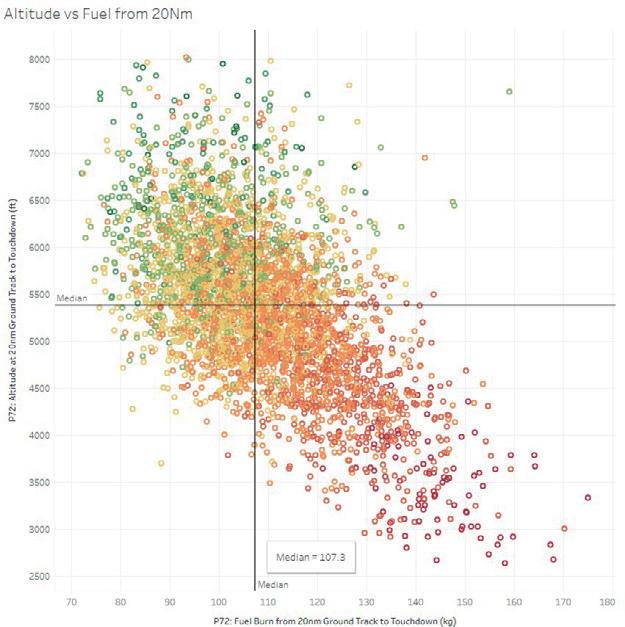
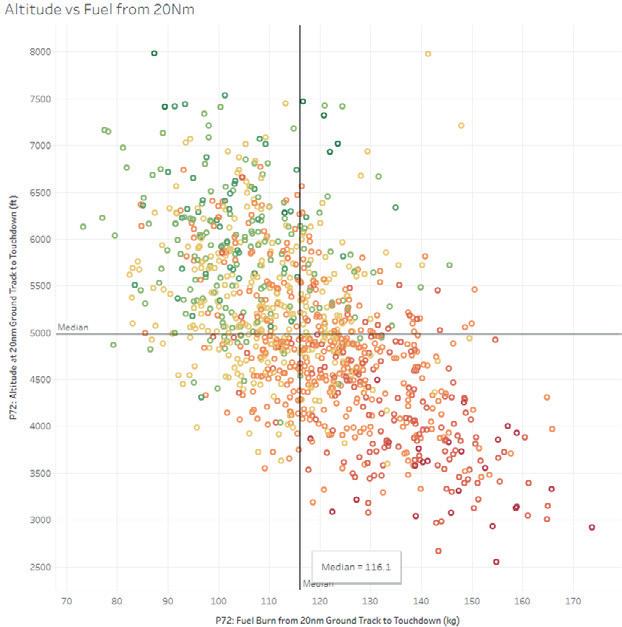
During the period from March 1 to May 8, 2019, the median fuel burn for A320neo aircraft from 20 nautical miles (Nm) to landing was 116.1 kilograms. In contrast, the same median fuel burn during the equivalent period in 2024 decreased to 107.3 kilograms. The targeted operational parameters for pilots included maintaining an altitude between 5,500 and 6,500 feet at 20Nm from landing, while traveling at approximately 240 to 250 knots. The data indicates that pilots adhered well to these guidelines, resulting in fuel consumption that could potentially drop below 100 kilograms. This improvement is attributed to the adoption of landing configurations such as flaps 3 and full flaps, which are currently standard practice. Encouraging the use of flaps 3 landings, which may further reduce the median fuel burn towards 100 kilograms, is an ongoing objective. Efforts to promote this practice include publishing articles, discussing the benefits, and showcasing successful implementations. The aviation community has responded positively, recognizing the mastery of these techniques as a valuable skill.
“A test period for the ClearPath system was conducted from December
2022 to May 2023, marking a significant phase in evaluating its effectiveness.”
COLLABORATION WITH CLEARPATH: A SIX-MONTH REVIEW
A test period for the ClearPath system was conducted from December 2022 to May 2023, marking a significant phase in evaluating its effectiveness.
in Actual Cruise Fuel Burn compared to OFP in %
Figure 2
Initially, as depicted in Figure 2, the data from December and January showed some variability in fuel consumption, likely due to transitional factors in implementing the system. However, by the Spring of 2023, there was a notable reduction in cruise fuel consumption compared to the Operational Flight Plan (OFP). This improvement was attributed to both the technical capabilities of ClearPath and its user-friendly presentation in the cockpit. The system provides a printout that serves as a visual reminder to optimize the vertical profile during flight.
EVALUATING FLIGHT PERFORMANCE AND SAVINGS POTENTIAL WITH CLEARPATH
The adoption of ClearPath was favored not only for its clarity but also for the absence of any need for additional hardware investment, making it a straightforward and comprehensible tool for pilots. Despite some fluctuations in fuel burn from May 2023 to January 2024, the overall trend indicated a positive impact, with a particular improvement observed from January 19, 2024, when the same pilots who participated in the previous year’s trial continued to use the system with even better results.
While there is a recognition that the program is still evolving and that results for long-haul flights with the A330s, which began in April 2024, have yet to show
“…the
overall trend indicated a positive impact, with a particular improvement observed from January 19, 2024, when the same pilots who participated in the previous year’s trial continued to use the system with even better results.”
similar improvements, the ongoing commitment to data-driven analysis and continuous publication of findings are essential for realizing the full benefits of the program. Figure 3 illustrates the desired behavioral changes resulting from the ClearPath implementation, highlighting the progress and areas for further development.
Delta Flight Altitude and Fuel
Delta flight altitude and fuel

Figure 3
An analysis of flight performance relative to the Operational Flight Plan (OFP) reveals significant insights. The data, illustrated in Figure 3, indicates how altitude adjustments have impacted fuel consumption. From December to March, flight altitude was initially lower than the OFP recommendations. However, as time progressed, the altitude was increased, resulting in flights being conducted at higher altitudes than suggested by the OFP. This adjustment mirrors the pattern observed during the previous year’s test phase. The impact on fuel burn during cruise phases was also notable; while January showed a higher than expected fuel burn, the overall trend remains positive, reinforcing SAS’s confidence in ClearPath as a valuable investment.
Cost savings potentialfor optimized flights
Additionally, Figure 4 presents a savings potential graph, highlighting the optimization opportunities. Within 17908 flights, 9660 flights had the potential of further optimization through ClearPath. Of these, 8,248 flights were already operating at optimal levels according to the OFP, underscoring the effectiveness and potential of further optimization through ClearPath.
COST SAVINGS POTENTIAL FOR OPTIMISED FLIGHTS
“Flights identified as candidates for optimization demonstrated an average equivalent fuel saving of 24.1 kilograms, which translates to a 1.44% reduction. Equivalent fuel saving accounts for both time and fuel savings.”
kilograms; however, if this extra time extends the flight by an additional minute, the average equivalent fuel saving may decrease. Conversely, simultaneous reductions in both time and fuel consumption contribute to a higher equivalent fuel saving. This nuanced understanding highlights the potential for optimizing flight operations to achieve more substantial fuel savings while balancing time efficiency.
Normal Optimation
OPTIMIZED FLIGHTS: A COMPARATIVE ANALYSIS NORMAL OPTIMATION
2024-01-192024-01-212024-01-232024-01-252024-01-272024-01-292024-01-312024-02-022024-02-042024-02-062024-02-082024-02-102024-02-122024-02-142024-02-162024-02-182024-02-202024-02-222024-02-242024-02-262024-02-282024-03-012024-03-032024-03-052024-03-072024-03-092024-03-112024-03-132024-03-152024-03-172024-03-192024-03-212024-03-232024-03-252024-03-272024-03-292024-03-312024-04-022024-04-042024-04-062024-04-082024-04-102024-04-122024-04-14
2024-01-192024-01-212024-01-232024-01-252024-01-272024-01-292024-01-312024-02-022024-02-042024-02-062024-02-082024-02-102024-02-122024-02-142024-02-162024-02-182024-02-202024-02-222024-02-242024-02-262024-02-282024-03-012024-03-032024-03-052024-03-072024-03-092024-03-112024-03-132024-03-152024-03-172024-03-192024-03-212024-03-232024-03-252024-03-272024-03-292024-03-312024-04-022024-04-042024-04-062024-04-082024-04-102024-04-122024-04-14
Potential
for additional savings: analyzing flight optimization
Analysis indicates a significant opportunity for further savings through flight optimization. Flights identified as candidates for optimization demonstrated an average equivalent fuel saving of 24.1 kilograms, which translates to a 1.44% reduction. Equivalent fuel saving accounts for both time and fuel savings. For instance, using more time may result in a fuel saving of approximately 20
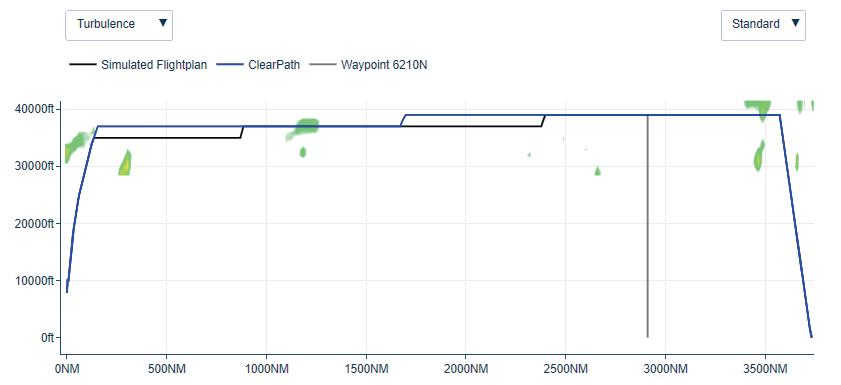
Figure 5.1
Figure 5.1 illustrates a typical example of flight optimization. The graph compares the Operational Flight Plan (OFP) with ClearPath’s optimization recommendations. In the graph, the black line represents the OFP guidelines, which suggest an initial climb to approximately 34,000 feet, followed by a further ascent to 36,000 feet at around 88 nautical miles (Nm). In contrast, the blue line depicts ClearPath’s
Figure 4
Response T FLIG P OFI E
202 -04-07 01:25 J-RK SK0944 -EKCH 216817 CI 06
T LVLS:
F 370/H ITI L (1537fJM�214 G,-40S)
F 390/6050J-83 ( 902NM� 68 G,-21S)



Figure
AVTECH TURBULENCE CLASSIFICATION AND ITS APPLICATION
AVTECH has established a system for classifying turbulence into three categories: light turbulence (20 to 31 units), moderate turbulence (32 to 44 units), and severe turbulence (45 units or higher). These thresholds are customizable by airlines to suit their specific requirements and operational preferences. Different levels of turbulence trigger varying ClearPath responses in the cockpit, enhancing the

0 T LVLS:
FL360/INITIAL ( 571'1-, 4KG, 3S)
F 380/ATFIR-73 (7271'1-,102KG,124S)
FL360/I DIG-29 (TU B LIM)
EST SAVING
FUEL 106 KG ( 1.8%)

TIME 127 S ( 1.2%)
CLEARPAT PROFILE EXCEED JCES
ATTENTION TURB MOD41
FRCX- F 360/1 JDIG-103NM TO FL380/TADAK-721JM
17MH 118r
OFP P OFILE EXCEEDAr ES ARr ING TU B SEV48
FRCX- F 380/1 JDIG-15 TO FL380/TADAK-72tJM
\I 301'1-
F 360 TO AVOID
ISSUED BY AVTEC (Er )

ClearPath Turbulence Response System: enhancing flight safety
The ClearPath Turbulence Exceedance system provides pilots with detailed responses on how to manage turbulence effectively. For example, a response might read, “Attention, Turbulence, MOD (moderate) 41,” indicating moderate turbulence with a specific intensity level. The system informs pilots of the expected turbulence location who can then make pre-emptive safety measures (seatbelts, service suspension etc.), however, it does not recommend altitude changes for this level of turbulence.
In contrast, the Operational Flight Plan (OFP) suggests, in the above example, an initial lower altitude, with a step climb into potentially stronger turbulence,
During the test period last year, ClearPath’s optimization sometimes exceeded the Airbus A320’s environmental limits. However, with prompt calibration and adjustments from AVTECH, a revised model was quickly developed, as illustrated in Figure 8. This adjustment ensures that ClearPath’s optimization remains within
“During
the test period last year, ClearPath’s optimization sometimes exceeded the Airbus A320’s environmental limits. However, with prompt calibration and adjustments from AVTECH, a revised model was quickly developed…”
Figure 7.2
CASE STUDY: SCANDINAVIAN AIRLINES
the Airbus A320’s operational envelope, addressing temperature-related challenges effectively.
ClearPath temperature exceedance
CLEARPATH TEMPERATURE EXCEEDANCE

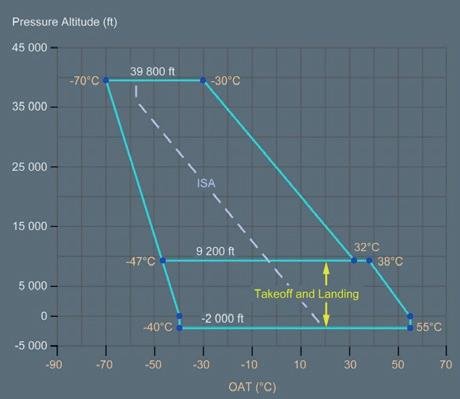

“For instance, ClearPath suggests avoiding climbs towards the end of the cruise if it would take the aircraft into excessively cold regions, offering alternative routes to prevent entering temperatures beyond the aircraft’s operational limits”
Response
T FLIG P OFI E
202 -01-28 17:30 SE-R
OFP Exceedances
Warning Temperature 203K
From FL390 TIMOB-130NM
To: FL390 TIMOB-81NM
Durat on 7.29MIN 49NM
Suggest Fl370

Figure 9.1

SK00 6 ESSA-ES 64682 CI5
IrIT OPT LT: FL370
ES T S VING
FUEL 2 KG ( 0.3�)
TIME 3 S ( 0.2%)
FP P OFI E EXCEEDAr ES
IAR H TEMP -70C
FRCX- F 3 90 /T \OB-130NM
0 FL390/TH'llB-8 M
7 49
F 370 TO VOID
ISSUED BY VTEC (E )
Figure 9.2

dynamic cost index operations.
HOW DOES CLEARPATH WORK?
Figure 10 shows the essence of ClearPath’s operation.

The system employs a ground-based architecture capable of performing millions of computations by utilizing the aircraft’s performance model and real-time parameters. This data is combined with a high-resolution 10k and 1h weather forecast (the industry standard is 140k and 3h) to optimize the flight path. One of ClearPath’s unique features is its ability to automate the delivery of optimization recommendations directly to the cockpit via ACARS, eliminating the need for pilot engagement. However, manual requests can be done at any time to retrieve a ClearPath optimization on ground and in-flight. The typical use case for the in-flight request is after changes of route, gross weight, or CI. The system is effective for both short and long flights, with results deliverable to an EFB, printer, or MCDU screen. Airlines using this solution can achieve fuel and CO2 reductions of approximately 2.5% during the cruise phase.
In the climb phase, ClearPath automatically downloads data (CI, weight, and active route) from the on-board flight computer. This data is used to calculate the 4-dimensional trajectory of the flight, and high-resolution weather forecasts are retrieved for the exact flight path of this specific flight. ClearPath optimizes and finds the optimal altitudes and step points, then uplinks this information back to the pilots in the cockpit via ACARS.
CLEARPATH: CONNECTED IN-FLIGHT OPTIMIZATION

Figure 11
FL350/3440N-148 (978NM,622KG,-56S)
FL330/4920N-434 (520NM,332KG,-47S)
FL350/DINIM-142 (516NM,103KG,-110S)
ClearPath is user-friendly, and easy to understand. In the case shown in Figure 11 of
Figure 10
a Boeing 787 flight with a low cost-index (12), following the ClearPath recommended optimal altitudes and step points (depicted in blue) allowed the pilots to save over a ton of fuel (3.8 percent of cruise fuel) for a minimal time penalty of just two and a half minutes on a almost nine-hour flight. The figure shows how the information can be provided to the pilots as a printout, on the MCDU screen or in the EFB.
ClearPath offers additional features such as speed optimization, contrail avoidance, and the avoidance of inflight hazards. These hazard features include turbulence avoidance and temperature avoidance. Figure 12 presents a real example of a flight using the hazard avoidance service.
NEW CLEARPATH FEATURE IN ACTION — TURBULENCE AVOIDANCE FOR 787 FLIGHT


“ClearPath offers additional features such as speed optimization, contrail avoidance, and the avoidance of inflight hazards. These hazard features include turbulence avoidance and temperature avoidance.”
The OFP path is depicted as the black line in the figure, with a planned step that would pass through severe turbulence. The ClearPath in-flight message shows a warning, alerting the pilots to the severe turbulence along the path. Additionally, the service provides the most cost-optimal way to avoid that turbulence, which, in this case, involves a step down to flight level 350, as shown by the blue line.
SVEIN ERIK JACKWITZ

Svein Erik Jackwitz joined Scandinavian Airlines in 1990 and has extensive experience operating narrow-body and wide-body aircraft. He holds a degree in Mechanical Engineering and, since 2019, he has been involved in SAS Flight Operations, concentrating on enhancing fuel efficiency by improving data quality and availability, fostering better collaboration between departments, and developing strategies that focus on both pilot skills and company knowledge. These are all aimed at reducing the environmental impact of airline operations.
DAVID RYTTER

Prior to becoming CEO of AVTECH, David Rytter served as Chief Technical Officer leading the development of AVTECH’s services. Before that he was Head of Aventus Nowcast, AVTECH’s wind uplink service, and project manager for various projects. Not only does he have a great knowledge and experience of AVTECH’s products and services he also flies with the Swedish Voluntary Flying Corps (FKK). David holds a MSc in Aerospace Engineering from the Royal Institute of Technology (KTH).
SAS
SAS is Scandinavia’s leading airline, serving more than 125 destinations in Europe and Worldwide. The Airline aims to be a driving force in sustainable aviation and in the transition toward net zero emissions, using more sustainable aviation fuel, and investing in new fuel-efficient aircraft and technology innovation. The fleet includes aircraft from the Airbus A320 family plus A330 and A350 types. There are also Embraer E195lr, Bombardier CRJ900 and ATR-72 aircraft in the fleet.
AVTECH

AVTECH develops products and services for digital air traffic management systems. Customers include various stakeholders in the global aviation industry, such as airlines, airports, aviation authorities, technology companies, and aircraft manufacturers. With the company’s products and services, each individual flight or entire flight operation can be optimized in terms of economics, noise and emissions, efficiency, punctuality, and safety.
INTERACTIVE GIVE US YOUR OPINION CLICK HERE TO POST YOUR COMMENT
INTERACTIVE SUBSCRIBE HERE CLICK HERE TO READ ALL FUTURE EDITIONS
Figure 12
VENDOR FLIGHT LOG: THE WEATHER COMPANY
A constant focus on accuracy, decision support and adapting to a changing world has enabled The Weather Company’s continued success, says Ravi Vanmali

As Head of Aviation for The Weather Company, Ravi Vanmali leads the team that helps airlines enhance operations with inflight weather data, tracking, and decision support. With 15 years’ experience in the aviation industry, he has held leadership roles overseeing airline operations and driving measurable improvements across teams in meteorology, customer service, airport operations, crew management, maintenance, analytics, and advanced digital technologies.
Aircraft IT: Your name, your job title and the name of the business?
I’m Ravi Vanmali, Head of Aviation here at The Weather Company.
Aircraft IT: How did The Weather Company get started?
RV: Weather may be in our name but that’s not the whole story. What started as an idea in a basement studio, has grown into one of the world’s most trusted brands and the world’s most accurate forecaster1 — distinctions we don’t take for granted and work tirelessly to uphold. And as our world continues to
evolve, so do we. In fact, we’re just getting started. In today’s rapidly changing world, there is no shortage of challenges to solve. Weather is becoming more erratic, consumer behavior and expectations are shifting, and businesses are trying to survive amidst unprecedented social and economic unrest. It’s a good thing we have a history of running towards problems.
Aircraft IT: What is the guiding business principle that drives The Weather Company?
RV: For over 40 years, The Weather Company has
leveraged our leadership in weather to help billions of people stay safe and informed. Since our inception, we’ve combined human expertise in meteorology with trusted technology to drive progress — all in pursuit of our mission to instill confidence, drive decisions, and propel the world forward. This mission has remained constant, even as our business and the world have evolved. We instill confidence and earn customer trust by putting science and technology to work; we power better decisions for individuals and businesses; and ultimately, we propel the world by fueling collective progress for people, places, and the planet.
“…we’ve combined human expertise in meteorology with trusted technology to drive progress — all in pursuit of our mission to instill confidence, drive decisions, and propel the world forward…”
Aircraft IT: What has The Weather Company’s greatest business achievement been to date, and why?
RV: The Weather Company’s greatest achievement is being recognized as the World’s Most Accurate Forecaster1 — a distinction no other provider can claim, though many try. On individual, isolated metrics, such as wind speed in Southeast Asia, other providers may have a slight edge. But when it comes to overall accuracy, measured across a broad range of metrics globally, no one can match our superiority. Moreover, they can’t prove their claims or share specifics about what drives their supposed advantage. We can, and we do. That’s why customers trust us.
Aircraft IT: What have been your disappointments and what have you learned from them?
RV: We weren’t moving fast enough in the rapidly
“We combine our superior weather forecasting expertise and our Aviation knowledge to deliver best in class value to our customers to control costs, enhance flight safety, increase operational efficiency and improve the passenger experience”
Aircraft IT: In a sentence, how would you summarize what The Weather Company does for aircraft operations customers?
RV: We combine our superior weather forecasting expertise and our Aviation knowledge to deliver best in class value to our customers to control costs, enhance flight safety, increase operational efficiency and improve the passenger experience.
optimization capabilities in real-time decision-making SaaS products to deliver measurable value.
Aircraft IT: What do you want your customers to say about The Weather Company?
RV: The Weather Company is a critical partner we need, trust, and can always rely on.

BOUNDLESS BACK ISSUES

PLAY Airlines gets efficiency and future-proofed
Halldor Gudfinnsson, Director Flight Operations and Tómas Ingi Gunnarsson, Supervisor Dispatch, both at PLAY Airlines describe an Operations IT suite to help the airline thrive today and face the future with confidence

HALLDOR

In this case study, we aim to share with readers our experience of implementing NAVBLUE products into our airline. But let’s first set the scene with an introduction to PLAY.
PLAY
The airline is a low-cost carrier (LCC) based in Iceland and had been operating for three years at the time of writing. Having started the business five years ago, it took about two years to get the AOC (Air Operator certificate). Today, we have a fleet of ten aircraft — we like to describe ourselves as relatively small but beautiful — and all of those aircraft are from the Airbus A320 family. There are four A321neos and six A320neos. With an average age of 3.51 years, again at the time of writing, it is a young and efficient fleet.
Our main market is using Iceland’s mid-Atlantic location to connect North America and Europe to each other and for visitors, from either continent, to Iceland itself. At the end of 2023, PLAY had 477 employees from 30 different nationalities: their average age was under 33 years. It’s a diverse and young workforce.
“There are four A321neos and six A320neos. With an average age of 3.51 years,
again at the time of writing, it is a young and efficient fleet”

In 2023, PLAY carried 1.5 million passengers between 38 destinations with an 83.4 percent load factor plus an on-time performance rate of 83.2 percent and trending up, even though we have had to deal with issues such as eight volcanic eruptions in the past three years. Of those passengers, 41 percent were travelling between North America and Europe via Iceland, 27 percent were travelling from Iceland to North America or Europe and 32 percent were travelling to Iceland
As we’ve already seen, we’re right in the middle of the North Atlantic where the weather is always good… or not! We serve Eastern North America and a lot of destinations in Europe as well as North Africa, Madeira and the Canary Islands. That’s a brief overview of PLAY but the purpose for this case study is to share why we chose NAVBLUE for all of our Flight Ops systems and to highlight some of the benefits we have gained from it.
WHY NAVBLUE?
When PLAY started, some of us had previous experience with NAVBLUE solutions from working at another airline that is no longer with us. That gave us the opportunity to source people with the know-how and experience to operate NAVBLUE systems. Because of Covid, they were all available in Iceland. But the main reason for selecting NAVBLUE was the availability of a one-stop-shop; we can get all of our systems, from ground to cockpit, from NAVBLUE which is also an Airbus company. Altogether, it was a ‘no-brainer’. And, having made the decision for NAVBLUE, most important for us was the honest, agile, rapid support that we got from them during the startup phase as well as the ongoing support that we continue to get. They understand us and they understand our needs; it’s a good collaboration. Also, the systems are highly configurable to work with EASA rules and with the Union contract rules, all of which is easily done through the NAVBLUE operating system and N-Ops & Crew. That configurability extends to being able to work with any future regulatory rule changes, which is very important for us.
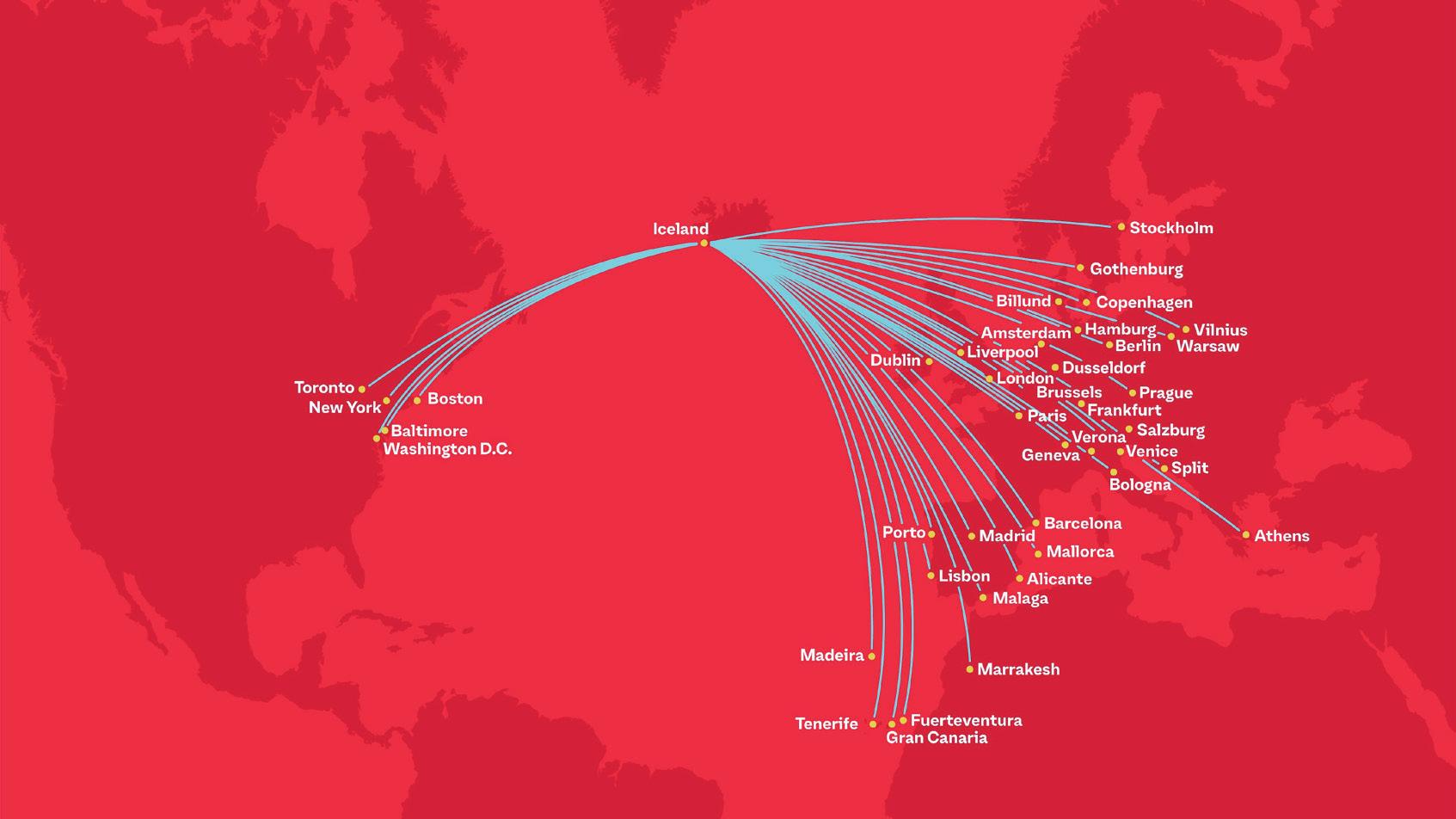
Also, with the AIRAC database, a minimal level of internal system support is required to maintain it which means less day-to-day work; everything goes through the system seamlessly. There is also automation available across the NAVBLUE portfolio which is very important as it reduces our workload and manpower demand as well as reducing the error rate. The outlook for the future is exciting because NAVBLUE is coming up with a lot of new solutions and, very importantly, there is a roadmap which they stick to so that we can anticipate and plan for when we will get those solutions.
Of course, as with any business, cost is critical in PLAY. My department in the airline is responsible for about 85 percent of the entire airline’s costs.
“…the systems are highly configurable to work with EASA rules and with the Union contract rules, all of which is easily done through the NAVBLUE operating system and N-Ops & Crew.”
NAVBLUE INTEGRATED SUITE
As stated above, NAVBLUE is an Airbus company and we fly Airbus aircraft so there is some continuity there plus, it is an integrated Suite (figure 2).
NAVBLUE Integrated Suite


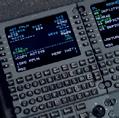
AIRBUS OEM Toolset


















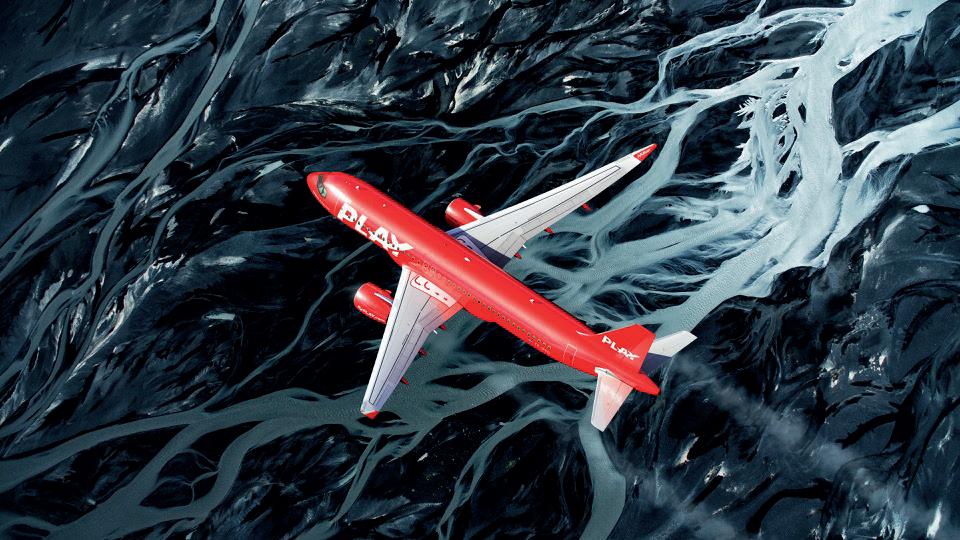
Tómas is better qualified to explain the details about the specific components in the suite such as N-Ops & Crew, N-Flight Planning and Tracking, etc. But, from a pilot’s point of view, the figure shows the OCC Suite that we use in PLAY which incorporates the Crew Scheduling system and N-Ops & Crew. We have to do everything in the Flight Planning System but the systems talk to each other, which is important to us. We use N-Tracking to track our flights with FlightWatch and we are in the early stages of implementing Mission+ FLIGHT which will enable us to go paperless. We’re pretty excited about that with the Mission+ FLIGHT and were, at the time of writing, in the test phase with it; the plan is to implement it in the second half of 2024.
“…we are in the early stages of implementing Mission+ FLIGHT which will enable us to go paperless. We’re pretty excited about that with the Mission+ FLIGHT and were, at the time of writing, in the test phase…”
with its performance calculations and the ability to do manual computations when we have to, it occasionally happens and the system makes it very easy. It’s good for us to be able to access performance information and the eQRH, which I think is a fantastic tool because although I’m a bit old school, I like paper, I’ve now grown fond of the eQRH because it is easy to use, all of the information is accessible and we use iPads so everything is very quick. Now, the only paper that’s left on the flight deck is the Operation Flight Plan and that will go when Mission+ FLIGHT is fully implemented. We use the Airport Obstacle database to plan flights and do routes, etc. and the FMS (Flight Management System) NavData is NAVBLUE also. The main thing here is that its all seamlessly integrated together, reducing the likelihood of errors which, as we all know, are not at all welcome in aviation.
We are also implementing FOMAX (Flight Operations and MAintenance eXchanger) in all of the fleet and, at the time of writing, were just using Option 1 which is the ability to download our FDR (Flight Deck Resources) data for each flight without doing it manually, just streaming it through 4G or even 5G. As I said, Tómas will explain the way the solution works.
We don’t have Wi-Fi on board our aircraft at the moment so there is no Internet connection, we use Tallis FMCGs with the NAVBLUE database and the FOMAX connection, just the flight part recording facility, but, in the future, we plan to integrate FOMAX to, effectively have a mini-Wi-Fi on board which will then talk to the aircraft systems and feed into our Apps on the iPads. Also, we are working with CrewApp: our phones are with us at least 18 hours a day so pilots can easily see their upcoming flights and who will be flying with them. That App takes all of its information from N-Ops & Crew; it also gives information to the same solution.
Figure 2
TÓMAS


NAVBLUE Integrated OCC Suite












So many other systems in the company are connected to N-Ops & Crew to feed information into it and take information out of it. Since the implementation of NAVBLUE in PLAY, we have been adding to the system and figuring out how to connect together the different systems that we have. NAVBLUE has been very supportive in helping to create those connections and has been rapid in getting them working. The integration between N-Flight Planning and the N-Ops & Crew is
“Since the implementation of NAVBLUE in PLAY, we have been adding to the system and figuring out how to connect together the different systems that we have. NAVBLUE has been very supportive in helping to create those
connections… ”
very reliable, probably because they are related components in the same system; we’ve never had a wrong registration on a flight plan, everything is really reliable. Even with last-minute changes, when you might be hurrying, the system can still be trusted.
Similarly, from N-Flight Planning to N-Tracking the connection and integration is very reliable. Prior to the implementation of Mission+ FLIGHT we were, at the time of writing, printing out all of the flight plans. N-Flight Planning is pushing us to introduce more automation in flight planning. That is very exciting for us and we want to continue to implement automation in our dispatch, and that comes with Mission+ FLIGHT. To summarize what we have to say about those systems: we like them, they are user-friendly and they are visually clear and attractive.
Figure 3
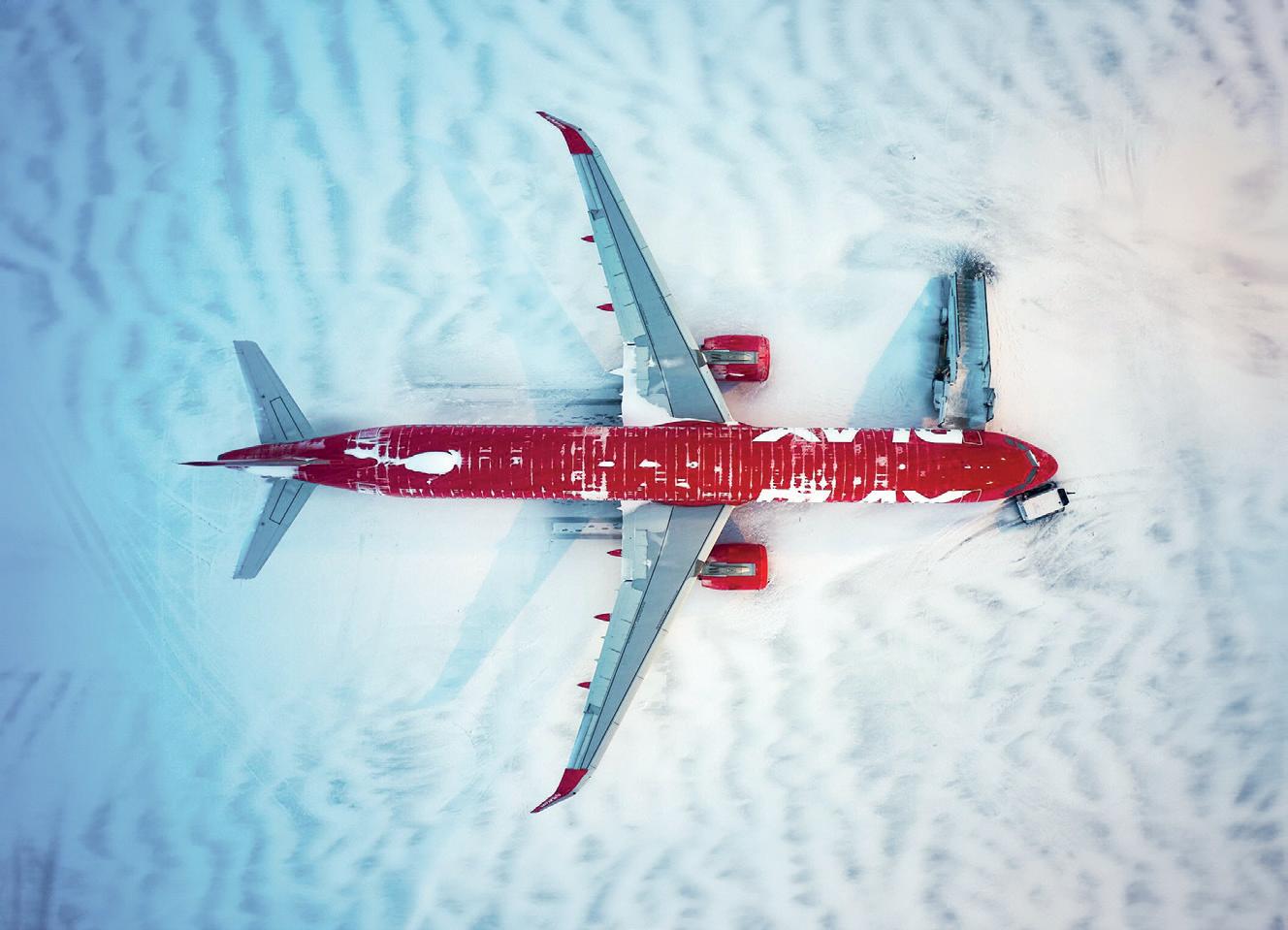
HALLDOR
I recently asked a pilot who had tried the system in the simulator ‘how does the system work?’ and he confirmed that the system works very well. The same goes for the NAVBLUE Suite, it works very well. So, what are our goals with NAVBLUE?
First goal is to implement Mission+ FLIGHT. We’re excited about that, having tried it out during flights, and it looks good and works well. There are a few hiccoughs to iron out but nothing major. We also want to expand the use of automation; not only the flight planning with automated flight plans. There are so many systems that PLAY is connected to, for example, N-Ops & Crew, the crew scheduling system. For instance, Maintenance uses Gamit and that does more than just retrieve information from the scheduling system, it actually writes into it as well. With regard to MELs (Minimum Equipment Lists) or, say, work orders for maintenance, everything is on the platform which everybody uses all of the time: maintenance, crew scheduling, rostering, it doesn’t matter what it is. So, yes, we plan to increase automation through these connections with our other systems such as payroll and other data systems; there are endless numbers of systems that can connect into NAVBLUE. Another goal is to achieve optimum fuel usage because, as we said earlier, cost is everything and, like all airlines, PLAY burns a lot of fuel. But it is important that we control the consumption and make our fuel policy as focused and economical as possible; in doing that, we will also reduce the CO2 emissions about which the world is so concerned — we’re proud to be
playing our part in that with the help of NAVBLUE.
All the systems that we have mentioned are contributory to running a lean company and we hope that readers who are contemplating a similar implementation to the one that we have undertaken, will find our experience useful.
HALLDOR GUDFINNSSON

Halldor Gudfinnsson is an aviation professional with a career spanning over two decades in various roles where he has demonstrated exceptional skills in flight operations, crew training, and safety standards. At PLAY Halldor oversees flight operations, ensuring regulatory compliance and maintaining high safety standards. Prior to this, Halldor was the Director of Crew Training at PLAY. He brings a wealth of consultancy experience, having worked for IATA and various training organizations, and has been Captain for Boeing 747 and 737 aircraft.
TÓMAS INGI GUNNARSSON

Tómas Ingi Gunnarsson is an aviation professional and currently Supervisor Dispatch at PLAY airlines. He joined PLAY airlines from day one and, over the past three years, has been Supervisor Dispatch in the Operations Control Center, responsible for overseeing the airline’s flight plans and load sheets, ensuring smooth and efficient operations. Tómas is proud of the successful implementation of ETOPS operations at PLAY airlines, which has enhanced the airline’s operational capabilities. He also holds a Commercial Pilot License.
PLAY AIRLINES

PLAY is an Icelandic low-cost airline operating flights between North America and Europe via Iceland to take advantage of its mid-North Atlantic position, offering low-cost flights and a safe and pleasant journey in a fleet of ten new and comfortable Airbus aircraft. Safety is the name of the game at PLAY. Other core values are on-time performance, simplicity, happiness and low prices.
NAVBLUE
NAVBLUE, an Airbus company, delivers a reliable, optimum and customized user experience to more than 600 customers worldwide, in a range of areas, including digital cockpit operations, Operations Control Centre (OCC) systems, Flight Ops Engineering and Performance Based Navigation (PBN). The business employs 500 employees spread across the world, with offices in Canada, France, Poland, Singapore, Sweden, Thailand, UK and US, and representatives in several other countries across the globe.
INTERACTIVE GIVE US YOUR OPINION
CLICK HERE TO POST YOUR COMMENT
INTERACTIVE SUBSCRIBE HERE
CLICK HERE TO READ ALL FUTURE EDITIONS
Paul Chevalier reveals the focus on integration and value that ensures SkyNet Aviation’s cutting edge technology can be deployed by airlines of any size

Paul is a licensed Flight Dispatcher and has worked in Canada and Australia for major airlines. He holds a Diploma in Management Studies and an IATA Diploma of Air Navigation Services Management. He has worked extensively on OCC software system implementations across multiple airlines and AOCs. SkyNet Aviation is developing the next-generation web platform for small to medium operators. Paul’s background in aviation project management and his passion for the industry will ensure the success of all SkyNet Aviation clients.
Aircraft IT: Your name, your job title and the name of the business?
Paul Chevalier, General Manager, SkyNet Aviation.
“Software must be integrated across your entire aviation business in order to truly gain efficiencies. Our REACH Aero® platform does just that”
Aircraft IT: How did SkyNet Aviation get started?
PC: The business was started by Jon Davis in 2001 to provide cost-effective aviation tracking and software solutions.
Aircraft IT: What is the guiding business principle that drives SkyNet Aviation?
PC: Integration. Software must be integrated across your entire aviation business in order to truly gain efficiencies. Our REACH Aero® platform does just that.
Aircraft IT: What has SkyNet Aviation’s greatest business achievement been to date, and why?
PC: The creation of a world-first commercial ADS-B network in Australia and merging the data feeds into our REACH Aero® platform.
Aircraft IT: What have been your disappointments and what have you learned from them?
PC: We have seen current or potential clients select software providers that provide only one component of their required tech stack that is either unable to be integrated into their operations platform, or would be prohibitively expensive to do so. It leaves us scratching our heads.
Aircraft IT: In a sentence, how would you summarize what SkyNet Aviation does for aircraft operations customers?
PC: We provide cutting-edge tech, on the web, for small to medium sized airlines at a price point that makes sense for their operations.
Aircraft IT: Paul Chevalier, thank you for your time.

The highest form of intelligence?
Paul Saunders, Senior Director of Product Management at Comply365 looks back on how forms have moved from paper to electronic formats, and considers what will be the endpoint of that development
Forms have come a long way in the last couple of years. In the early days of electronic flight bags and electronic logbooks I expended a lot of energy getting quite het up about all of the investment going into digitizing operational content with charts, and other applications becoming mobile-friendly, but paper forms were still the norm. Now electronic forms with offline synching capability are ubiquitous, but it was a pretty difficult journey getting from paper to where we are today.
One of the key barriers to adoption that I experienced in flight ops environments was that electronic forms tended to benefit teams other than flight ops. Many of the forms that crew were being asked to complete belonged to one of engineering, finance, or HR teams. Obstinate crew would complain that a paper form could be completed quicker than an electronic one and involved significantly less faffing.
Incidentally I recently discovered that ‘faffing’ is not a
universally understood word. On more than one occasion in the past couple of months I’ve found myself informing international colleagues that ‘faffing’ is the lost art of doing things in a disorganised way and not achieving very much.
faff /fæf/
PHRASAL VERB UK INFORMAL
to spend your time doing a lot of things that are not important instead of the thing that you should be doing:
“I wish you’d stop faffing about and do something useful!”
business logic leveraging user inputted code and expressions. As an industry, we’re doing a much better job of handling the acquired data, and using APIs and data pipelines to feed data warehouses, and distribute information downstream.
“Now
electronic forms with offline synching capability are ubiquitous, but it was a pretty difficult journey getting from paper to where we are today.”
Anyway, the conclusion of that experience was that it was, and still is really tricky to put software in the hands of users where they are not the beneficiaries of process improvements. For some considerable time, we were locked in the trap of filling in forms by hand, having them faxed back to base, and some poor soul interpreting what had been scrawled onto the original form and keying it into a slightly different digital form somewhere else. Early B2B apps like SurveyMonkey and Expensify showed the way forward by applying consumer grade user experiences to pretty mundane data gathering use cases and setting the expectations for our sector.
Today it’s pretty commonplace to see software offering offline configurable forms that work dynamically, responding to data entered, and running sophisticated
At the recent Airline and Aerospace MRO and Flight Operations IT Conference in Amsterdam, I talked about the ‘checklistification’ of content whereby it would not be long before we are able to easily convert procedures, standards and regulations into dynamic checklists, and render them as forms for asynchronous usage. Generative AI is perfect for this kind of use case converting content and data from one format into another. That clerk who previously faffed about with the manual entry of faxed forms into engineering and finance systems won’t even have a job creating electronic forms in the near future.
Well, I guess that’s progress for you; or at least it is in the world according to IT & Me.

PAUL SAUNDERS
Paul is a heavy-weight product visionary and trusted aviation software expert. He’s spent 25 years in aerospace IT, working with airlines, MROs, OEMs and software companies all over the world. Currently, he’s working as Senior Director of Product Management at Comply365 where he leads a team of Product Managers and UX Designers on a software portfolio which includes Operational Content Management, Safety Management and Business Intelligence Solutions.

Join Aircraft IT & Aircraft Commerce at the industry-leading Annual Flight Operations Conference in London
Craig Howard explains how Evoke Systems’ commitment to innovation and design quality ensures that clients always enjoy the best solutions

Having started programming and gaming in the golden era of the 80s with the ZX81, Craig was destined for a career in computing. After gaining his BSc in Computer Science, he remained at the University of East Anglia for a further ten years achieving a PhD in Data Mining (AI) whilst teaching coding, internet tech and databases over the turn of the millennium. Having moved onto commercial data mining research projects, this ultimately led to him co-founding Evoke in 2003.
Aircraft IT: Your name, your job title and the name of the business?
Craig Howard, CEO of Evoke Systems Limited.
Aircraft IT: How did Evoke get started?
Craig Howard: Over 20 years ago now, co-founder Mark Linney and I joined forces with a vision to find innovative solutions to solve the problem of distributed mobile workforces and to introduce emerging technologies. As the digital world has continuously evolved, so have our products. What we designed two decades ago has had to adapt and grow to keep pace with these changes. Today, our focus remains on enhancing efficiency
through digital solutions, and we are committed to evolving alongside the technology to meet the ever-changing needs of our clients.
Aircraft IT: What is the guiding business principle that drives Evoke?
CH: Our guiding principle is a combination of innovation, efficiency and compliance. We operate in a heavily regulated industry, and everything we do — from the quality of our designs and production to the robustness of the systems — is about ensuring stability for our clients. We prioritise auditability and secure access to information, while also focusing on
“We operate in a heavily regulated industry, and everything we do — from the quality of our designs and production to the robustness of the systems — is about ensuring stability for our clients.”
delivering the benefits of modern data management. Our approach is rooted in a ‘data-first’ principle — all our solutions are designed to integrate seamlessly with multiple systems to drive all of the business intelligence needs of today.
Aircraft IT: What has Evoke’s greatest business achievement been to date, and why?
CH: I think staying relevant in an industry that’s very turbulent. Being able to design products that can evolve over time, but also have the stability to keep that balance. That’s credit to our dedicated team and even after so many years I’m still excited and impressed to see what the team creates and delivers. We’ve continually adapted, brought on new talent, and built strong relationships with our clients. Our client feedback has been invaluable in guiding our development and ensuring we meet their needs. Celebrating 20 years in the industry is a significant accomplishment, and it reflects our ongoing commitment to innovation and excellence.
“… we genuinely care about what we do and that our clients can see it in how we operate. Everyone here is passionate about their work, our products, the industry, and the people we serve.”
Aircraft IT: What have been your disappointments and what have you learned from them?
CH: The pandemic hit the industry extremely hard, and our clients faced massive challenges. They looked to us for stability, relying on our systems to help them navigate through that difficult time and emerge on the other side ready to move forward. The pandemic transformed the tech world — where and how companies operate — and it slowed us down by a couple of years. Despite that setback, we’re still strong, still developing new products and building relationships with clients. It’s also a huge achievement to have made it through when so many didn’t. We’re proud to continue supporting our industry and moving forward.
perceived ‘black box’ mentality — where decisions made need to be fully understood and rationalized. Aviation relies on human expertise and competencies; AI should be seen as a decision support tool rather than a replacement. It’s about providing quick, summarized information to aid decisions, not
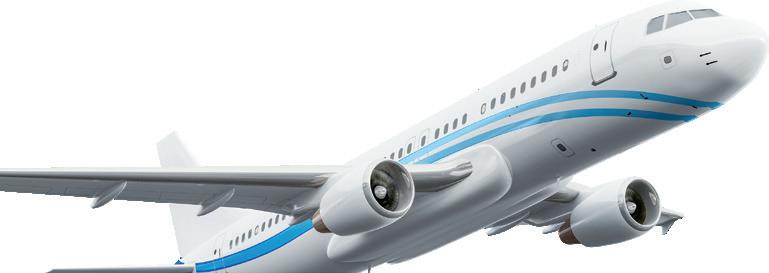

Aircraft IT: In a sentence, how would you summarize what Evoke does for aircraft operations clients?
CH: As a global technology provider, Evoke supports the aviation sector by helping our clients drive continuous improvements through our EFOS range including training, leave and document management.
Aircraft IT: What do you feel will be the next big thing in operations Aviation IT?
CH: Discussions around AI’s integration in operations is increasing. While AI is making waves in the consumer and business world right now, actual adoption in the aviation industry has been much slower and rightly so. The industry must overcome the
“We’ve continually adapted, brought on new talent, and built strong relationships with our clients. Our client feedback has been invaluable in guiding our development and ensuring we meet their needs.”
Keep yourself on the leading edge with free upcoming live webinar sessions
Attend regular Operations Demo Webinar sessions, hosted by the industry’s leading Vendors. Or take advantage of our large On-Demand Webinar library.
FOR THE NEXT SCHEDULED WEBINAR, CLICK HERE
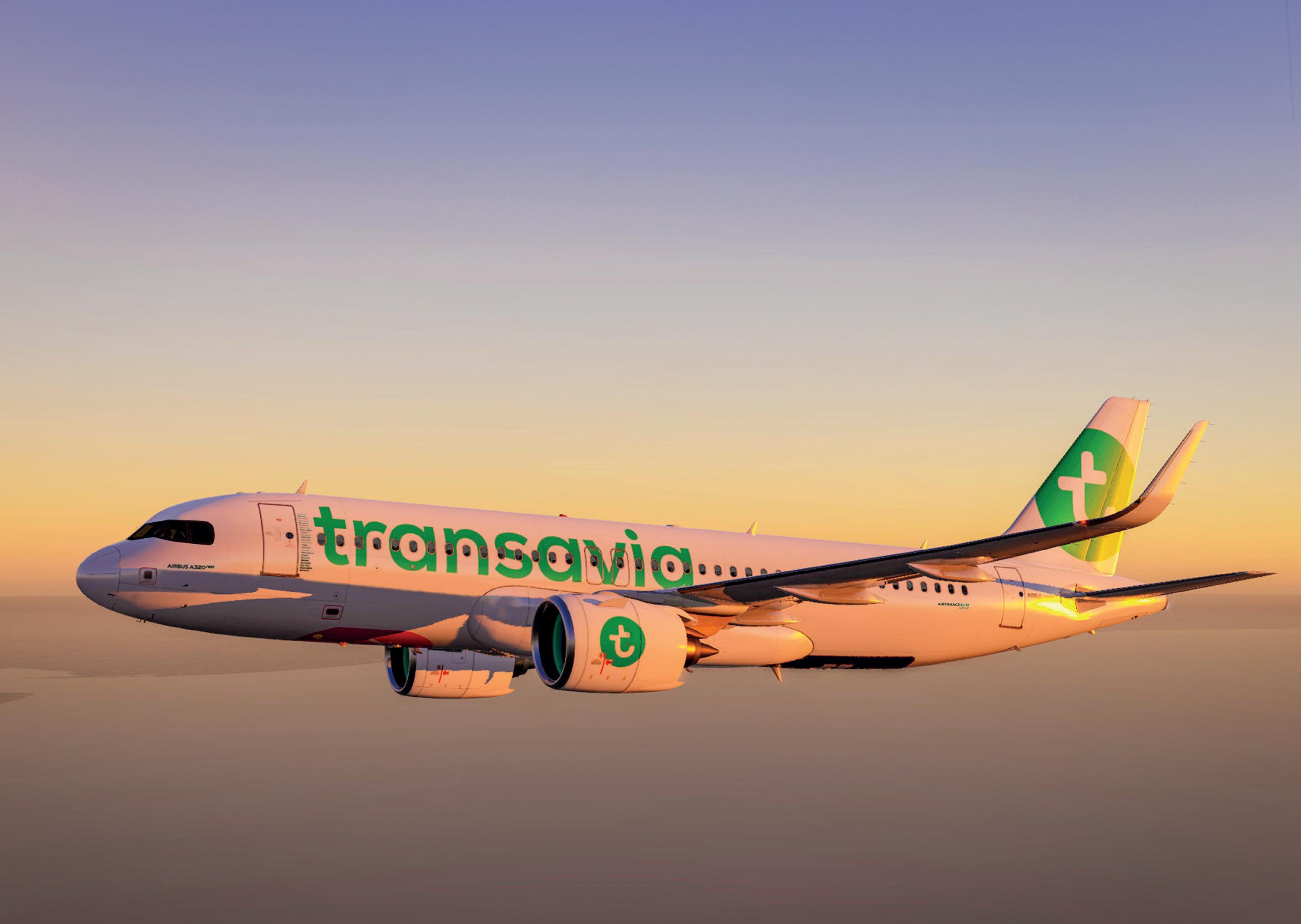
The path to new in-flight fuel savings at Transavia France
Capt. de Norman explains how and why combining historical and real-time AID data triggers new in-flight optimization levers through the EFBs
There is no doubt that reduced fuel consumption and lower CO2 emissions are high on every airline’s agenda for change. New digital software solutions will make that a great deal easier and more achievable but just as important is the human interface and engagement which, in this case, means the pilots. It is a given that fuel efficiency solutions should use technology to support pilots in decision making for fuel management but without distracting them from their core tasks of flying their aircraft safely. In this article, I want to share with readers our experience, at Transavia France, of combining historical and real-time AID data for new inflight savings through the EFB. We are performing this project as a collaborative effort with OpenAirlines focusing on Engine Out Taxi In at the moment. First, though, some insights on Transavia France and about our commitment to sustainability.
TRANSAVIA AND ITS COMMITMENT TO SUSTAINABILITY
Transavia, the low-cost airline of the Air France — KLM group, operates more than 350 routes from France (Orly, Nantes, Lyon, Montpellier, Bordeaux, Marseille…), the Netherlands (Amsterdam, Rotterdam, Eindhoven) and Belgium (Brussels) to destinations in France, Europe, and the Mediterranean basin. At the time of writing in 2024, Transavia France had a fleet of 81 aircraft with 68 Boeing 737-800 and 13 Airbus A320neo. The airline is committed to its current fleet renewal program which will eventually see us switch to an all Airbus A320neo fleet. In 2023, Transavia France carried 13 million passengers to more than 120 destinations on over 200 routes. The guiding motto of Transavia is that ‘we make low cost feel good!’ There are more than 900 pilots and we ensure an open-door policy for employees to be able to raise concerns (safety-wise but not only that) which we try to answer honestly so that everybody feels part of the business and pleased to be so.
The sustainability roadmap for Transavia is part of the overall Air France-KLM Group commitment to reduce CO2 emissions per passenger kilometer by 30 percent, from the 2019 baseline, by 2030. There are a number of initiatives to achieve this.
We are removing as much plastic as possible from onboard our aircraft. That is a big program that we started in 2019. Another step is to incorporate Sustainable Aviation Fuel (SAF) in the production of which the Air France-KLM Group has invested. As a concrete example, the first delivery flights of the “… fleet renewal. Our A320neos enable us to produce a 15 percent saving in CO2 emissions and a 50 percent reduction of the airline’s noise footprint.”
The best way to engage your pilots in fuel efficiency
Try the new SkyBreathe® MyFuelCoach experience now
Co-designed with 25 pilots Opened to 25K pilots worldwide


By
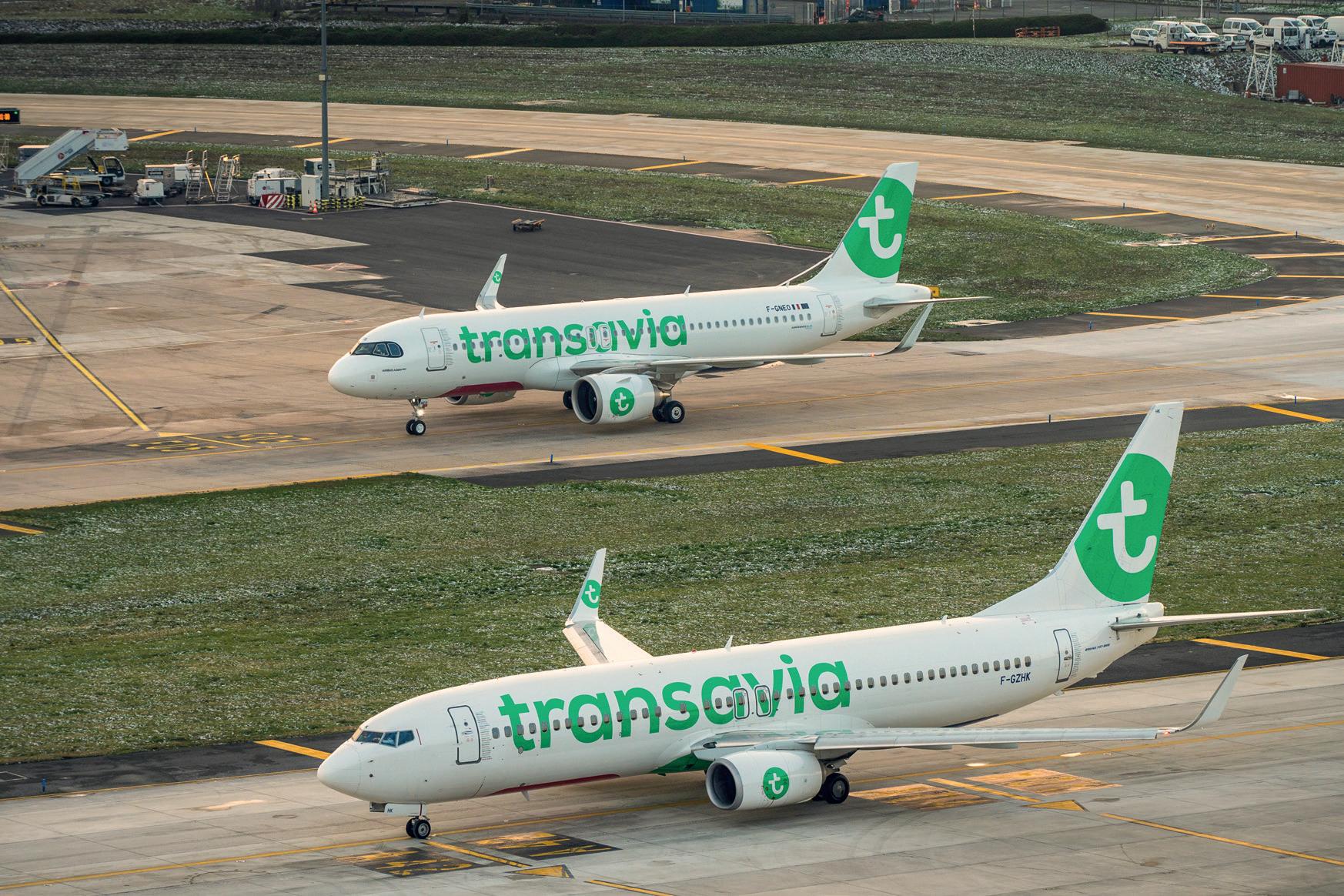
A320neo are being made with up to 30 percent SAF. However, our first lever for achieving our environmental objectives is fleet renewal. Our A320neos enable us to produce a 15 percent saving in CO2 emissions and a 50 percent reduction of the airline’s noise footprint. That’s a big challenge for us as we’re based in an area where concern about noise pollution is very strong. Education is important for pilots, cabin crews and ground ops personnel. When a pilot joins the airline, their induction includes a focus on fuel efficiency and CO2 efficiency because it is part of the pilots’ job today. It’s also part of our line training and a big focus point for the training department. As part of recurrent training for pilots, we have a monthly communication; there is also a company bulletin with facts and figures, it is a constant communication in the flight deck.
We encourage eco-piloting techniques such as, for instance, continuous descent approach, low-drag approach, reverse use and single engine taxi operations. We are proud today to already have good results with these practices but recurrent training and communication are the main keys to sustain this; both are really important when working with the pilots.
DIGITAL TRANSFORMATION TO BOOST FUEL EFFICIENCY
Digital has been in our DNA from when Transavia was created. Regarding fuel efficiency, we started building a strategic partnership with OpenAirlines in 2010, implementing Clean Sky, a European project (figure 1). At this time, sharing and using aircraft sensor recorded data for another purpose than Flight Safety was very disruptive. Clean Sky CARING* Project
ney towar ds fuel ef ficiency



Transavia adopts SkyBreathe®


Transavia’s pilots adopt SkyBreathe® MyFuelCoach.
1
In 2013, Transavia became the first airline to adopt the initial version of SkyBreathe®, a web-based solution collecting and analyzing data from the aircraft (predominantly QAR and operational flight plans). We generated our first data-driven analysis for stakeholders to see what was happening on different routes and in variable conditions; in short, we could start precisely monitoring our fuel consumption and the application of certain best practices. At that time, the website was also available to pilots who could monitor their own fuel efficiency on previous flights so that was a good learning tool for them.
Moving forward, in 2015, OpenAirlines offered us to be the SkyBreathe® MyFuelCoach application launch customer. OpenAirlines were the first to offer such an innovative application for pilots. SkyBreathe® MyFuelCoach is a mobile/ tablet App on the pilots’ EFBs, for briefing and debriefing purpose.
NEXT CHALLENGE: BRINGING EFFICIENCY TO THE COCKPIT
The next challenge is to look at fuel efficiency with the focus on optimizing cockpit operation in real time. Based on our operational experience, we remain convinced that pilots’ engagement is pivotal on some best practices in order to capture the remaining potential of fuel savings, because small amounts of fuel saved per flight make big amounts of fuel saved across the fleet, throughout the year. In 2019, before Covid, we started a new project with OpenAirlines to create a new
Figure
“There were some technical challenges connecting the EFB to the aircraft interface device (AID) as it was our first operational use-case. We overcame these technical challenges by managing smartly this three parties’ partnership (Transavia, Collins Aerospace and OpenAirlines). Indeed, our 737NGs are equipped with Collins Aerospace Intellisight AIDs.”
application called SkyBreathe® OnBoard with a focus on Engine Out Taxi In. It provides real-time information to pilots and we worked with them on the development of the application. In 2024, we have been able to start the tests in real operations. There were some technical challenges connecting the EFB to the aircraft interface device (AID) as it was our first operational use-case. We overcame these technical challenges by managing smartly this three parties’ partnership (Transavia, Collins Aerospace and OpenAirlines). Indeed, our 737NGs are equipped with Collins Aerospace Intellisight AIDs.
Our objective was to improve both the rate and quality of application of Single Engine Taxi In. EOTI is already a best practice for Transavia. For the B737NG, we have customized our Operations Manual Part B to allow the procedure to be applied by pilots. The application rate on the network is, prior to the use of SkyBreathe® OnBoard, 35 percent in outstations and 45 percent at Orly. We know by providing the pilots with a ‘pop up’ on the Electronic Flight Bags’ screens taking into account all the mandatory conditions like N1, engine cool down time, arrival apron, taxiway specifications and conditions, airport congestion as well as the likelihood that pilots often have to stop the aircraft and/ or change the route. As a result, the rate of application is not optimum.
Optimizing Engine Out Taxi In
Objectives:

Prioritize the capture of remaining potential of engine out taxi (~45% uptake rate at Orly and ~35% in outstations)



Objectively demonstrate the real savings in operations
Prove the simplicity & operability for the pilots.
Test the integration with Collins Intellisight AID
Today in nominal operations, we already save an average of 6kg per flight when the Single Engine Taxi-in procedure is applicable at the arrival airport.
The remaining potential on the same scope is estimated to be slightly more than 11 kg. With SkyBreathe® OnBoard, our objective is to boost Single Engine Taxi-in savings by an incremental 5kg per flight. There will still be unpredictable conditions (e.g. weather or ATC instruction) leaving the final decision with the Captain as to whether or not to apply the best practice under certain conditions.
In order to engage the pilots, keep them engaged and consequently achieve these objectives, the process needs to be as seamless as possible in operation. If the pilots depend on another App on the EFB, with additional click, actions and input to make, this will lead to pilots’ disengagement. Indeed, the focus and priority will be given to the safe conduct of the taxi during this intensive workload trajectory of the aircraft. We need pilots to do their primary job which is to maintain the safety of the aircraft. For these reasons, we wanted an application ensuring minimal pilot workload, and reducing the cognitive bandwidth with the zero-input philosophy. This is really the game-changer and obviously mandatory to ensure pilots adherence to its use.
Empower pilots to accelerate greener operations


Reduce pilots’ cognitive load
Fuel efficiency effortlessly comes to them during the flight through accurate pop-up recommendations.

Increase both application rate and quality of single-engine taxi
Pilots can focus on their flight, while decreasing fuel consumption

Pop-up notifications!



Figure 4
SkyBreathe® OnBoard requires minimal input from pilots. And the objective is to have an application working on its own, reducing the ‘app fatigue’ for pilots. It will display iOS native pop-up notifications to the pilot (like we have on our mobile phones). These pop-ups inform the pilots, taking into account the limitations from Boeing, the engine OEMs and the standard operating procedures (SOPs), and come up when the pilots need this extra support. Indeed, these take into consideration the engine cool-down time, the slope of the taxiways, runway

There was a long preparation phase to ensure that we properly connect the EFB world to the avionics one (the connectivity and data flow validation phase). We then also needed to be 100 percent sure that there won’t be any negative impact on operations or the workload and fatigue of the pilots. A change management analysis has been conducted and the French competent authority has been informed; this safety and app validation flight phase enabled us to positively conclude all of this and reach the next step, which is the value demonstration phase, in May and June 2024. All pilots have been involved on a voluntary basis and across all of the network in order to precisely and objectively measure the contribution of SkyBreathe® OnBoard and therefore isolate how much it enables Transavia France to incrementally save.
Figure 5
IMPLEMENTING AN EFB LIVE-ASSISTANT TRIAL
Now, we are looking at how the new process will fit in our procedure (figure 6).
Trial and fit in real operations

Project management backed by OpenAirlines’ agility




showed them how the application works with the pop-ups, the first question was, ‘Will this require inputs from the pilots and does it involve any bright lights and/or any noise that might distract the pilots?’ We were able to confirm that there would be no pilot’s input, nor light or noise, just a pop-up. That was the main challenge from the competent authority.
First feedbacks from the line, doubts on the savings, trust in measurement methodology
Not here to replace the pilots: Skybreathe empower them, enhances their capabilities
Current roll-out to the whole fleet: change management & pilot engagement
Way forward with aircraft connectivity

Agility and having an open mind, from us and from OpenAirlines, were (and will continue to be) important because, as a new product, we had to change many things such as having to review the methodology of calculations. We, initially, had doubts on the savings but trusted the OpenAirlines’ methodology. There were also some doubts from the pilot population which we had to address through communications. The objective is clearly not to replace the pilots: SkyBreathe® empowers them, enhances their capabilities to focus on their main job and assists them when they need it.
Now we are undertaking the roll out to the whole fleet. Initially, we are deploying the app on the 737 fleet. For that we had to work with Collins on a new AID configuration that we deployed to the whole fleet. We will then start to deploy on the A320neos, when the first tests are completed, relying on Airbus FOMAX.
The EFBs are connected by Wi-Fi to the aircraft’s Aircraft Interface Device (AID), broadcasting aircraft avionics information to the application. Once on the ground, the EFB is additionally connected to a normal Wi-Fi connection and all the information is transferred to OpenAirlines. The operation is starting now and we do already have some positive results plus the quality of the application is improving a lot.
There is also the need to work with pilots’ unions when making any changes to working practices like that, especially if safety might be affected. Unions are part of the industrial landscape in France and have to be included. In the AF-KLM Group, we have good and open collaboration with the unions, with meetings twice or three times a year. When we share data to an external company like OpenAirlines, we need an agreement with the unions. In fact, every time we work with an external company, there needs to be an agreement with the unions.
Looking at the regulators in France, when we explained the project and
This has been a worthwhile program during which careful planning and implementation, taking into account the needs of all stakeholders, have paid off. I hope that sharing our journey with you will help when you decide to make a similar commitment.
EMMANUEL DE NORMAN
Captain B737 — Deputy Chief Pilot at TRANSAVIA France

With a flying experience of 18 years in Turkey, Central Africa and Europe Emmanuel recently joined TRANSAVIA France, the Air France Low Cost. He played a key role to bind Transavia projects and the pilots on several operational projects to optimize the operational performance, engaging pilots on their fuel consumption and the airline fuel plan. He has also worked with external partners, such as regulators, tech companies and airports, with the pilots’ operational feedback to develop robust and operational tools and procedures.
TRANSAVIA FRANCE

Transavia, the low-cost airline of the Air France-KLM Group, operates more than 200 air routes with departures from France (Paris, Nantes, Lyon and Montpellier), the Netherlands (Amsterdam, Rotterdam, Eindhoven) and Belgium (Brussels) to Europe and the Mediterranean basin. In 2023, Transavia France carried almost 13 million passengers. Transavia France is today the first low-cost airline in Paris (Beauvais, CDG and Orly). With more than 3000 employees in France, Transavia has at the center of its commitments the quality of its services, the proximity of its crews and innovation..
OPENAIRLINES

OpenAirlines has developed innovative solutions to help airlines reduce their costs and environmental impact. SkyBreathe® came into the market in 2013 as an innovative eco-flying solution based on Cloud, Artificial Intelligence, and Big Data to save fuel and reduce airlines’ carbon footprint by up to 5%. SkyBreathe® is today a 360° eco-flying platform designed to connect all stakeholders. The platform provides all the tools the airline needs to build and grow a successful fuel efficiency program.
INTERACTIVE GIVE US YOUR OPINION
CLICK HERE TO POST YOUR COMMENT
INTERACTIVE SUBSCRIBE HERE
CLICK HERE TO READ ALL FUTURE EDITIONS
Figure 6
Petr Frolík explains how working with customers as partners to build their long-term success has made NAV Flight Services® a trusted vendor and partner

Petr has been working in aviation industry for more than 16 years — mostly focusing on flight efficiency topics. He started cooperating with NAV® in 2008. He then moved to work at Honeywell Aerospace where he held several positions within engineering and sales departments. Petr is and author of multiple US patents related to aviation and currently he is the driving force behind R&D and business development efforts in NAV®.
Aircraft IT: Your name, your job title and the name of the business?
Petr Frolík, Commercial Director, NAV Flight Services®
Aircraft IT: How did NAV Flight Services® get started?
PF: NAV Flight Services® was founded in 1992. In the beginning, our focus was providing complex flight planning services — from overflight and landing permission to supervising. Later on, NAV® transformed into software company, developing tools for Operations Control Centers. The current NAV®
portfolio includes NAVsystem® — IFR flight planning system; NAVlink® — enabling communication with FMS using ACARS; and NAVtracker® — application for flight monitoring.
Aircraft IT: What is the guiding business principle that drives NAV Flight Services®?
PF: It is all about customer success and satisfaction. We focus on building long term relationships, being partners rather than just suppliers of off-theshelf products.
Aircraft IT: What has NAV Flight Services’® greatest business achievement been to date, and why?
PF: Recently, we were able to secure business for our new NAVlink® product with major European airline operators. It was a complex journey where we have proven that we can work with even the biggest operators, find a viable technical solution addressing customer pain points and deliver what is needed, as well as integrate it into a very complex IT environment. Our NAVlink® solution is saving approximately 17,000 tons of CO2 emissions annually — we are
“…we have proven that we can work with even the biggest operators, find a viable technical solution addressing customer pain points and deliver what is needed, as well as integrate it into a very complex IT environment.”
“We have ambitions that our NAVlink® product can help operators to bridge this gap using just existing technologies.”
immensely proud of our participation in the reduction of aviation’s environmental footprint. We are also very proud of our established product — flight planning system — NAVsystem®, which has already been on the market for more than 15 years, and we have recently released its fourth major evolution.
Aircraft IT: What have been your disappointments and what have you learned from them?
PF: Integration with other systems can still be challenging as we can see a lot of obsolete technologies and proprietary formats are still being used in operations. Unfortunately, also business reasons are often a limiting factor. We have learned, that being flexible, having open architecture and a ‘get it done’ attitude is the way forward. We can definitely see customer appreciation of this approach.
Aircraft IT: In a sentence, how would you summarize what NAV Flight Services® does for aircraft operations customers?
PF: We offer a wide range of products and services, always ready to meet the
individual needs of our customers and find the best solution for them to make their job easier and operations more efficient.
Aircraft IT: What do you feel will be the next big thing in operations Aviation IT?
PF: I think that it is about bridging the gap between modern IT systems, like mobile apps on EFBs, and certified integrated avionics. Minimizing manual entries and allowing secure connection for those two so far very separated worlds. We have ambitions that our NAVlink® product can help operators to bridge this gap using just existing technologies.
Aircraft IT: What do you want your customers to say about NAV Flight Services®?
PF: NAV Flight Services® is more than a reliable technology vendor to us. We consider NAV® as a technology partner that continuously helps us to improve our operations, brings new ideas and helps us to address the challenges that we face.
Aircraft IT: Petr, thank you for your time.
AIRCRAFT IT Operations KEEP UP WITH IT DEVELOPMENTS

SUBSCRIBE HERE FOR FREE… IT TAKES A FEW MOMENTS
Operations Software Directory
Key ‘at-a-glance’ information from the world’s leading Operations software providers.
It is a powerful force but, to leverage its greatest value, it must be harnessed and directed. It must also be able to handle huge and growing data streams that record every aspect in the ways that aircraft fly, how they are readied and the conditions they will meet. This challenge has attracted the best brains and most innovative enterprises to create IT solutions for one of the most demanding working environments, Aircraft Operations. Inevitably, there are many such developers and vendors offering solutions ranging from single function ‘Specialist Point Solutions’ to complete ‘End-to-End’ solutions covering the whole process.
Only readers will know the specific requirements of their businesses but we have assembled a directory of the best Operations software providers and listed them alphabetically to make it easier for you to undertake a brief-ish (there are 51 providers and the number continues to grow) survey of the market, preliminary to starting on any specification and selection process. Or you might simply read it to keep up to date with what is available today.

ACFT PERFO
W: www.acftperfo.com
T: +32 476 76 76 08
E: info@acftperfo.com
Location: Waterloo, Belgium
KEY BUSINESS/SOFTWARE AREAS
• WORLD AIRPORT DATABASE Compatible for ALL TO Performance soft
• All A/C Types TO. & LAND.
• Performance soft
• EFB SOFTWARE SUITE
• Operational support in Performance and Operations
• EFLS Electronic loading system ground operations
ACFTPERFO has acquired a solid experience in the development of electronic flight bags tools and related support since start up in 1999. Our products are in continuous evolution in order to adapt to new regulations or practices in this rapidly changing business. We use our expertise to help customers and our commitment is to find the best solution for any challenge an airline could face. Safety is a major concern of our ACFTPERFO team and our airport database has been developed to be the best on the market. It is maintained up to date using extremely efficient tools which guarantee the highest level of accuracy and follow up.
Air Support A/S
W: www.ppsflightplanning.com
W: flightwatch.ppsflightplanning.com
T: +45 7533 8889
E: sales@airsupport.dk
Location: Billund, Denmark
NAME(S)
OF PRODUCT(S) MARKETED
• PPS Flight Planning, CrewBriefing
• Ops Control | Flight Watch
KEY BUSINESS/SOFTWARE AREAS
• Flight Planning
• Flight tracking
• Crew briefing facilities
AIR SUPPORT specializes in the provision of the desktop and cloud-based flight planning software PPS Flight Planning System (PPS) and the integrated CrewBriefing web application and flight tracking. The PPS Flight Planning System (PPS) is one of the leading flight planning systems in the world due to the optimization of operating costs along with its incredible and flexible usability. PPS generates a complete briefing package available directly on CrewBriefing or its accompanying app, providing the crew with online access to company messages, flight log, trip-tailored surface weather data, NOTAMs, wind- and significant weather charts and the high-quality vertical crosssectional chart.
The combined synergy of PPS will ensure that your airline will have the most modern and powerful flight planning system available.
PPS offers:
• World’s most flexible airline flight planning system
• Automated filing, calculation and dispatch of all selected flights
• Automated data import from scheduling/crew/ maintenance systems
• Automated data export to EFB solutions
• Automated consideration of company policies and dispatch parameters
• Automated high quality flight briefing packages
• Low acquisition and running costs offering highest costbenefit ratio in the market
• Premium flight tracking via OpsControl
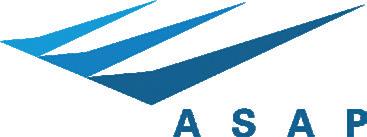
Automated
Systems In Aircraft Performance (ASAP)
W: www.asapinc.net
T: +1 724-742-4777
E: info@asapinc.net
Location: Pittsburgh, Pennsylvania, United States of America
NAME(S) OF PRODUCT(S) MARKETED
• ASAP STAR System
KEY BUSINESS/SOFTWARE AREAS
• Runway Analysis
• Weight and Balance
• OEI Turn Procedures
• Drift Down
• Flt Planning/Sched/Res Integration
Automated Systems in Aircraft Performance, Inc. has been supplying runway analysis since 1995.
The STAR EFB and Flight Operations software would be a great asset by not only improving safety but also saving money through fuel planning and reduced wear on engines through the use of reduced power takeoffs.
The STAR product integrates runway analysis, weight & balance, drift down, flight planning, scheduling, reservations into one easy to use application. Along with these features the product also displays Weather, NOTAMs, and One Engine Inoperative escape routes.
To help manage users, devices, and system updates, the Mission Control Module eases the burden for the IT department. You may distribute the application through the Apple Business Manager for more control over software implementation and updates.
Additionally, the application has the ability to run with and without an internet connection, allowing pilots and dispatchers to always have the ability to calculate performance data. ASAP provides services for all aircraft variations, configurations, and engine types. All in one application.

Avionics Support Group
W: www.asginc.net
T: +1 305-378-9786
E: info@asginc.net
Location: Florida, USA
NAME(S) OF PRODUCT(S) MARKETED
• Cockpit EFB Mounts, EFB Power Supplies.
KEY BUSINESS/SOFTWARE AREAS
• STC Certification
• EFB Mounts
• EFB Power Supplies
• Avionic Products
• Avionics Engineerings
Avionics Support Group, Inc. (ASG) is a premier Avionics Systems Integration & FAA-PMA approved Aerospace Manufacturing and Avionics Engineering company. ASG’s competitive advantage can provide your company with a Single Source Solution for avionics engineering, manufacturing, aircraft installation technical support, Supplemental Type Certificate (STC’s), video surveillance, SATCOM, and much more. We lead the aerospace industry with our US patented Constant Friction Mount (cfMount™), EFB Integrated Power Supplies, and EFB Cradles. Contact ASG today to learn how ASG’s Single Source Solution can work for your company!

ASQS (Advanced Safety and Quality Solutions)
W: www.asqs.net
T: +43 1 306 1234
E: sales@asqs.net
Locations: ASQS GmbH, Vienna, Austria, ASQS Ltd., Bangkok, Thailand
NAME(S) OF PRODUCT(S) MARKETED
• IQSMS (Integrated Quality and Safety Management System)
• Flight Data Monitoring (FDM) Service
• The IQSMS Suite consists of a total of 10 modules, varying according to the operator. (Airlines, Business Jets, Helicopter, Airports, MROs...)
KEY BUSINESS SOFTWARE AREAS
• Quality Management Module
• Reporting Module
• Risk Management Module
• Document Distribution Module
• Emergency Response Planning Module
ASQS (Advanced Safety and Quality Solutions) is a global supplier of highly innovative QMS and SMS software for the aviation industry, supporting more than 200 large and small operators, including airlines, business jet and helicopter operators, groundhandling agents/FBOs, airports and maintenance organizations, in creating a safe and productive work environment.
The company specializes in intuitive, integrated, web-based solutions with exceptional customer support. ASQS’s core product IQSMS allows clients to manage operational data 24/7 online and offline with a single integrated tool which significantly simplifies daily tasks. The easy handling of the software creates a positive reporting culture, enables comprehensive quality management and proactive risk management to maximize productivity, reduce operating costs, and optimize internal and external working procedures. IQSMS automates laborious processes like the submission of ECCAIRS or IDX compliant incident reports which, combined with a consolidated, upto-date regulations database, ensures legal compliance with national and international requirements and standards.

AVIOBOOK
W: www.aviobook.aero
T: +32 11 72 10 30
E: info@avio.com
Location: Belgium (Hasselt), France (Toulouse), Singapore & Piscattaway
NAME(S) OF PRODUCT(S) MARKETED
• AvioBook, AvioBook Connect, AvioBook Cabin, AvioBook Tech, AvioBook Base, AvioBook Systems, AvioBook Data, AvioBook Integrations, AvioBook SaaS
KEY BUSINESS/SOFTWARE AREAS
• EFB software solutions
• EFB hardware solutions
• Suite of ground & flight application
• Navigation DataBase, weather data, ADS-B
AvioBook, a Thales Group company, supports airlines as a partner in their digital strategy. AvioBook offers a comprehensive and highly integrated suite of ground and flight applications, systems and solutions that connect all stakeholders and key assets in a safe and secure manner. This, combined with expertise in data and cyber security, gives airlines an edge through greater efficiency and ultimately sustainable, profitable growth.
Proven solutions from AvioBook make communication between the cockpit, cabin and back office faster and more efficient than even before.
With the integrated and secure AvioBook application suite, pilots, cabin crew, dispatchers and ground staff can be securely connected to each other, making communication more efficient and driving value throughout the operation.

AVTECH Sweden
W: www.avtech.aero
T: +46 8 544 104 80
E: sales@avtech.aero
Location: Sweden
NAME(S) OF PRODUCT(S) MARKETED
• Aventus NowCastTM - The FMS Optimization
• Aventus SIGMA - Severe Weather service
• Aventus AIR — Weather Uplink
• Consulting Service — ACARS and connection
KEY BUSINESS/SOFTWARE AREAS
• Wind Uplink FMS Optimization
• Reduce Fuel burn and CO2 footprint
• Severe Weather application
AVTECH, specializing in tailored information to the cockpit, offers easy, automated and inexpensive improvements in FMS optimization.
The Aventus NowCast™ weather service give pilots access to weather data of the highest available quality, and when the data is fed into the aircraft Flight Management Computer, the actual aircraft trajectory can be optimized, reduce the fuel burn and CO2 footprint.
Working directly with Met Office (UK), the Aventus SIGMA service supply the cockpit crew with severe weather information, based on Actual route and time in the FMS. The service brings adequate, timely and correct information on turbulence, icing and other weather phenomena that affect safety and comfort. The SIGMA service sets a new standard on how, when and where your crew gets their information.
AIRCRAFT IT Operations


The Boeing Company
W: www.boeing.com/supportandservices
T: +1 206-655-2121
E: BoeingSupportandServices@Boeing.com
Location: 65 Offices Worldwide
NAME(S) OF PRODUCT(S) MARKETED
• Business Consulting
• EFB Document Browser
• Electronic Flight Folder
• Fuel Dashboard
• Onboard Performance Tool
KEY BUSINESS/SOFTWARE AREAS
• EFB applications
• Fuel Efficiency Solutions
• Consulting
Boeing is the world’s largest aerospace company and leading manufacturer of commercial jetliners and defense, space and security systems. Boeing Support and Services combines airplane design and manufacturing expertise with unique access to fleet-wide operational data to offer optimization solutions.
With these offerings, Boeing addresses the evolving need for integration and optimization of data and information across the aviation ecosystem to empower smart decision-making. The portfolio includes services and solutions for flight operations, maintenance & engineering and procurement organizations to optimize the operational efficiency of airplanes and operations.
Boeing has more than 250 customers for its optimization solutions. The portfolio draws on solutions from a family of Boeing companies: AerData, Inventory Locator Services and Jeppesen, serving operators of Boeing and nonBoeing airplanes.
Bytron Aviation Systems
W: www.bytron.aero
T: 01652 688 626
E: info@bytron.aero
Location: Kirmington, United Kingdom
NAME(S) OF PRODUCT(S) MARKETED
• skybook aviation cloud
KEY BUSINESS/SOFTWARE AREAS
• Dispatch Portal
• EFB Application
• Airfield Watch
• Flight Following
• Crew Briefing
Bytron Aviation Systems has over 35 years of industry experience and understanding driving the development of solutions engineered to make a big impact in the aviation industry.
The business specializes in the design and building of fully fledged, reliable, integrated systems that ensure critical data is consistently distributed to the right place, at the right time on the right device, increasing awareness and accountability, improving information capture, reducing costs and streamlining workflows. Above all, improving communication between flight ops and flight deck.
skybook is Bytron’s core aviation solution that offers unrivalled flexibility, automation and integration, using the best and most reliable data sources to deliver all vital information across flight ops and dispatch and the flight deck. skybook enables operators and aircrews to work smarter, not harder and the firm’s proven award-winning solutions cover Flight Dispatch, Crew Briefing, Airfield Watch, Flight Tracking plus there is a class leading Electronic Flight Bag application. Contact Bytron today to arrange your introduction and trial.
W: www.comply365.com
W: www.vistair.com
T: UK: +44 (0)1454 616531
T: US: +1 (608) 313-1500
E: info@comply365.com
Location: Bristol, UK (HQ); Beloit, US; Brisbane, Australia
NAME OF PRODUCT MARKETED
• DocuNet
• ProAuthor (XML-Based Authoring)
• SafetyNet
• Training (LMS Learning Manager)
• Data & Analytics
KEY BUSINESS/SOFTWARE AREAS
• Aviation Document Management and Distribution Platform (All format types inc. PDF, XML, S1000D, I Spec 2200)
• Electronic Flight Bag (EFB)
• Flight & Tech Operations
• Data & Analytics
• Aviation Safety Management Software
• Maintenance & Engineering
Comply365 delivers cloud-based solutions to enhance operational efficiency, safety, and compliance in aviation and defense. The suite of technology includes the industry’s leading XML-based authoring solution, enabling seamless creation, revision, and distribution of publications; Comply365’s EFB ensures crews have access to mission-critical information throughout each flight phase.
Comply365’s market-leading document management platform, DocuNet, offers a unified control point for editing, publishing, and distributing operational documentation across web and mobile devices and supports all document formats, increasing productivity by delivering targeted content.
With safety, quality management, training and data analytics solutions driving savings, Comply365 connects reporting to procedural changes. Combining technology, development, and exceptional service delivery, Comply365 empowers commercial airlines, aerospace, and defense organizations to achieve operational excellence. Our focus on secure, mobile solutions ensures that essential information is always at your fingertips.

Conduce
W: www.conduce.net
T: 0044 333 888 4044
E: info@conduce.net
Location: Nuneaton, UK
NAME(S) OF PRODUCT(S) MARKETED
• eTechLog8
• eCabinLog8
• eCentral8
• eTraining8
• eForm8
• eDoc8
KEY BUSINESS/SOFTWARE AREAS
• Electronic Logbook (ELB)
• Cabin Log
• Electronic Forms Designer
• Document Viewer
Conduce pioneer mobile aviation solutions.
eTechLog8 is our world leading Electronic Log Book (ELB), fully approved by multiple Airworthiness Authorities and trusted by customers worldwide.
eTechLog8 eliminates the paper technical, cabin, and deferred defect logbooks, and replaces these with an easy to use, workflow controlled mobile solution. Available on both Windows and iOS, eTechLog8 is fully integrated with all the leading MRO and M&E systems. All eTechLog8 customers report significant benefits, ranging from improved efficiency, data accuracy and consistency to faster turnarounds, all contributing to reduced costs.
Conduce also offers a fully integrated suite of companion applications, which provide mobile paperless solutions for the cabin log, CBT training, custom forms, and ensuring key documents are at your fingertips.
Conduce has a sliding pricing scale, depending on fleet size and operates as a subscription model, with one flat fee, per tail, per month covering everything: hardware, software, 24/7/365 support, mobile data, future proofed upgrades and more. There are no hidden costs. Ask us today for a tailored proposal.
CrossConsense
W: www.crossconsense.com
T: +49 69 4035 7600
E: contact@crossconsense.de
Location: Frankfurt Germany
NAME(S) OF PRODUCT(S) MARKETED
• Aircraft Fleet View
• ACSIS
• AviationDW
KEY BUSINESS/SOFTWARE AREAS
• Support and Hosting
• Consulting and Data Migration
• Business Intelligence solutions
• App and dashboard development
CrossConsense’s portfolio runs from AMOS Support, BIManagement, Data Migration and Hosting to the products Aircraft Fleet View, ACSIS and AviationDW. As a wholly owned subsidiary of Canadian’s FLYHT Aerospace Solutions Ltd., CrossConsense also offers solutions for Fuel Management, Turn Process Management and other software applications as well as AFIRS hardware that collects data during flight.
AMOS Support: CrossConsense has a long tradition in providing support for AMOS with one single point of contact for 1st and 2nd level; also realizing well-planned and organized data migration projects for airline customers and Reporting and Business Intelligence Analytics.
Aircraft Fleet View is a user-friendly App that gives an always up-to-date view on an airline’s fleet status. It indicates AOGs, delays and other important information with the right level of detail to be useful but not crowded with information.
ACSIS is a powerful predictive maintenance software tool developed to assist any airline, operator, MRO facility and OEM to avoid AOGs, delays and turnbacks, improve aircraft utilization, and enhance safety.
AviationDW is a managed data warehouse, tailor-made for use with your backend system, e.g. AMOS. AviationDW simplifies KPI creation based on MRO System data.
EFB Admin Services Int.
W: efbadminservices.digital
T: +47 91689298
E: info@efbadminservices.digital
Location: Norway (HQ), UK, Spain & Türkiye
KEY BUSINESS SOFTWARE AREAS
• EFB Admin services under oro.gen.205
• Evaluation of EFB system & processes
• EFB Hardware & Software consulting
• EFB Connectivity
• EFB Training
EFB Admin Services Int. AS specializes in comprehensive EFB administration, offering unparalleled expertise under ORO. GEN.205 and a suite of cyber security services. With decades of experience in the aviation industry, the business provides tailored solutions across a multitude of aircraft models, including B7x7, A220/3x0, DHC-8, and more, ensuring compliance with EASA, FAA, ANAC and other regulations.
The team excels in both portable and installed EFB systems, offering bespoke training for EFB Managers/Administrators and flight operations staff. EFB Admin Services’ commitment to confidentiality is uncompromising, with strict adherence to NDAs ensuring the protection of clients’ sensitive information.
From Scandinavia to the UK, Spain, and Türkiye, EFB Admin Services’ global reach empowers them to deliver services worldwide, underpinning the aviation industry with robust cyber security certifications. The business’s technical proficiency spans vulnerability assessments, compliance checks, and MDM maintenance, with support for Windows, iOS, Android, and Linux.
EFB Admin Services not only guides clients through the intricate application processes for EFB permits but also provides thorough evaluations of existing systems, ensuring seamless EFB functionality. Their message is, “Partner with us for a secure, compliant, and efficient EFB experience that elevates your airline’s operational integrity to new heights”.

eTT Aviation
W: www.ettaviation.com
T: +1 208-424-9424
E: info@ettaviation.com
Locations: Boise, Idaho, USA
NAME(S) OF PRODUCT(S) MARKETED
• SkedFlex Air Operations Suite
KEY BUSINESS/SOFTWARE AREAS
• SkedFlex FCMS
• SkedFlex Misa
• SkedFlex Flight Planning
eTT Aviation has been providing solutions to airlines for more than 20 years. Crew Companion, which launched at United Airlines in 2002 is still in use by over 16,000 crew members. SkedFlex Air Operations Suite is a comprehensive, flexible, and easy-to-use management software solution for aviation organizations and includes FCMS, MISA, and Flight Planning.
SkedFlex FCMS: Operating an airline safely and efficiently under multiple regulatory rulesets in the US such as 14 CFR parts 117, 121, and 135 and in Canada under CARs 703, 704 and 705 requires modern, sophisticated tools. The SkedFlex Flight & Crew Management System offers the tools to manage complicated scheduling and tracking qualifications, currencies, flight time, duty time and rest, while providing customers with First Class Customer Support.
SkedFlex MISA: eTT Aviation’s Management Information System for Aviation (MISA) provides aviation companies with comprehensive tools to manage their business, including accounting, maintenance, inventory, flight operations, employee training, human resources, payroll, technical publications, Government contract management, and flight school operations.
SkedFlex Flight Planning: Using the latest technology and algorithms SkedFlex Flight Planning is designed to find the optimum route and altitude profile for your flight to ensure you are operating in the most cost-effective way.
AIRCRAFT IT Operations


Evoke Systems
W: www.evoke-systems.aero
T: 03456 521 240
E: info@evoke-systems.aero
Locations: United Kingdom
NAME(S) OF PRODUCT(S) MARKETED
• EFOS Training
• EFOS Documents
• EFOS Leave
• EFOS Shift Log
KEY BUSINESS/SOFTWARE AREAS
• EFOS Training
• EFOS Documents
• EFOS Leave
• EFOS Shift Log
Evoke Systems has a team of versatile and experienced independent specialists in crew training, leave management and information sharing and compliance software, who work closely with their partners — airlines, cargo and low cost carriers, private charter, and the wider aviation industry — helping to improve, streamline, connect and automate systems and processes that impact their people daily.
For over 20 years Evoke Systems has provided airlines with highly effective operational tools, which empower teams and users to carry out their roles safely and efficiently by being more informed, organized, and motivated.
Flatirons
W: www.flatironssolutions.com
T: +1.303.627.6535
E: info@flatironssolutions.com
Locations: Europe, Asia, USA, Middle East
NAME(S) OF PRODUCT(S) MARKETED
• CORENA Suite
KEY BUSINESS/SOFTWARE AREAS
• Content Management System (CMS)
• Interactive Electronic Technical Publisher (IETP)
• Maintenance & Engineering
• Flight Operations
• Tablet Solutions & Mobility
Flatirons provides consulting, technology, and outsourcing for content lifecycle management (CLM). For more than 20 years, we have served global Fortune 1000 customers in aerospace, automotive, electronics, financial services, government, healthcare, and publishing. Our customer engagements help organizations efficiently deliver the right information, at the right time, to the right people by leveraging structured content and digital media — Turning Content into Knowledge®.
The CORENA Suite by Flatirons is the leading content lifecycle management (CLM) solution developed specifically for organizations that rely on mission-critical data to design, manufacture, operate, or maintain complex assets over their product and service lifecycles as well as across multi-echelon business networks. For more than 25 years, the world’s leading airlines, aerospace manufacturers, OEMs, and defense organizations have relied on the CORENA product suite to create, manage, and deliver large volumes of technical information throughout its lifecycle. Today, CORENA customers rely on the CORENA suite to modernize their IT infrastructures, improve customer satisfaction, and maintain their competitive advantage.

Flightman
W: www.flightman.com
T: +353 1 5547203
E: info@flightman.com
Location: Dublin, Ireland
NAME(S) OF PRODUCT(S) MARKETED
• eJourneyLog
• Electronic Flight Folder
• Cabin Manager
• eTechLog
• Cabin Defect Log
KEY BUSINESS/SOFTWARE AREAS
• Connected EFB Applications
• Streamlining Flight Ops processes
• Full Electronic Techlog
• Cabin Defect Management
• Enhanced Passenger Experience
The Flightman solution suite enables airlines to streamline their operational processes across Flight Operations, Maintenance and Inflight Services. Transforming data into meaningful insights.

FlightWatching
W: www.flightwatching.com
E: beaujard@flightwatching.com
E: contact@flightwatching.com
E: romain.blanquet@flightwatching.com
Location: Toulouse, France
NAME(S) OF PRODUCT(S) MARKETED
• APU Fleet Management
• Wilco data platform
• Wilco fuel saving platform
KEY BUSINESS/SOFTWARE AREAS
• APU & nose to tail predictive maintenance
• Fuel saving solutions
• Engine trend monitoring
• Aircraft data market place
• ACARS cost saving solutions
FlightWatching has a high level of expertise in Aircraft systems and data management (QAR, DAR, SAR, ACARS, ACMS). Our solutions are agnostic, do not require any HW nor SW modification and allow real time interaction with the aircraft.
Our customers are:
• MROs looking for solutions to build their own fleet management solutions
• OEMs willing to explore and collect aircraft data related to equipment behavior
• Airlines chasing solution to cut fuel burn on ground
Contact us for your customized digital solutions.

Flygprestanda Performance Engineering
W: www.flygp.se
T: +46 40 642 00 10
E: sales@flygp.se
Location: Malmö/Sweden
NAME(S) OF PRODUCT(S) MARKETED
• GURU2 Aircraft Performance, M&B and AODB App
• DAD — Dynamic Airport Database (AODB)
• Runway Analysis Charts
• Load & Trim Sheets
• Driftdown Analysis
KEY BUSINESS/SOFTWARE AREAS
• Aircraft Performance
• Mass & Balance
• Airport Obstacle Database with Notams and Engine Out Procedures — compatible with Guru2 and any OEM aircraft performance software.
• Integrations with EFB/EFF platforms and Flightplanning software.
• Driftdown analysis
With more than 50 years of aviation experience, Flygprestanda develops EFB solutions for Aircraft Performance, Mass & Balance and has a global Airport Obstacle Database. With performance solutions for more than 300 aircraft types; Flygprestanda is an ideal partner for mixed fleet operators.
The Guru2 Aircraft Performance and M&B App ensures safe flights, minimizes engine wear, maximizes takeoff weight and makes administration straightforward. It includes an AODB and integrates with major EFB/EFF platforms and Flight planning systems. The Guru2 App works offline on iPad or Windows tablets/computers and is accessible online.
Covering more than 10,000 airports worldwide, Flygprestanda’s Airport Obstacle database (DAD) includes obstacle data, NOTAMs and engine out procedures. The DAD is available in Guru2, but it is also compatible with OEM Aircraft performance software.

Flyht
W: www.flyht.com
T: 1-403-250-9956
E: info@flyht.com
Location: Calgary, Canada; Denver, USA
NAME(S) OF PRODUCT(S) MARKETED
• FLYHT AFIRS 228 Iridium SATCOM Solution
KEY BUSINESS/SOFTWARE
AREAS
• Actionable intelligence
• Airborne hardware
• Communications solutions
• Weather sensors
FLYHT’s traditional services are transforming into Actionable Intelligence that integrates the airline, airport and aircraft data into actions that increase profits and an airline’s competitive advantage.
FLYHT’s customers have the advantage of real time data from their onboard AFIRS technologies and every airline can benefit from the integration of the data between airline, airport, and aircraft. With more than 80 airlines operating over 800 aircraft and with 2,000 Airbus installed units we are confident the AI solutions being developed, using our proprietary jetBridge technology, will be well received by our current and future customers
The integration of FLYHT’s traditional real-time AFIRS data services combined with the technology coming of age in other industries such as IoT, Edge computing, blockchain and Cloud infrastructure, along with data capture data from RFID, Wi-Fi, and other devices creates an opportunity for FLYHT’s customers to get maximum benefit from these technologies for little or no capital investment.
Gözen Digital Aviation
W: www.gozendigital.com
T: 902126621050
E: info@gozendigital.com
E: commercial@gozendigital.com
LOCATION: İstanbul
NAMES OF PRODUCTS MARKETED
• Operator
• Simorg
KEY BUSINESS SOFTWARE AREAS
• Planning
• Scheduling
• Training
• Maintenance
• Compliance
Gözen Digital Aviation has its main focus on creating advanced digital solutions in the aviation industry, while also carrying the responsibility of digital strategies and transformation of all group companies. Through utilization of our know-how accumulated from various fields of aviation, GDA aims to create new and functional niches in the digital market.
Simorg redefines simulator flight training management. It offers a comprehensive suite of tools that optimize scheduling, compliance, reporting, and overall training efficiency. Its tech-forward approach combines user-friendly interfaces with intelligent functionalities, allowing for smoother operation and a more agile response to the dynamic needs of the industry.
Operator is a versatile flight operations solution designed to streamline processes, minimize human errors, and provide 24/7 support. Its intelligent automation, customization options, and round-the-clock support make it an invaluable tool for aviation organizations worldwide.
AIRCRAFT IT Operations



Honeywell
W: www.aerospace.honeywell.com
Location: Phoenix, AZ and Atlanta, GA

Ideagen
W: www.ideagen.com
T: 01629 699 100
E: info.marketing@ideagen.com
Location: UK (HQ). Bulgaria. USA. Australia. Dubai. Malaysia. India.
Information Design One
NAME(S) OF PRODUCT(S) MARKETED
• Honeywell Flight Efficiency
• Honeywell Forge Performance+
KEY BUSINESS/SOFTWARE AREAS
• Fuel Efficiency Software
• Flight Data Analytics
• Enterprise Performance Management
• Sustainability Software
Honeywell products and services are found on virtually every commercial, defense and space aircraft in the world. With an unmatched heritage of innovation that spans more than a century, our aim is to solve the greatest challenges CEOs, pilots, operators, passengers, finance, maintenance and cabin crews face — and transform the way we all fly. We deliver improved fuel-efficiency, more direct and on-time flights, and improved operational efficiency through advanced SaaS offerings like Honeywell Flight Efficiency and Honeywell Forge Performance+. With one of the industry’s most comprehensive portfolios of hardware, software, and services, we transform the entire aviation operations ecosystem, from the flight deck to the MRO facility.
Honeywell Flight Efficiency is the industry’s most advanced and capable fuel efficiency and airline data analytics solution. More aircraft rely on Honeywell Flight Efficiency to improve flight efficiency and reduce carbon emissions than any other solution. Often replacing multiple point solutions, our software connects stakeholders across the entire organization to provide a unified source of truth for all operations-related data. Our advanced analytics help users to uncover the hidden potential beyond standard best practices. Even airlines with mature and sophisticated fuel-efficiency programs have unlocked significant additional savings by implementing Honeywell Flight Efficiency.
NAME(S) OF PRODUCT(S) MARKETED
• Ideagen Coruson
KEY BUSINESS / SOFTWARE AREAS
• Incident management & reporting
• Document control & policy management
• Performance monitoring
• Operation risk management
• Audit management
Used by leading aviation organizations, Ideagen Coruson is designed to ensure seamless coordination and enable a holistic approach to safety management, allowing you to optimize incident response and risk reduction strategies for long-term success.
By leveraging real-time data and comprehensive insights, you can make informed decisions and implement proactive measures to enhance safety across your operations.
BENEFITS: A scalable, user-friendly and functionally rich solution that helps build a proactive and risk-aware culture, comply with regulations, and improve efficiency and productivity. • Organization-specific smart forms • Document management and change control • Bowtie risk module and business analytics.
FEATURES: Take real control of the management and governance of quality, risk, compliance and safety across your organization. Minimize risks, anticipate problems, harness knowledge and learning and turn it into actions that will help you thrive. • Action management • Document control and policy management • Audit management • Change control • Business process modelling and automation • Incident management and reporting • Operation risk management • Performance monitoring.
With Ideagen Coruson, embed safety management throughout your organization and promptly respond to current events while proactively analyzing trends to mitigate future risks.
Location: Germany
NAME(S) OF PRODUCT(S) MARKETED
• aFuel
• aWall
KEY BUSINESS / SOFTWARE AREAS
• Fueling Optimization
• Digitalization
• Business Intelligence
• Data Analytics
• Process Improvements
Information Design turns aviation data into valuable and insightful information — with the goal to create information and design it. Based on that philosophy, they’ve developed unique IT solutions and worked with some of the world’s renowned airlines, airports, and aviation corporations.
aFuel — The World’s Largest Digital Fueling Network: aFuel is the system of choice when it comes to digitalizing the operational fueling process. The digital exchange platform connects airlines with a huge load of into-plane agents around the world. Due to its swift implementation and worldwide coverage of airports, airlines benefit right from the start.
aWall — Great Success Arises in Real-Time: aWall is the world’s only aviation real-time dashboard, which unites field-proven live metrics and clear data visualization on top of a scalable and cloud-based business intelligence platform — exclusively developed for airlines, airports, and ATC
Jet Aviation Staffing
W: www.jetaviation.com/services/staffing
T: 1-201-637-2211
E: neil.engerran@jetaviation.com
Location: 47 Locations Worldwide
NAME(S) OF PRODUCT(S) MARKETED
• Permanent & Direct Hire Placement
• Temporary & Freelance Placement
• Outplacement
• Staffing Marketplace
KEY BUSINESS / SOFTWARE AREAS
• Payroll Solutions
• Permanent Placement
• Temporary Placement
• Outplacement
Behind every seamless journey, is the perfect team. Since 1983, Jet Aviation Staffing has been supporting the industry’s most prominent aviation companies by attracting and placing top talent. With thousands of direct hire placements of crew members, maintenance professionals, support staff, management and executive positions, and many more disciplines, Jet Aviation Staffing continues to perfect the art of staffing. When you want to find the very best career opportunity, you can rely on a team of dedicated professionals. On behalf of their external customers, Jet Aviation Staffing upholds in-depth and extensive standards to ensure they are recommending the best talent. Dedicated to the details, Jet Aviation Staffing’s expertise ensures a perfect career opportunity match for each of their candidates and a seamless experience for their customer.
Logipad DextraData
W: www.logipad.aero
T: +49 201 95975 0
E: info@logipad.aero
Location: Essen, Germany
NAME(S) OF PRODUCT(S)
MARKETED
• Logipad
KEY BUSINESS/SOFTWARE AREAS
• eBriefing / EFF
• iOs & Windows EFB Management
• Cloud-based or on prem & fully customizable
• For pilots, cabin and maintenance
DextraData, an IT consulting company and independent software vendor located in Germany, is the company behind Logipad. The Essen-based specialists for digitalization have understood the potential of the solution. Initially, Logipad was developed in 2002. Since then, Logipad has been providing airlines with a trusted Electronic Flight Bag (EFB) solution. Logipad makes flight management simple, fast and smart for pilots, crew and ground staff. Due to a single sync transaction process and modules like document management, eForms and eBriefing / EFF, Logipad reduces paperwork. It focusses on process optimization through digitalization and is flexible and adaptable to the user’s needs. Logipad latest version offers top notch security standards through 2FA.
Furthermore, DextraData’s portfolio includes: Business Consulting, Cloud & Managed Services, IT Service & Enterprise Management, Next Generation Infrastructure, Modern Work / Software Infrastructure and Program & Project Management.

Lufthansa Industry Solutions
W: www.lufthansa-industry-solutions.com
T: +49 40 5070 30000
E: marketing.sales@lhind.dlh.de
Location: Germany, Albania, Switzerland, USA
NAME(S) OF PRODUCT(S) MARKETED
• Volabase
• iFF
KEY BUSINESS/SOFTWARE AREAS
• Process consulting/organization processes
• IT consulting (processes, technologies, infrastructure)
• MRO & Flights Ops consulting
• Program and project management
• Strategy consulting
Whether it’s about developing a company-wide digitalization strategy, networking machines, moving systems to the cloud or providing solutions and platforms for analytics and AI, using IT services to network machines or providing mobile platforms for cross-company collaboration... whenever companies want to address digitalization, Lufthansa Industry Solutions is the right partner.
Lufthansa Industry Solutions combines technical expertise with strong industry knowledge and thus support customers when they introduce new digital technologies. They characterize this as...
“We are at home in the digital world: We are digitalization.”
Lufthansa Systems
W: www.LHsystems.com
T: +49 69696 90000
E: marketing@lhsystems.com
Location: Headquarters: Germany, Locations in 16 countries worldwide
NAME(S) OF PRODUCT(S) MARKETED
• Lido
• NetLine
• SIRAX
• SchedConnect
KEY BUSINESS/SOFTWARE AREAS
• Operations Solutions
• Flight Deck Solutions
• Commercial Solutions
• Finance Solutions
Lufthansa Systems is a leading airline IT provider determined to shape the future of digital aviation. It draws its unique strengths from its ability to combine profound industry know-how with forward-looking technological expertise for more than 25 years. The company offers its more than 350 airline customers an extensive range of successful and, in many cases, market-leading products. These innovative IT products and services cover all of an airline’s business processes — in the flight deck, in the cabin and on the ground — and offer customers a wide range of economic benefits while also contributing to improving efficiency and competitiveness. In addition, Lufthansa Systems supports its customers both within and outside the Lufthansa Group with consulting services and the experience it has gained in projects for airlines of every size and business model.
Lido — integrated solutions for every phase of the flight.
NetLine — the integrated scheduling and operations solution from planning until the day of operations.
SIRAX — our portfolio of integrated solutions provide 360° financial process coverage.
SchedConnect — ideal codeshare connections including schedule data exchange and a central flight repository.

Motulus.aero
W: www.motulus.aero
T: +44 7932 173833
E: steven.rushworth@motulus.com
Location: Hoboken (Antwerpen), Belgium
NAME(S) OF PRODUCT(S) MARKETED
• Integrated Crew Scheduling (Pairings and Rostering), Tail Assignment, Network Optimization and Schedule Building
KEY BUSINESS/SOFTWARE AREAS
• Motulus Integrated Crew Scheduling (MICS)
• Motulus Tail Assignment (MTA)
• Motulus Network Optimization (MNO)
For many airlines operating costs, fuel and crew costs form a significant part of their cost base. The delivery of an efficient and robust plan whilst continuing to guarantee an excellent customer offering and employee satisfaction is critical to an airlines success, The complexity of such a plan, and its importance to an organisation makes creating schedules and operational plans ideal candidates to be solved by optimization.
At Motulus.aero we enjoy solving the problems that haven’t been solved before by deploying the next generation in optimization products. By combining pioneering algorithms with the power of cloud computing we are able to tackle these complex and large scale problems.
Specialising in crew scheduling (pairing and roster production), tail assignment and network optimization we help organisations to reduce crew costs, increase aircraft and equipment utilisation, reduce fuel and operational costs, improve revenue opportunities, increase crew and colleague satisfactions, and improve operational robustness.
Having deployed products to a number of industries Motulus had an original mission in aviation to develop innovative products for airline crew resource scheduling problems. Following successful implementations with two European airlines the teams expertise has now been stretched to solve network optimization and tail assignment problems.

Nabla Mobility
W: www.nabla-mobility.com
E: tanaka.shinji@nabla-mobility.com
Location: Tokyo, Japan
NAVBLUE an Airbus
Company
W: www.navblue.aero
E: communications@navblue.aero
Location: 2 Rond-Point Emile Dewoitine, 31700 Blagnac, Toulose, France. Waterloo, Canada; Hersham, UK; Stockholm, Sweden; Bangkok, Thailand; and Gdansk, Poland
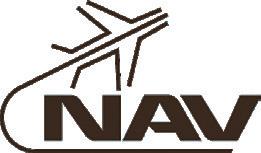
NAV Flight Services
W: www.nav.aero
T: (+420) 724 848 476
E: nav@nav.cz
Location: Prague, Czech Republic
NAME(S) OF PRODUCT(S) MARKETED
• Untangle API
• Weave
• Sandbox`
KEY BUSINESS SOFTWARE AREAS
• Integration
• Turbulence prediction / avoidance
• Weather data
• Fuel efficiency
Nabla Mobility has employed various efforts to decarbonize Mobility. However, most initiatives are ‘Manufacturing focused’ and not from an ‘Operation of fleets’ perspective. It is a widely known fact that decarbonization of the aviation industry will not be achievable simply by switching aircraft and fuels to those with lower carbon emissions. Nabla Mobility aims to innovate mobility by optimizing the ‘Operation of Fleets’ with technology.
NAME(S) OF PRODUCT(S) MARKETED
• Electronic Flight Bag applications
• Fuel applications
• Dispatch & Crew Planning
• Airspace & Airport Consulting
KEY BUSINESS/SOFTWARE AREAS
• Electronic Flight Bag & Documentations
• Fuel Solutions
• Ops Control Center Solutions
• Consulting
• Flight Data Analysis
NAVBLUE is a leading services company, wholly owned by Airbus, dedicated to Flight Operations solutions and services for airlines and aircraft operators, on the ground and onboard. NAVBLUE combines aircraft manufacturer expertise, flight operations know-how and agile development to enhance operational efficiency, optimize resources and increase productivity, for a safe and sustainable aviation.
NAVBLUE delivers a reliable, optimum and customized user experience to more than 600 customers worldwide, in a range of areas, including digital cockpit operations, Operations Control Centre (OCC) systems, Flight Ops Engineering and Performance Based Navigation (PBN). NAVBLUE employs 500 employees spread across the world, with offices in Canada, France, Poland, Singapore, Sweden, Thailand, UK and US and representatives in several other countries across the globe.
NAME(S) OF PRODUCT(S) MARKETED
• NAVsystem
• NAVlink
• NAV Academy
• NAVtracker
• NAVjet
KEY BUSINESS/SOFTWARE AREAS
• Flight Planning
• FPL and Wind
• Training
Having provided professional flight planning services for over 30 years, NAV Flight Services offers a wide range of products and services. Key products, include: NAVsystem, the IFR Flight planning system, is the perfect tool for economical and safe flight planning. The optimum route function allows you to perfect fuel consumption. Every calculation is based on individual performance data. It puts emphasis on simplicity and intuitive user interface. NAV Flight Services never stops updating the software, recently launching their latest product NAVlink, enabling FPL and wind uplinks to FMS via ACARS.
NAV Flight Services runs the Education and Training Center NAVacademy — where they combine theory with practice. The NAVacademy provides you and your flight dispatchers with all-in-one training. NAV Flight Services is also ready to accommodate any individual training requests. Training sessions are led by qualified professionals with many years of experience.
Individual consultations will answer all the questions you have about OCC systems, Datalink, EFB, A / C performance, flight efficiency, complex system integration and more. NAV Flight Services also helps clients to develop solutions in these areas and tailor them for their specific flight operations.
The selection of services wouldn’t be complete without our very own NAVjet supervising.

NVable
W: www.nvable.com
T: +44 141 280 0050
E: contact@nvable.com
Location: UK
NAME(S) OF PRODUCT(S) MARKETED
• ConNVerge for Aviation
KEY BUSINESS/SOFTWARE AREAS
• Electronic Techlog
• Electronic Forms (Assessments)
• Document Management
• Operational Analysis
• Station Operational Compliance
The concept behind our CoNVerge platform is simple. We believe that businesses should have the flexibility to easily innovate and add new applications to their toolbox, without being stifled by legacy technology or a single technology brand.
CoNVerge is all about minimising risk, fuss and capital costs and maximising efficiency. Provided as a service, it combines a hosted environment and web portal with mobile applications and data interfaces to virtually any system.
The platform is easily integrated into your existing business systems and brings together the best tools to handle data acquisition and data analysis — all on scalable infrastructure. Best of all, we even take the day-to-day management off your hands.
Our CoNVerge platform is blazing a trail in the aviation sector. In a hi-tech industry, where the stakes are even higher, longstanding clients such as British Airways Cityflyer know they can rely on NVable and our custom-designed software to make things simple, safer, more secure and streamlined. We provide airlines with technology solutions that reduce effort, improve processes and produce useful information, with one simple goal — to change things for the better.
Bring everything together and do IT better when you bring onboard CoNVerge and NVable.

OpenAirlines
W: www.openairlines.com
T: +33 (0)5 31 61 52 18
E: stephane.nitenberg@openairlines.com
Location: France, Hong Kong, USA, Canada
NAME(S) OF PRODUCT(S) MARKETED
• SkyBreathe® Analytics — Fuel management software
• SkyBreathe® MyFuelCoach — Pilot engagement app
• SkyBreathe® OnBoard — Real-time eco-flying app
• SkyBreathe® APM —
Aircraft Performance Monitoring
• SkyBreathe® OCC — On-time performance analysis
KEY BUSINESS/SOFTWARE AREAS
• Fuel Efficiency
• EFB app for In-flight optimization
• Aircraft Performance Monitoring
• CORSIA & EU-ETS Management
• On-time performance analysis
Starting from the observation that every year, nearly 660 million tons of CO2 are emitted by airplanes, i.e. more than 20 000 kilos of CO2 per second, OpenAirlines has developed innovative solutions to help airlines reduce their costs and environmental impact.
Drawing on eight years of R&D, SkyBreathe® came into the market in 2013 as an innovative eco-flying solution based on Cloud, Artificial Intelligence, and Big Data to save fuel and reduce airlines’ carbon footprint by up to 5%.
Every department contributes to a safe and efficient fuel culture. That’s why SkyBreathe® is a 360° eco-flying platform designed to connect all stakeholders — Chief Pilots, Fuel Managers, Dispatchers, Pilots, and Performance Engineers, to name a few. The platform provides all the tools they need to build and grow a successful fuel efficiency program without juggling many different tools.
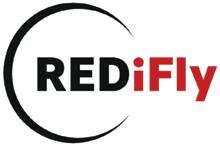
REDifly
W: www.redifly.com
T: +41 43 555 31 65
E: las@redifly.com
Location: Switzerland (HQ), Ireland
NAME(S) OF PRODUCT(S) MARKETED
• REDiFly Pilot Log
• REDiFly Tech Log
• REDiFly Cabin Log
• REDiFly Command (Ground System)
• REDiFly Core (Integration Module)
KEY
BUSINESS/SOFTWARE AREAS
• Full Electronic Technical Logbook
• Digitization of paper process
• Data harvest, storage & analytics
• Maintenance and scheduling integration
• CAME & compliance support
• Defect management
REDiFly delivers a sleek and modern Electronic Technical Logbook. We are an independent, data-driven company that offers bespoke software solutions for the aviation industry. We provide a comprehensive framework that can integrate with an airline’s current systems, including MRO, flight scheduling, and crew management, amongst others.
What do we do? At REDiFly we work with the key people involved in digitizing your current paper-based aircraft technical logbook. In doing so, we increase levels of safety and regulatory compliance, streamline flight-to-ground connectivity and enable digital archives of secure and searchable aircraft records. We provide a seamless intersection between flight operations and aircraft maintenance to minimize communication errors while maximizing the efficiency of daily operations.
What makes us different? We are an independent company that applies a user-centric approach by working closely with our customers through the onboarding, trial and go-live phases of an implementation. Our flexibility means that REDiFly adapts to your current processes rather than the other way around.
The SA Group
W: www.scanav.com
T: +45 7950 8000
E: sa@scanav.com
Locations: Denmark, Sweden, Norway, Czech Republic, Greece, Bahrain, CIS, India and Malaysia
NAME(S) OF PRODUCT(S) MARKETED
• Scandinavian Avionics’ Tablet Based EFB Solution
KEY BUSINESS/SOFTWARE AREAS
• Electronic Flight Bag Solutions
• Avionics Certification
• Avionics Installation
• Avionics Maintenance, Repair & Overhaul
• Avionics Training
Scandinavian Avionics offers a state-of-the-art, futureproof, tablet based Class 2 EFB solution, which provides the functionality to meet today’s operational requirements of airlines and aircraft operators and in addition is simple to upgrade in the future to meet coming requirements.
The concept consists of two ruggedized 10.1” Panasonic tablets installed in the cockpit combined with a data integration center and a communication unit installed in the avionics compartment. The data integration center is used for power, aircraft interface and server capability and the communication unit enables and controls the data communication between the EFB system and the airline’s ground infrastructure.
The SA Group provides complete turn-key avionics solutions for civil and military aircraft.

SITA FOR AIRCRAFT
W: www.sita.aero
E: worldwide@sita.aero
Location: Switzerland - Regional offices: Spain, France, Canada, USA, UAE, UK, Brazil and Singapore
NAME(S) OF PRODUCT(S) MARKETED
• SITA Flight Folder
• SITA eWAS
• SITA OptiFlight®
• SITA Mission Watch
• SITA Mission Control
• SITA Safety Cube
KEY BUSINESS/SOFTWARE AREAS
• Connected EFB Applications
• Weather Situation Awareness
• Inflight Fuel Burn Optimization
• Cross-Functional Collaboration
• Safety Management
SITA For Aircraft represents the aircraft arm of SITA. SITA is the IT provider for the air transport industry, delivering solutions for airlines, airports, aircraft and governments. Today, SITA drives operational efficiencies at more than 1,000 airports. SITA’s technology provides solutions that help more than 40 governments strike the balance of secure borders and seamless travel, while delivering the promise of the connected aircraft to more than 400 airlines on 17,000 aircraft globally.
SITA is powering a digital shift to make air travel more connected, seamless, efficient, safe and sustainable. Its communications network connects every corner of the globe and handles vast volumes of data every second.
SITA is 100% owned by the air transport industry, with a presence in 200 countries and territories and a customer service team of more than 2,000 people around the world.
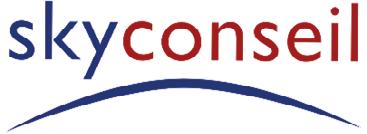
Skyconseil
W: www.guidor.fr
T: +33 972 331 978
E: contact@skyconseil.fr
Location: Toulouse, France
NAME(S) OF PRODUCT(S) MARKETED
• GUIDOR
KEY BUSINESS SOFTWARE AREAS
• EFB Mission Management
• Situational Awareness
• Adverse Weather Analysis
• Flight path optimization
Developed by Skyconseil, GUIDOR is the premier mission management app designed to revolutionize the way pilots manage their flights.
GUIDOR leverages advanced IoT and AI technologies to provide pilots with real-time data and actionable insights. By not only displaying weather data but also using it to offer powerful situational awareness tools, GUIDOR ensures that pilots receive the right information at the right time, enhancing decisionmaking and flight safety.
GUIDOR significantly increases safety by reducing the risk of weather-related accidents through timely alerts and predictive analytics. Its advanced features streamline flight operations, boosting efficiency and leading to higher customer satisfaction and brand loyalty. Additionally, GUIDOR’s intelligent routing and fuel optimization contribute to a reduced environmental footprint, aligning with the industry’s sustainability goals.
With GUIDOR, pilots and airlines can achieve unprecedented levels of operational excellence, safety, and environmental stewardship, making GUIDOR an indispensable tool for modern aviation.

SkyNet Aviation
W: www.skynetaero.com
T: +61 7 3860 5511 (Option 1)
E: sales@skynetsatcom.com
Location: Brisbane, Ausralia
NAME(S) OF PRODUCT(S) MARKETED
• SkyNet Aviation REACH
• Number of modules: 5
KEY BUSINESS SOFTWARE AREAS
• REACH Aero
• REACH LASAW
• Operations Control Centre (OCC)
• REACH Consulting
SkyNet Aviation provides web-based Operations Control Centre (OCC) software and services for aircraft operators.
REACH® Aero provides: Centralized day-of-ops software web platform; Flight Following and Monitoring; Scheduling, Crewing, and Rostering; Flight Dispatch (direct integration with Boeing ForeFlight); Engineering Planning; On-time Performance (OTP) tracking and reporting; Post-flight data analytics; Thirdparty API integration; and proprietary technology merges all aircraft tracking sources (ADS-B, satellite, ACARS, cellular) into one interface
REACH® LASAW provides: Landing Approach Surveillance and Warning; Combined hardware/software solution; Pre-landing alerts and warnings; Surveillance for incorrect approach path; and Longer range flight tracking and notification through ADS-B
REACH® OCC provides: Installation and support for REACH® Aero in your OCC; and Third-party OCC services including overnight coverage and charter support
REACH® Consulting provides: Bespoke consulting services for your OCC; SOP and Operations Manual writing; Audit preparation and support; and OCC layout and design.
SkyPath
W: skypath.io
T: +972-3-9003510
E: Contact@skypath.io
Location: Tel-Aviv, Israel; USA
NAME(S) OF PRODUCT(S) MARKETED
• SkyPath™ Turbulence
• SkyPath™ PIREPS
• SkyPath™ data services
KEY BUSINESS/SOFTWARE AREAS
• EFB iOS App
• Dispatch flight planning WEB module
• Management Analytics and Bi
• Incidents and playback Debrief
• EFB and WEB integration SDK & APIs
Skypath is world’s leading turbulence and auto-PIREPs data service provider whose alert system improves cabin safety and cuts airline operating costs. Established in 2015, It is a one-of-akind software-only solution which provides unique turbulence data based on a smart patented algorithm.
SkyPath already has more than 30K subscribers, including major US airlines. Airlines using SkyPath join a larger crowdsourcing network, and gain access to turbulence mapping generated using SkyPath’s patented AI technology and real time airborne data collection. SkyPath provide service to thousands of users a day and is becoming the industry gold standard

Smart4Aviation
W: www.smart4aviation.aero
T: +31 20 654 1824
E: info@smart4aviation.aero
Location: Netherlands, Poland, Canada, USA
NAME(S) OF PRODUCT(S) MARKETED
• Smart LOAD, Smart COMM, Smart BRIEF
• Smart VIEW+, Smart OPERATIONS MANAGER
KEY BUSINESS/SOFTWARE AREAS
• Weight and Balance
• Communication and Alerting
• Pilot and Cabin Crew Briefing
• Flight Planning and Tracking
• Fleet Management
Smart4Aviation is one of the fastest growing companies in aviation operations, founded to provide web and mobile based products and services designed to optimize, simplify and improve airline operations. Our company is committed to delivery of the highest quality, most innovative and costeffective, state-of-the-art solutions to support all of your current and future operational business needs. Our products effectively manage all operational business units, such as Operations Control Management, Load Planning and Weight & Balance, Communications (all Operational and Corporate branches), Flight Planning, NOTAM Management, Flight Dispatch, Flight and Cabin Crew Briefing, Weather, Flight Tracking and Aircraft Performance.
Our web based and mobile solutions with an exceptional support are recognized within the industry as being some of the most dependable and innovative in the market. All of our current customers such as among others Air Canada, Delta Air Lines, Qantas, Emirates, Air France, easyJet, Alaska Airlines, Iberia and Cebu Pacific have all benefitted from implementing Smart4Aviation solutions.
Smart4Aviation’s web and mobile-based solutions have been acknowledged as the “Smart Choice” within the industry by a number of international and domestic air carriers.

StorkJet
W: www.storkjet.com
T: +48 600 800 528
E: info@storkjet.com
Location: Poland
NAME(S) OF PRODUCT(S) MARKETED
• FuelPro – Fuel Efficiency Dashboard
• AdvancedAPM – Aircraft Performance Monitoring
• FlyGuide – EFB app to engage pilots
• FlyGuide FPO – Flight Path Optimization Module
KEY BUSINESS/SOFTWARE AREAS
• Fuel efficiency
• Flight Path Optimization
• EFB app
• Aircraft performance monitoring
• Idle Factor
StorkJet offers comprehensive, tailor-made fuel efficiency solutions for all aircraft types. Our mission is to help airlines save fuel and reduce emissions by analyzing flight data. StorkJet product portfolio consists of:
FuelPro — AI-powered dashboard revolutionizing fuel management across 47 initiatives, designed to maximize savings in every flight phase.
FlyGuide — AI-driven engaging EFB app designed by pilots for pilots, which helps prepare for the flight and shares reliable and intuitive feedback.
FPO — Flight Path Optimization app that provides pilots with optimum speeds and altitudes for climb, cruise, and descent, utilizing high-resolution weather data and tail-specific performance models.
AdvancedAPM — Aircraft Performance Monitoring software that provides up-to-date performance factors for accurate fuel planning.
Idle Factor — for descent optimization.
In 2023 StorkJet helped its customers save over 67 million USD and reduced carbon emissions by 234k tones. These achievements have earned StorkJet several awards, including being selected as the world’s best technology company operating in the area of big data and deep tech.

Taillog
W: www.Taillog.aero
T: +45 5382 0483
E: sales@taillog.aero
Location: Roskilde, Denmark
NAME(S) OF PRODUCT(S) MARKETED
• Taillog EFB
KEY BUSINESS/SOFTWARE AREAS
• Digital OFP
• Weight & Balance
• Journey-/Techlog
• Data Analysis tool
• Aircraft Data integration
TAILLOG EFB System is a fully integrated EFB and flight progress tool containing your flight plan details, company documents, weather charts and NOTAM’s, to name a few. The digitalization of the workflow amongst operators is of high priority to Taillog EFB System and they have achieved this with a ‘Go for Simplicity’ approach ensuring satisfaction amongst their customers.
TAILLOG interfaces with pre- and post-flight systems and enables both automatic and manual control, supporting calculation of abeam times and fuel consumption thereby eliminating miscalculations and human errors. Their EFB is continuously evolving based on the market developments and Taillog’s latest capability of retrieving, utilizing and distributing data from the aircraft directly within their EFB, which is truly optimizing the efficiency amongst operators throughout their respective departments.
The Weather Company
W: www.weathercompany.com
T: (800) 872-2359
E: aviationsales@weather.com
Locations: USA, UK
NAME(S) OF PRODUCT(S) MARKETED
• Fusion
• Pilotbrief
• Total Turbulence Alerting
• Weather Forecast Services
KEY BUSINESS / SOFTWARE AREAS
• Weather infused flight tracking
• EFB weather application
• Turbulence Alerting via ACARS
• Terminal, en route & IROPS Forecast
The Weather Company, specializes in providing advanced weather solutions to the aviation industry, addressing the critical challenges faced by dispatch, pilots, and operations. These teams operate under high pressure, monitoring multiple systems for essential information to maintain safety and efficiency. With nearly 75% of air traffic delays attributed to inclement weather, costing the airline industry billions annually, there’s a pressing need for accurate, comprehensive, and actionable weather data.
The Weather Company’s aviation solutions portfolio is designed to enhance operational decisions, ensuring flights are safe, efficient, and profitable. By leveraging precise, personalized weather insights, airlines can reduce operational costs, minimize weather-related disruptions, and improve the passenger experience. These solutions include applications, expert forecast services, and access to a wealth of weather data.
With nearly three decades of aviation forecasting expertise, The Weather Company equips its customers to manage disruptive weather efficiently, ensuring safety, compliance, and exceptional passenger experiences. They help you navigate the complexities of weather impacts, enabling informed decision-making for better operational outcomes.
TrustFlight
W: www.trustflight.io
T: 44 (0) 330 229 0219
E: info@trustflight.io
Location: Leamington Spa, UK; Edinburgh, UK; Luton, UK; St Helier, Jersey
NAME(S) OF PRODUCT(S) MARKETED
• Tech Log, Task Cards
• Digital Logbook
• CAMO (service)
• Aircraft Registry (service)
KEY BUSINESS/SOFTWARE AREAS
• Aircraft log books
• Aircraft maintenance task cards
• Digital and paperless working
• CAMO support
• Aircraft Registry support
From inception, TrustFlight has been ingrained in the aviation industry. Founded by two commercial pilots with a proven track record at the intersection of technology and business, the business has grown considerably and with stability, having recently celebrated the opening of a fourth office.
Throughout, TrustFlight gained an incredible team with backgrounds spanning different areas of aviation and technology, ensuring a solid presence in the industry. Now offering a range of products and services within the sector, TrustFlight helps to remove costly paperwork and associated errors, preserve aircraft value, and increase efficiency and safety in aircraft operations.
Five values shape TrustFlight’s culture, guide the business’s work and the way it grows. Integrity Transparent and open: offering trust to partners and assuming it from them. Responsibility Owning the work they do and taking responsibilty for it: striving to make it the best possible. Leadership Leading from within: providing support for the team to do incredible work and drive the industry forwards. Innovation Products are crafted for the future needs of the industry, going beyond what exists in the market. Excellence Every one of TrustFlight’s values contributes towards the excellence in their products.

Ultramain
W: www.ultramain.com
T: +1.505.828.9000
E: sales@ultramain.com
Location: Albuquerque, New Mexico, USA
NAME(S) OF PRODUCT(S) MARKETED
• ULTRAMAIN® v9™ M&E / MRO
• ULTRAMAIN Mobile Mechanic™
• ULTRAMAIN Mobile Inventory™
• ULTRAMAIN ELB™
• ULTRAMAIN M&E / MRO: 31 modules including: Configuration Management; Line/
Base Mx Planning; Line/ Base Mx Scheduling; GATe; Quality Assurance; Asset Management
KEY BUSINESS/SOFTWARE AREAS
• Maintenance & Engineering
• MRO
• Military Maintenance
• Maintenance Planning & Scheduling
• Paperless Customer Care on Mobile Devices
• Electronic Technical Logbook
Ultramain Systems, Inc. develops M&E / MRO and ELB software for the aviation industry and is the only aviation software provider with customers running full, end-to-end paperless operations from the cockpit to the ground.
ULTRAMAIN v9, featuring Mobile Mechanic and Mobile Inventory enables real-time paperless data collection for the full maintenance and inventory process. Combine ULTRAMAIN v9 with ULTRAMAIN ELB, the easy-to-use electronic logbook, and the entire maintenance process becomes paperless. Contact us to learn what you need to equip your organization with customer mobile devices and see why elite aviation customers around the world are choosing ULTRAMAIN to reduce costs and increase aircraft up time.

Web Manuals International
W: www.webmanuals.aero
T: +46 (0)40 694 10 40
E: info@webmanuals.aero
Location: New York, San Diego, Singapore, Sydney and Malmö, Sweden
NAME(S)
OF PRODUCT(S) MARKETED
• Web Manuals
KEY
BUSINESS/SOFTWARE AREAS
• Monitoring
• Authoring
• Editing
• Publishing
• Distribution
Web Manuals is an all-in-one Document Management System designed with the needs of aviation professionals at heart. This revolutionary platform streamlines the entire documentation process, from editing, reviewing, to distribution and monitoring, saving you up to 80% of your time spent in the documentation process. The cloud-based software not only simplifies the documentation process but also eases the burden of regulatory compliance through automated smart modules.
With Web Manuals, you can easily connect your documents with regulations. Web Manuals is integrated with compliance libraries worldwide, including EASA, FAA, CASA, OTAR, and many other standard regulations. The system automatically generates alerts to keep you updated about any changes. Stay ahead of the game with an easy-to-update platform that ensures you maintain compliance for every audit.
By turning what was initially a labor-intensive task into a seamless operation, Web Manuals is undoubtedly pioneering the digitization, authoring, and distribution of operational documentation. Our platform is more than just a tool - it’s a solution that allows you to focus more on the manual content and spend less time on editing details.
Web Manuals is rapidly expanding its global footprint. It has more than 650 customers and partners worldwide, and offices in New York, San Diego, Singapore, Sydney and Malmö, Sweden.

Yonder
W: www.yonder.info
T: +41 43 215 27 94
E: contact@yonder.info
Location: Zurich, Switzerland
NAME(S)
OF PRODUCT(S) MARKETED
• Yonder
KEY BUSINESS/SOFTWARE AREAS
• Smart Documentation Management
• Knowledge Management System
• Workflow-based Content Distribution
• Compliance Tracking
• Content-based Learning
Yonder leverages the full potential of digitalization with dynamic content rather than static documents to provide innovative solutions for operations manuals, guidelines, regulations, and standards.
Yonder brings all documents together; smart documents make life much easier for aircrews and ground staff:
· Dynamic content: Moving beyond PDFs with user-specific profiles — end users always get the right information at the right time.
· Personalized change updates: Tell specific user groups an update has been made and ask for a read receipt if required.
· Native offline apps: all content available anytime, anywhere.
Yonder also has many advantages for document managers:
· Smart workflows: Revision- and document-specific workflows enable authorized users to trigger, discuss, check and approve changes effortlessly in fully-integrated solution.
· Automate manufacturer revisions: OEM Manuals automatically imported and revised — even if customized by the operator.
· Compliance connector: Content can be linked with regulations and standards and a workflow is automatically triggered whenever these change, ensuring full compliance.

Join Aircraft IT & Aircraft Commerce at the industry-leading Annual Flight Operations Conference in London

